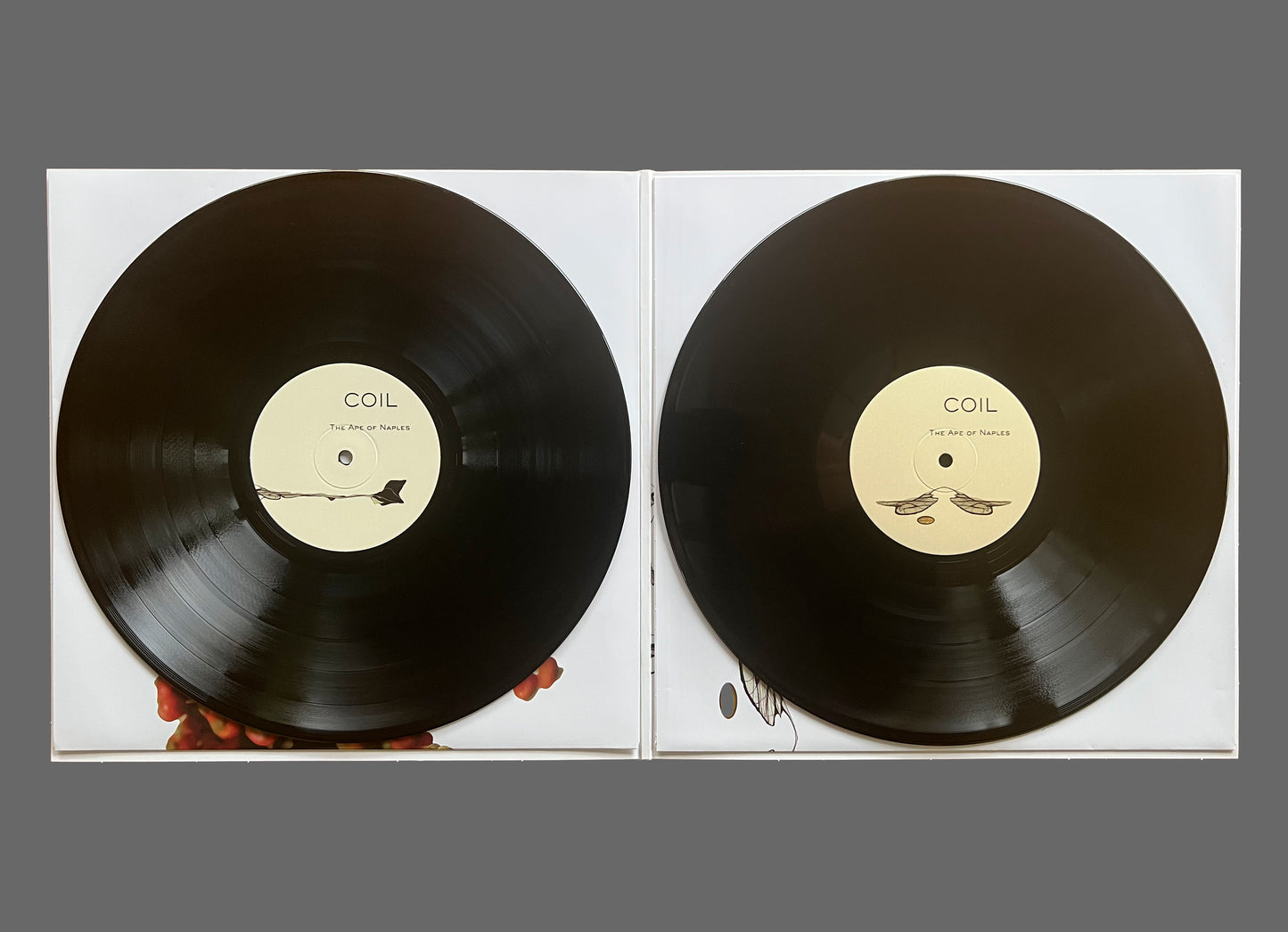Aaron DIlloway - Medicine Stunts 12" (PSR029)
12"
Design by Grant Corum
Mastered by Nicolás Carcavilla at Galapex Orpheus Studio
Pressed at Outta Wax
Includes download code
Edition of 500
Description via Psychic Sounds:
Long awaited release of Aaron Dilloway’s foreboding ’ambient’ works with Psychic Sounds' initial selection entitled “Medicine Stunts’: Two sprawling sides of atmospheric practices & mysterious meditations fully mastered & pressed on wax for the first time, all which include the glacial ‘Stunt 1’ of sparse industrial factory mesmerization invoking shadowed moments reminicent of the beloved David Lynch & Alan Splet's Eraserhead soundtrack. Dilloway's tape chops glide into glass harmonic chamber echos calling on such spirited reverberations by way of crystallophone, Aeolian harp, or even frequencies recalling Coil's experimental investigations on the legendary Soviet-era ANS photoelectric synthesizer. In this instance, a distant alien cooing along the liminal glassy seam is introduced alongside slow pumping mechanical wield, and further minimal creature calls reminiscent of the stranger field recordings documented on Folkways 'Sounds of the Sea' or Amphibian related releases.
Flipside 'Stunts 2 & 3' brings the gurgling & juggling metallic slabber warbled in a box bleeding into slight fuzz unknown, all which gently wades into a pulsating pump of squells.... it all certainly stirs a flavor of your regional moldy spook house attraction soundtrack crackling through the busted sound system. If this isn't enough for the adventurous listener , a suspenseful end event on the horizon offers us an unsettling whistle in the Old West Morricone ghost town. A beautifully haunted hallway of reflected recourse through the reality of the unsettling American jokes & labyrinths of now.
Share




Sledgehammer (1983) 2-Disc Deluxe Edition Blu-ray/CD
Blu-ray + CD
Housed in hard box slipcase
5.5" x 6.75" 32 page perfect bound booklet
4" x 6" postcard
10.5" x 17" poster
Released by Terror Vision in cooperation with Intervision
No one has dared enter this house for nearly ten years since a young couple from the valley were brutally murdered by a madman with a sledgehammer. No one…until now. They would not be alone. There was something evil in the house. The kind of thing no one believes in, yet everyone fears. Something that moves only through the still of the darkest nights, creeps within the shadows of man’s deepest fears and strikes without warning. Something which does not want them in this house yet cannot allow them to leave. The night will be shrouded in their fear, stained with their blood.
The nightmare has begun! God help them!
Terror Vision in partnership with Severin Films, are thrilled to bring the pinnacle of SOV to Blu-ray for the first time in the world! Sledgehammer is sourced w/ a new transfer from a master tape to bring this bloodshed to you in the best way possible. Loaded with new and old extras - this marks the definitive release of this classic horror film. Thank you to our pals at Severin for making this nightmare come true.
This hard box, booklet, and CD is limited to 1500 and will not be repressed.
Share







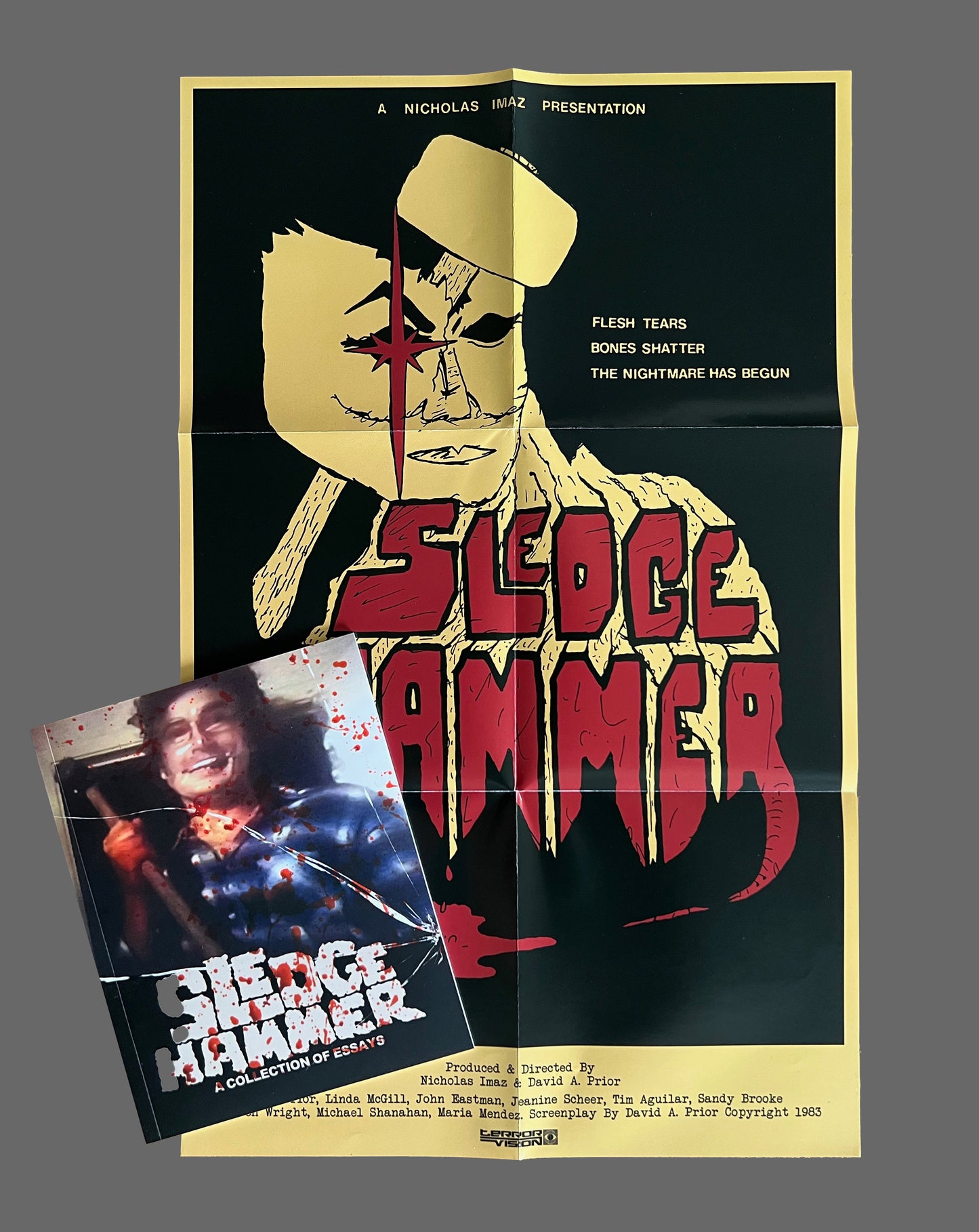
Roland Kayn - Elektroakustische Projekte & Makro 5CD Box
5xCD Boxset
Include 16 page booklet
Reiger-records-reeks - KY-CD2501-05
Building upon the ground of their previous “Infra”, “Scanning”, and “Tektra” collections, Reiger Records Reeks continues its dedication to Roland Kayn’s monumental back catalog, delivering “Elektroakustische Projekte & Makro”, a towering 5CD box set reissuing two of the composer’s most important bodies of work for the very first time since their respective original releases in 1977 and 1981. Fully remastered from the original analog tapes by none other than Jim O’Rourke - allowing a number of the pieces to be heard without breaks for the very first time - this collection amounts to some of the most significant efforts in Kayn’s pioneering work in the field of cybernetic music, further illuminating him as one of the most radical and groundbreaking creative voices of the 20th Century and beyond.
This box set includes the tracks from legendary opuses MAKRO I, II, III, created at the Institute for Sonology, and Elektroakustische Projekte, featuring works like Cybernetic I, II, and III, which were recorded at the Studio di Fonologia in Milan, alongside Entropy PE31, Monades, and Eon. These pieces – previously available only on rare out-of-print vinyl editions – highlight both Kayn’s innovative approach to musical structures and his significant impact on the development of electronic and cybernetic compositions.
Share




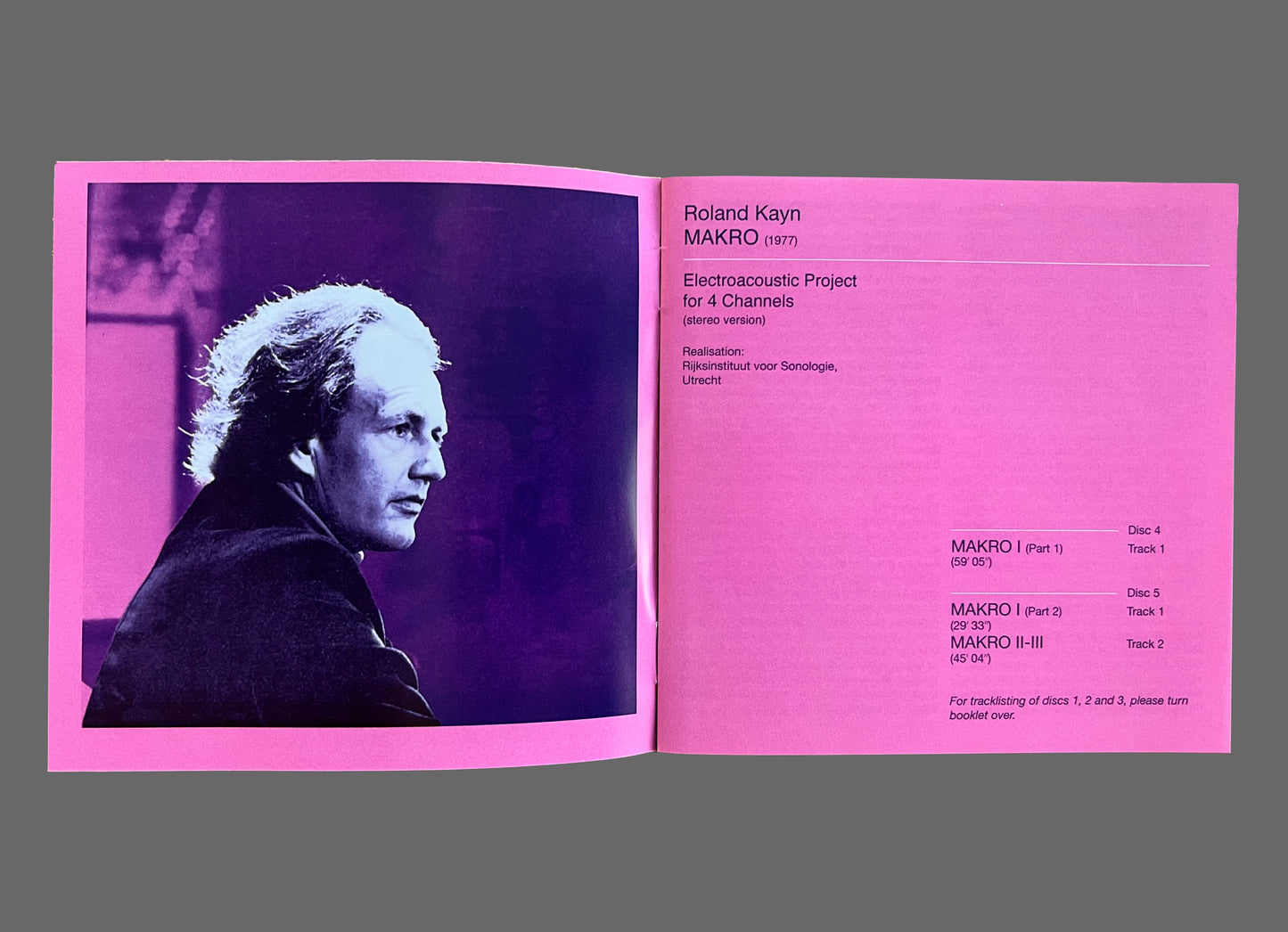
Trabant - Trabant II LP (purrrrrj044)
Purge.xxx has generously gifted an additional collection of unreleased material from the Hungarian art rock / post punk group / collective Trabant.
‘Trabant II’ is housed in a stunning one-color silk screened craft sleeve and includes a 20 page folded and stapled booklet containing an extensive interview, photos, and lyrics in Hungarian and English.
Just when we thought the mines were dry… essential stuff.
RIYL P Doray’s Ruth, Palo Alto’s Zru Vogue, Post Young Marble Giants / Weekend, Nico.
Artists’ Info via Soundohm:
Active between 1980 and 1987, Trabant was one of the most remarkable Hungarian gestures of countercultural creativity, flowering from behind the iron curtain during the period of its run. A loose collective of young songwriters and amateur musicians, with a continuously evolving lineup of contributors, including Mihály Víg, János Vető, György Kozma, Károly Hunyady, Gábor Lukin, János Xantus and József Dénes "Dönci", the visual artist and actress Marietta Méhes, and numerous others. Forced into the margins by their membership within Hungary's explicitly outlawed, anti-authoritarian underground music scene, the group's only official release, prior to Purge's first collection, was a promotional 7" for a film in which the core members starred. Given the circumstances within which they worked, Trabant rarely performed publicly and never worked in studios, but were remarkably prolific, writing songs and producing a body of hundreds of individual DIY recordings, conceived for future release, and occasional appearances in films. It is this sprawling body of largely (if not exclusively) never-before-released archival recordings from which the label's second collection dedicated to the band, Trabant II, has been drawn.
While their lyrical content — described as "enigmatic, intertextual, grotesque and absurd" — will only be accessible to those who speak Hungarian (and by cross-referencing their English translations in the liner notes), the radical, bristling spirit with which Trabant's music was created retains every ounce of its potency and is easily discerned across the collection of tracks that comprise Purge's Trabant II. Resting at the junctures of post-punk, folk, synth pop, art rock, and experimentalism, the LP unfurls as a journey into the realms of slightly off-kilter, joyous left-field pop, threading territories of expression familiar to fans of roughly contemporaneous bands Young Marble Giants, The Pastels, The Vaselines and The Raincoats — drum machines, synths, jangling guitars, and achingly direct vocals — with more devolved, dense, and nostalgia-laden passages, forming what is easily among the most striking artifacts of 1980s post-punk and indie pop that we can call to mind. Born from necessity, embracing the creative, sonic act as a form of vital resistance that transcends political boundaries, encountered decades since these tracks were first laid to tape in Trabant's makeshift studio — transforming limitation into liberation — each moment feels startlingly contemporary and urgent on both musical and sociopolitical terms, reminding the listener that even the most vital human acts can also be joyful and fun.
Share
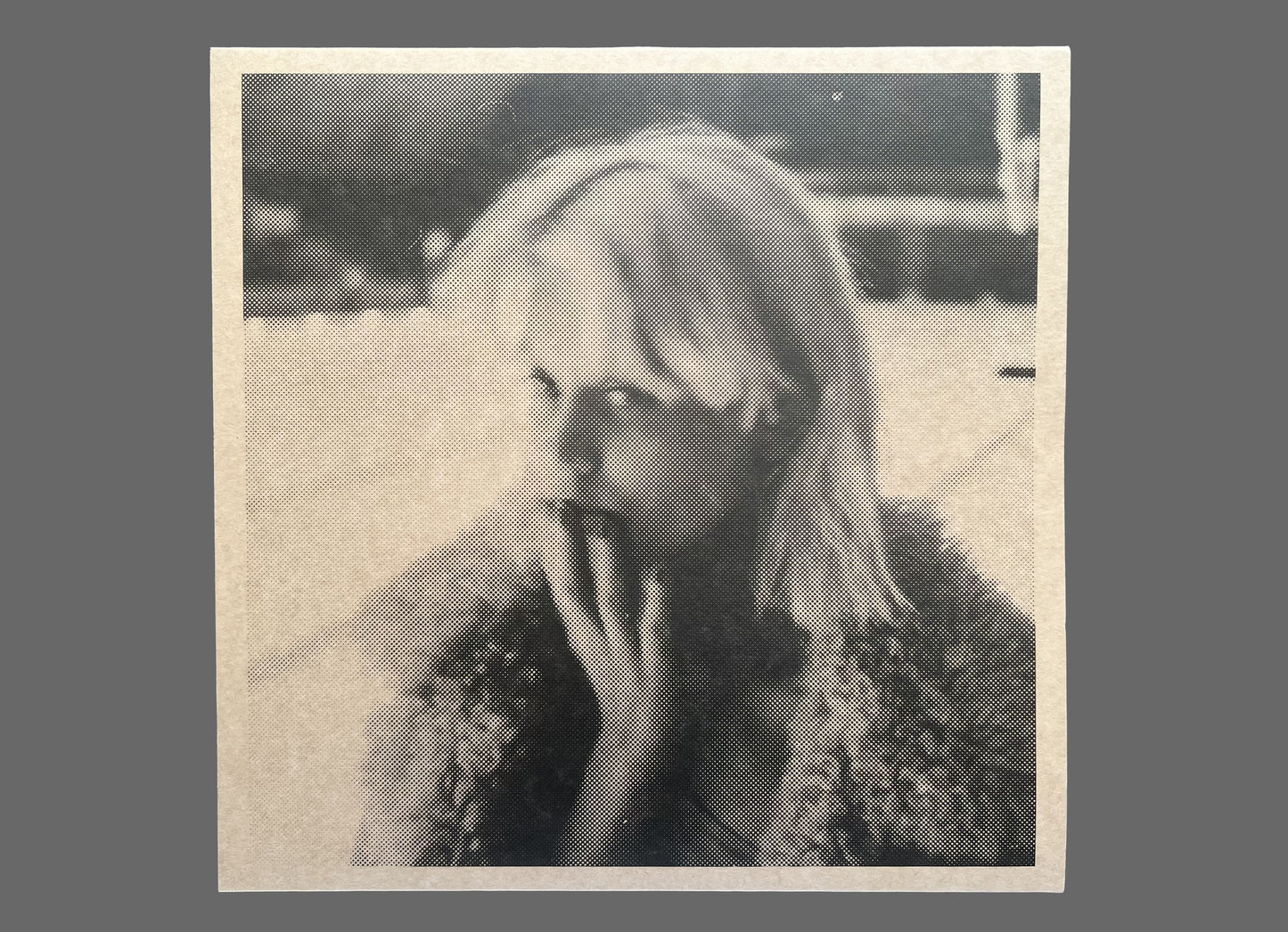
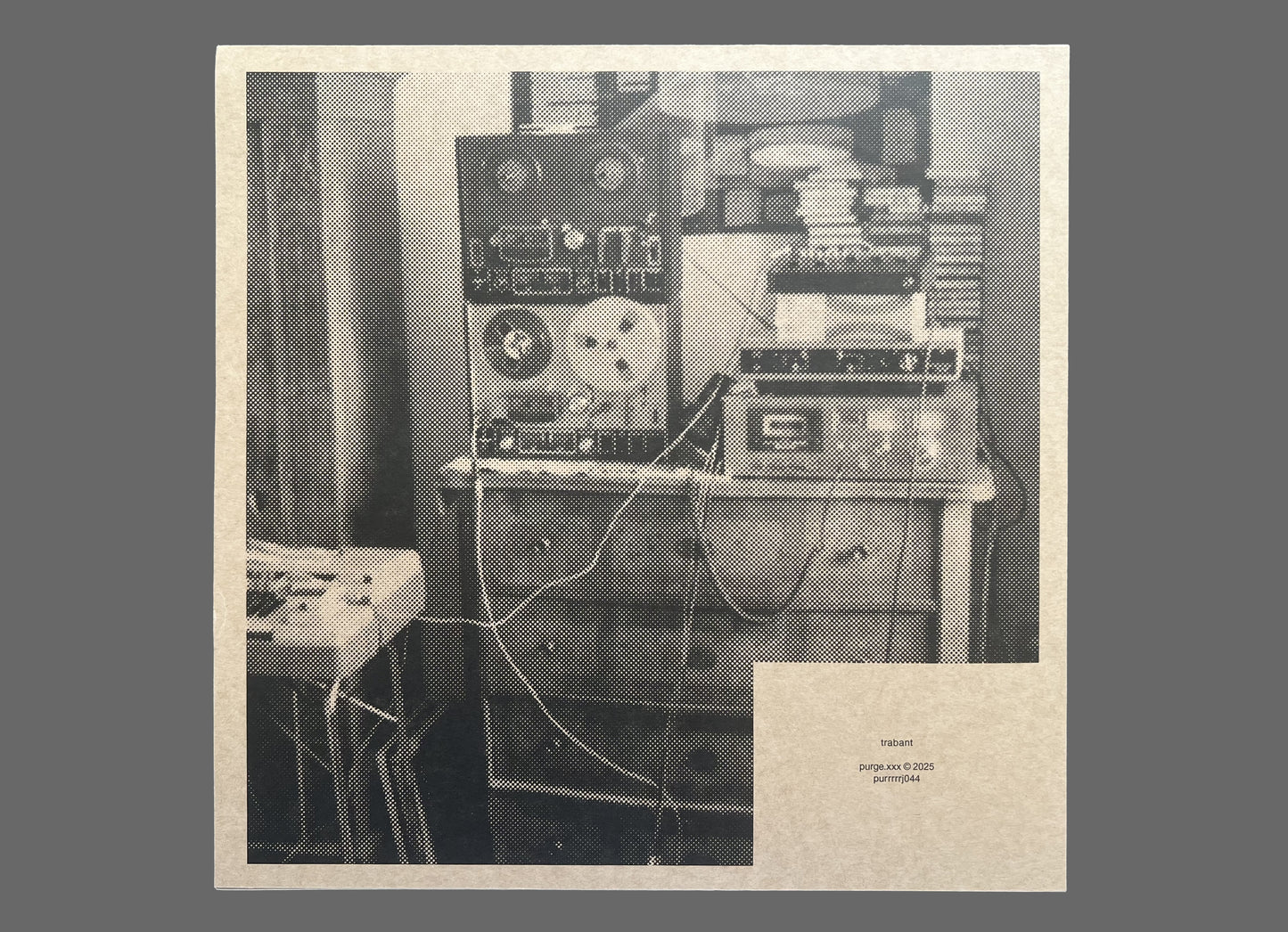
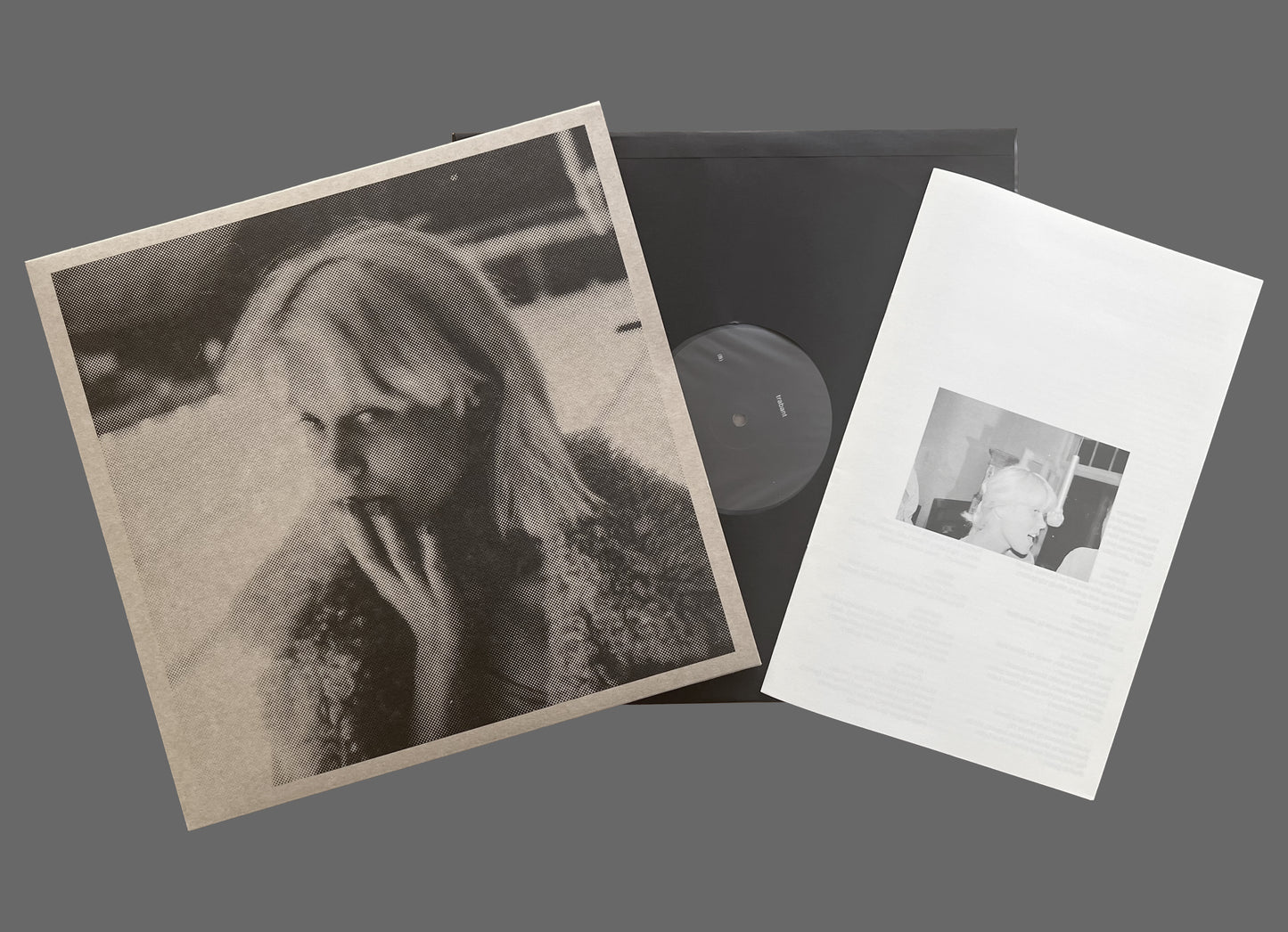

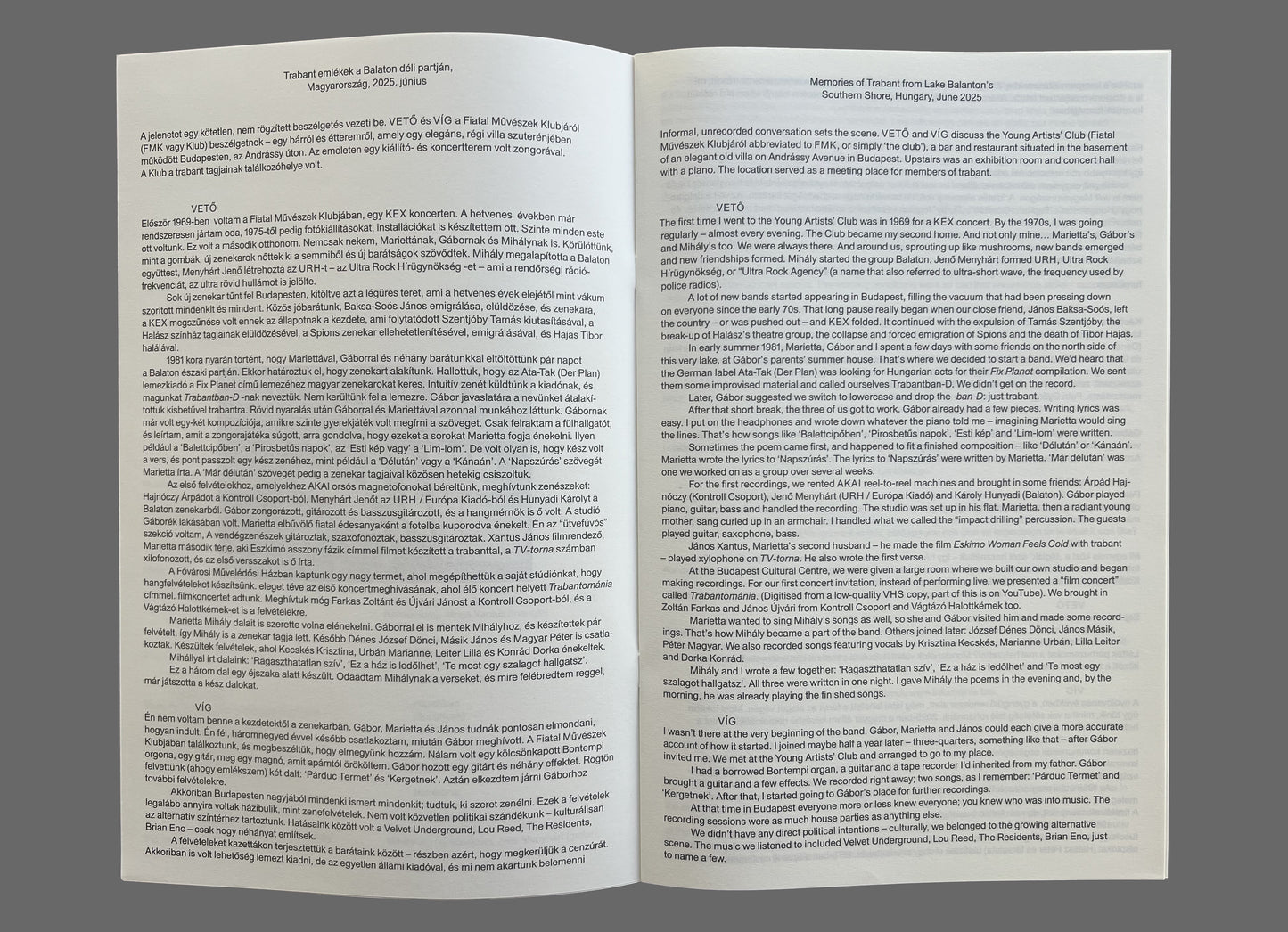
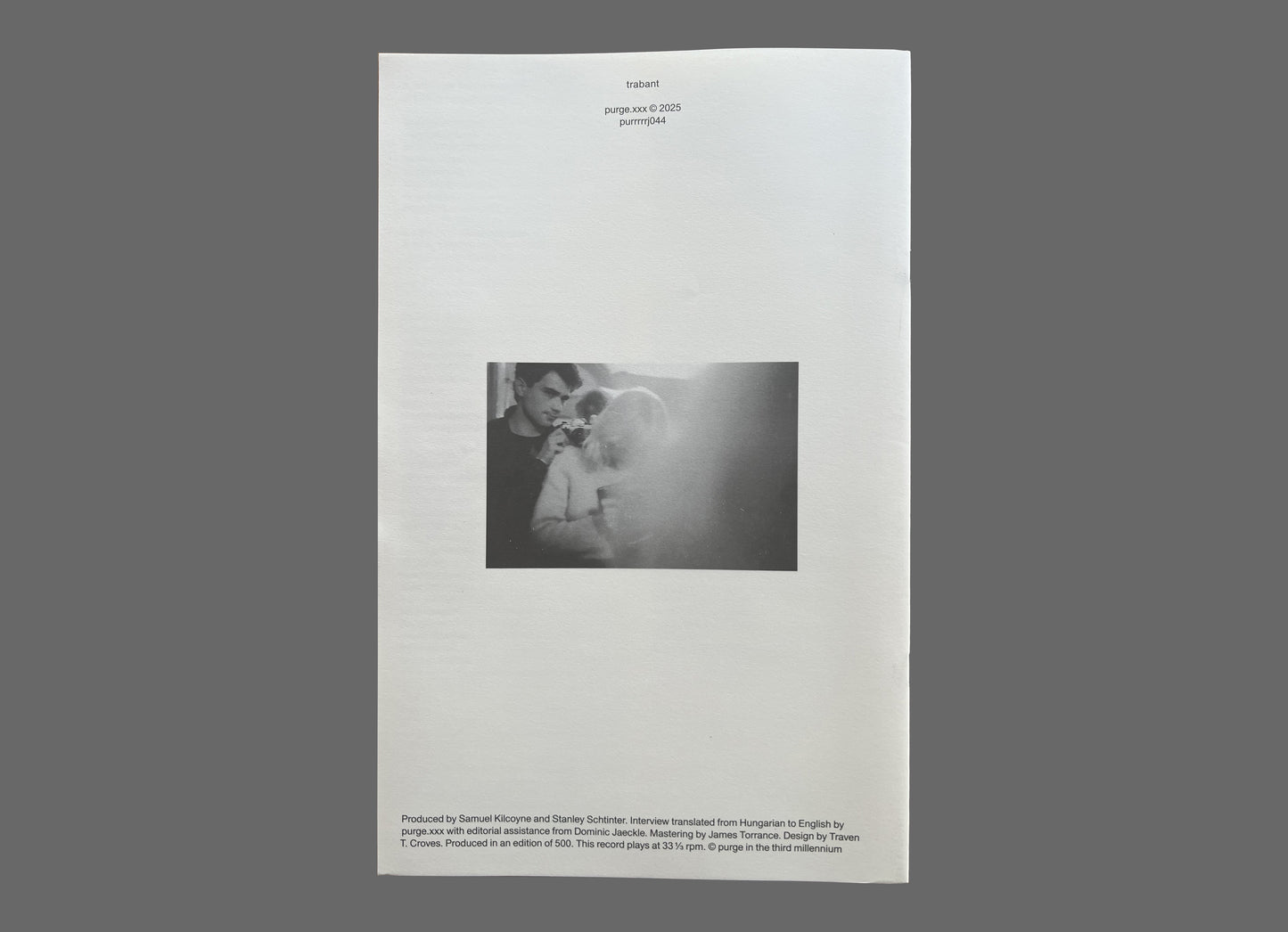
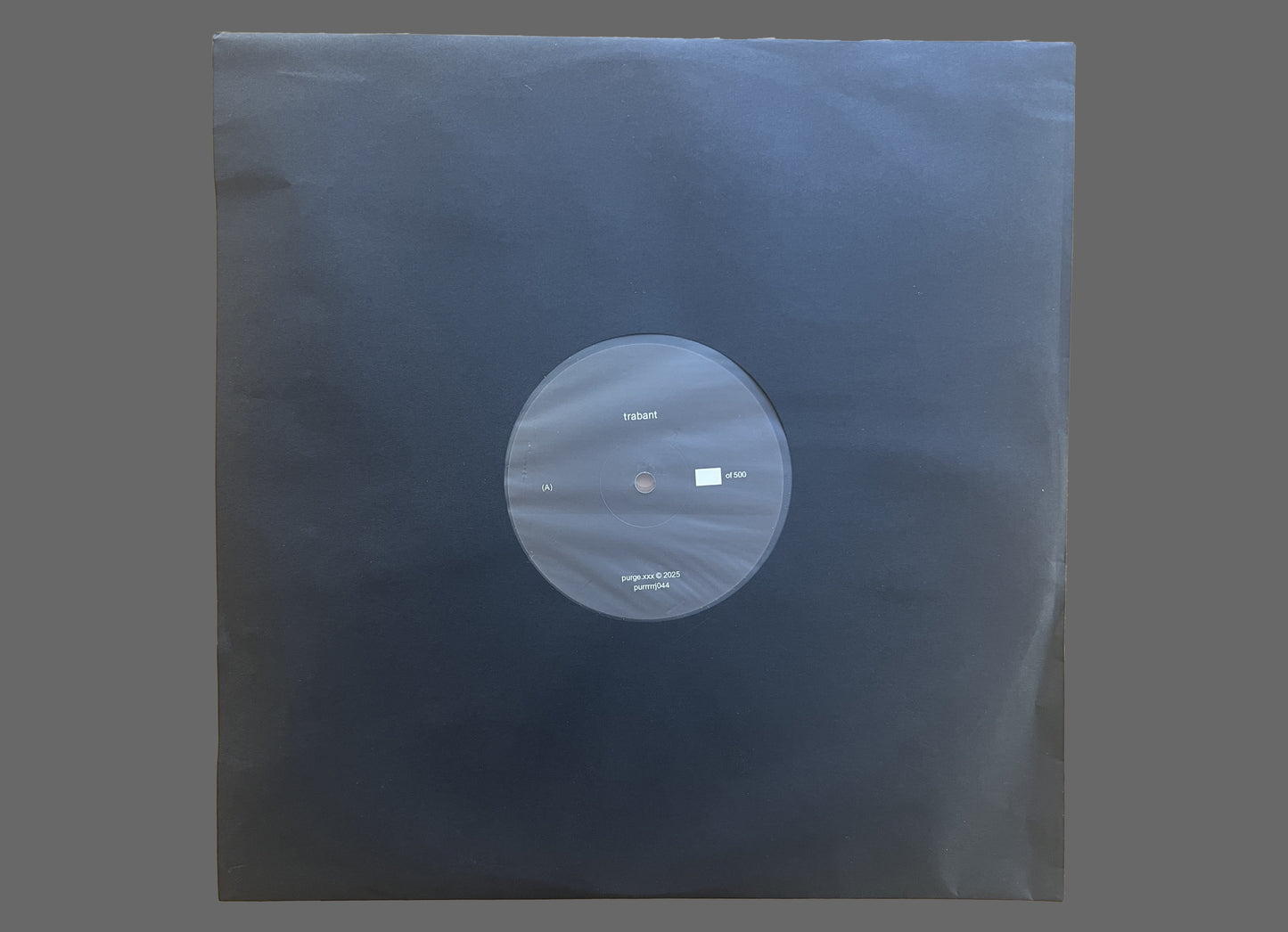
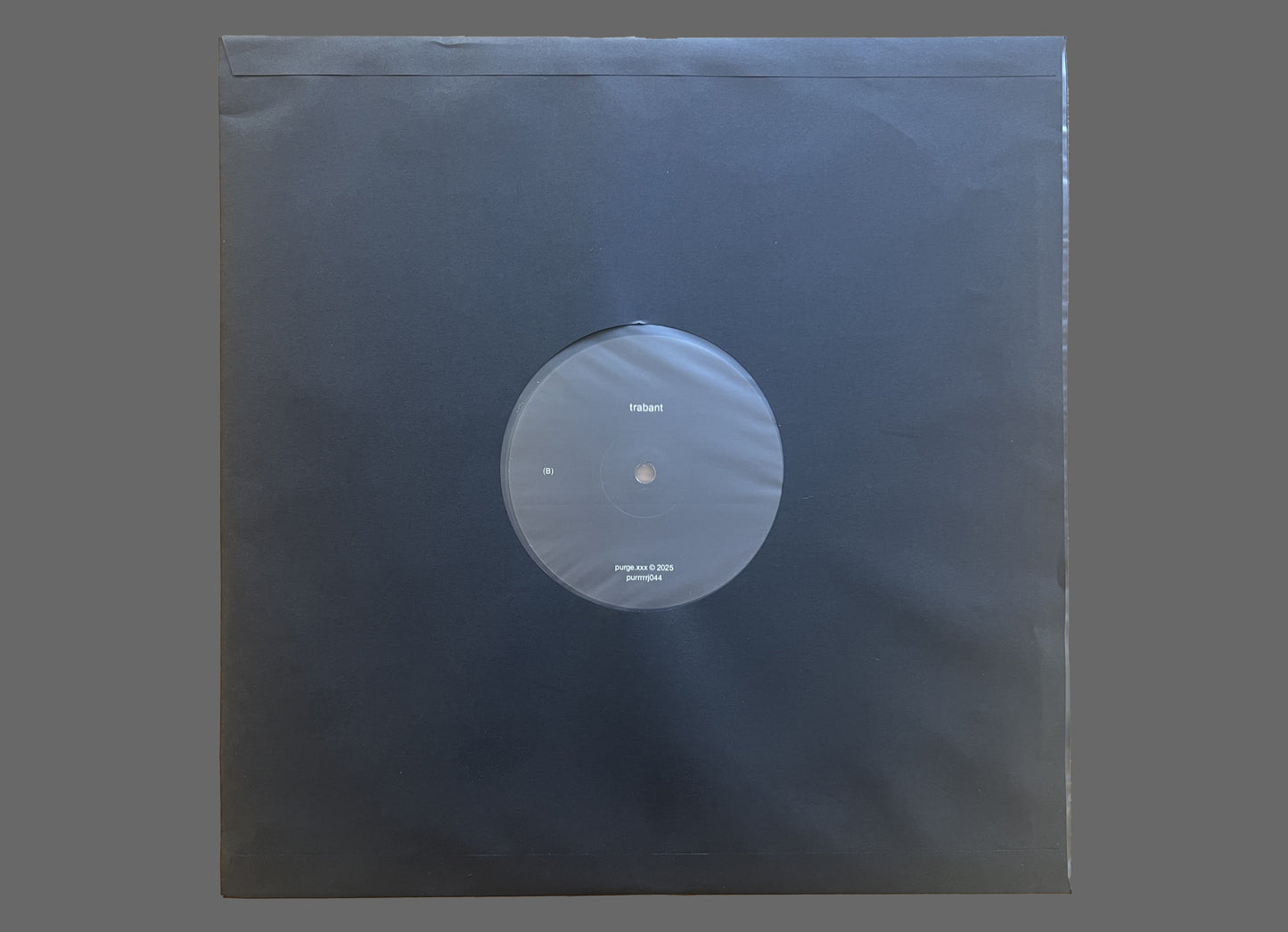
Brannten Schnüre - Muschelsammlung LP (Wahn 01)
LP
Music Performed by C Schoppik and K Rich
Mastered by Ruud Lekx
2025 Limited Edition Reissue / Repress via Milder Wahn
Edition of 250
"Brannten Schnüre and the new German scene that doesn’t want to be one" text by Nikita Vahid-Moghtada (hhvmag, 2023)
Review via Audiopile (Vancouver):
A long out of print and important piece from Brannten Schnüre’s mid-period gets another chance to cast its eerie glow. 2017’s Muschelsammlung might be considered the last of their albums before the underground finally caught up to them, and it’s also one of the more accessible points of entry into the duo’s now formidable catalog. With vocalist Katie Rich at the forefront through much of Muschelsammlung, her sweet speak-sing and childlike presence is a ballast amidst the whir of rustic instrumentation and looping ephemera that the duo lift from German folk music and gothic hymnals. As usual, there are plenty of reference points that we’ve made here or seen elsewhere that veer close to capturing the mystic wooziness that Brannten Schnüre conjure, whether it’s Coil’s late period folkloric seances, Ghédalia Tazartès’ electro-acoustic exoticism, the lo-fi bedroom concrete of the Gothenburg scene, or the blurred nostalgia of the Caretaker at his most cracked. But recently listening back on this mesmerizing LP’s integration of folkier traditions with repurposed music from the fading past, we can’t help but also hear a bit of Broadcast, particularly their later “occult” period. Most obvious between the two groups is the pastoral innocence embodied by both the late Trish Keenan and Katie Rich, but its both duos juxtaposing the starry-eyed vocals with fragmentary and lysergic collages that find the pair criss-crossing on the same plane of hauntological wonder. Admittedly, Brannten Schnüre is not for everyone, but if you were spell-bound by Broadcast’s final album, Investigate Witch Cults Of The Radio Age, or the posthumously released Berberian Sound Studio, then Muschelsammlung might just be your bag. If you’re already on board with Brannten Schnüre, you know what to do. New edition of 250, silksreened jackets, sold out at the source. Don’t snooze.
Weaving a singular brand of DIY Minimalism, intertwining elements of folk, musique concrète, ambient, and electroacoustic music, Brannten Schnüre return to center stage with a due repress of what is widely regarded as their most impressive full-length release, “Muschelsammlung”, originally released in 2017 on Dutch label Vrystaete in a micro-edition of 150 copies. Laying the groundwork for the singular sonic landscapes that we’ve all come to adore, it’s an absolutely stunning and engrossing piece of work that can’t be missed.
Share
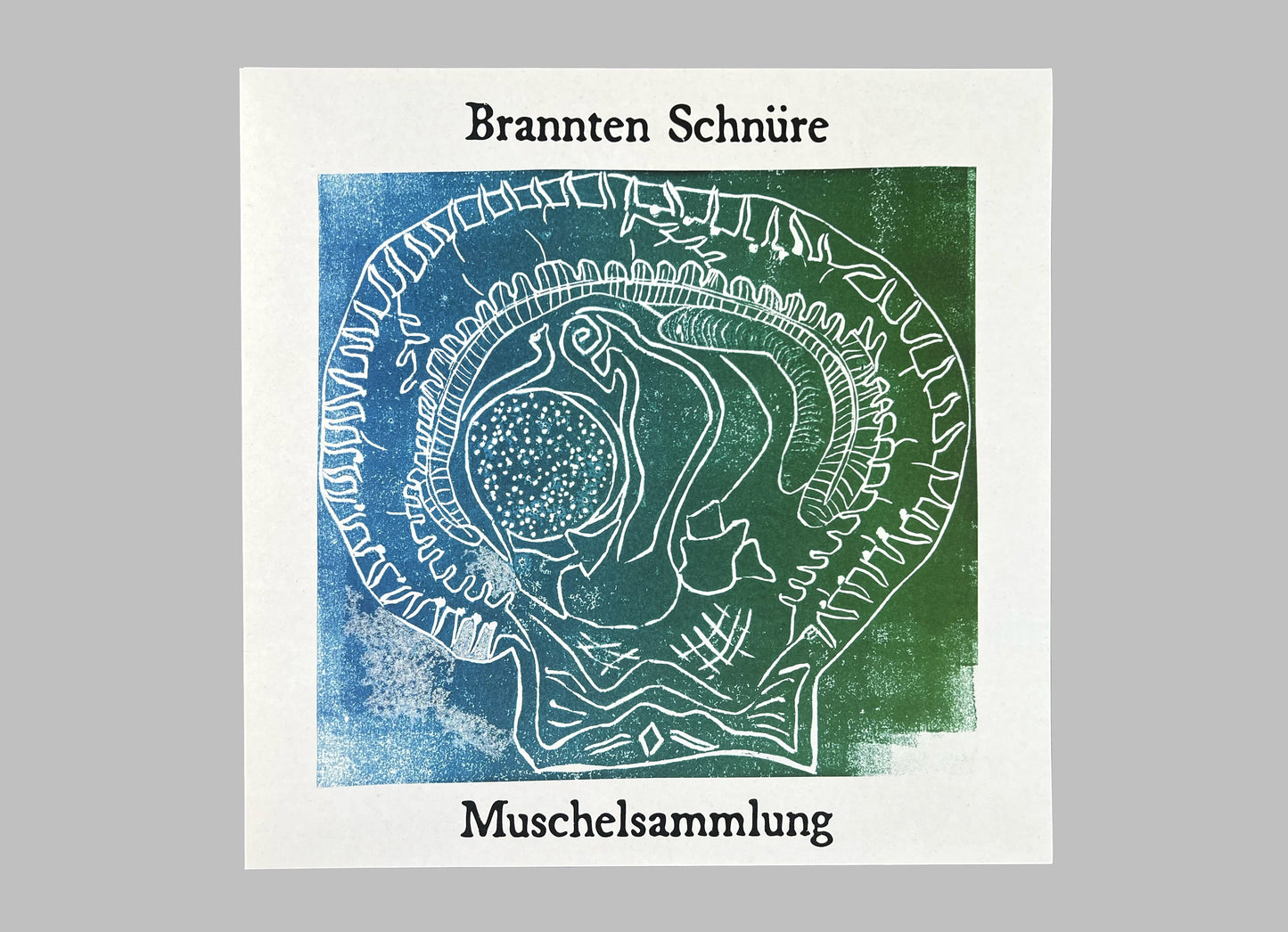
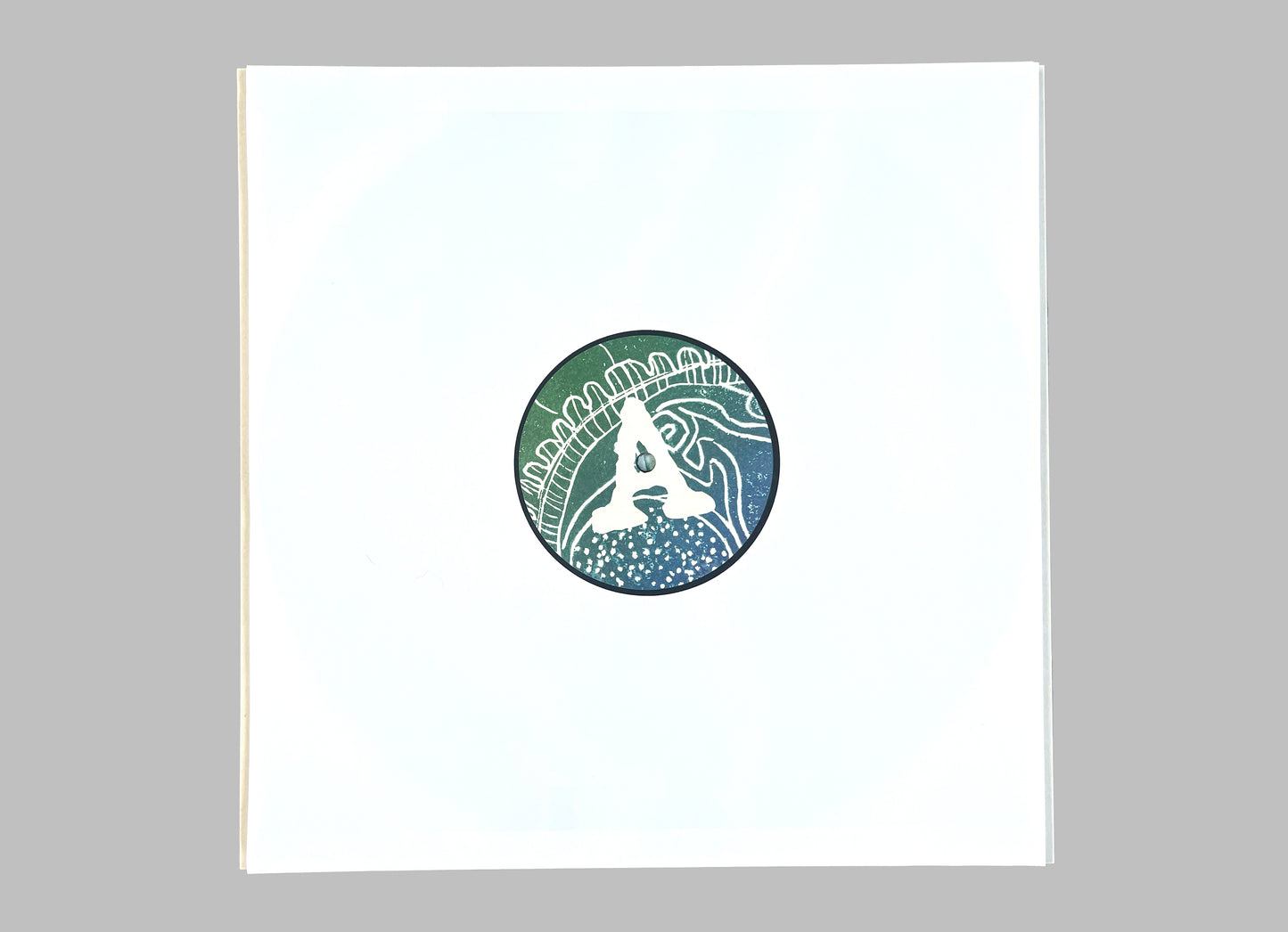
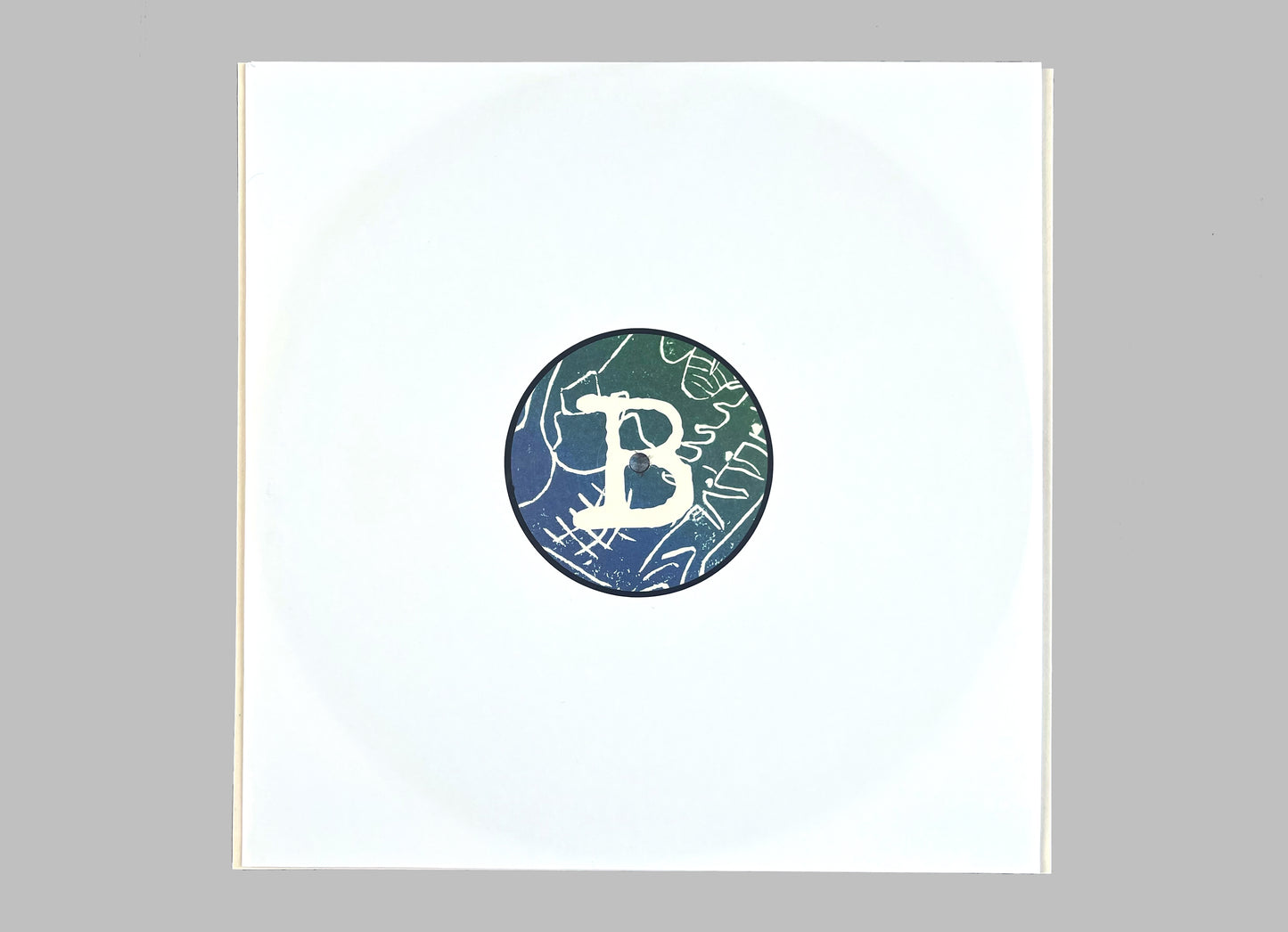
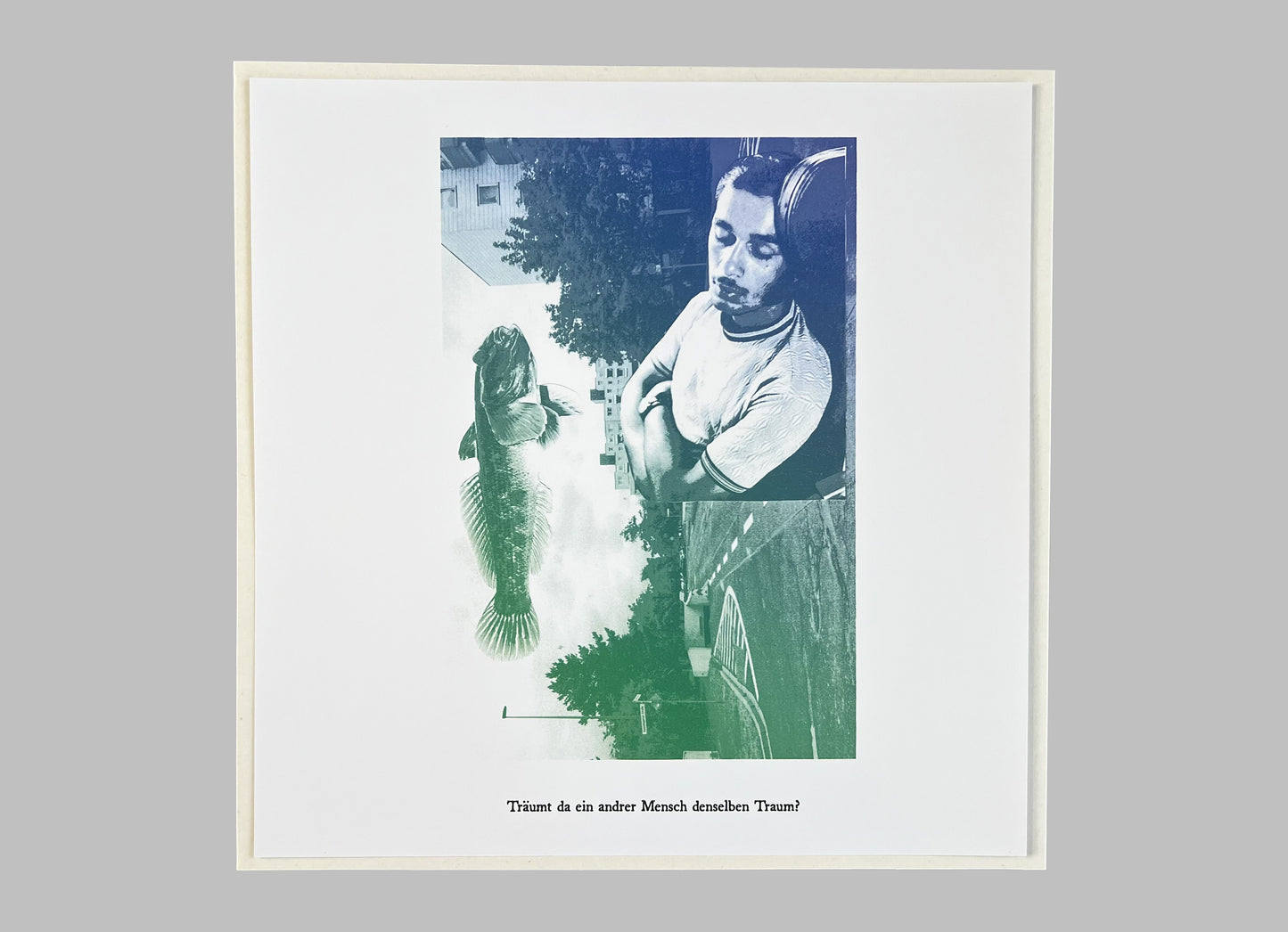
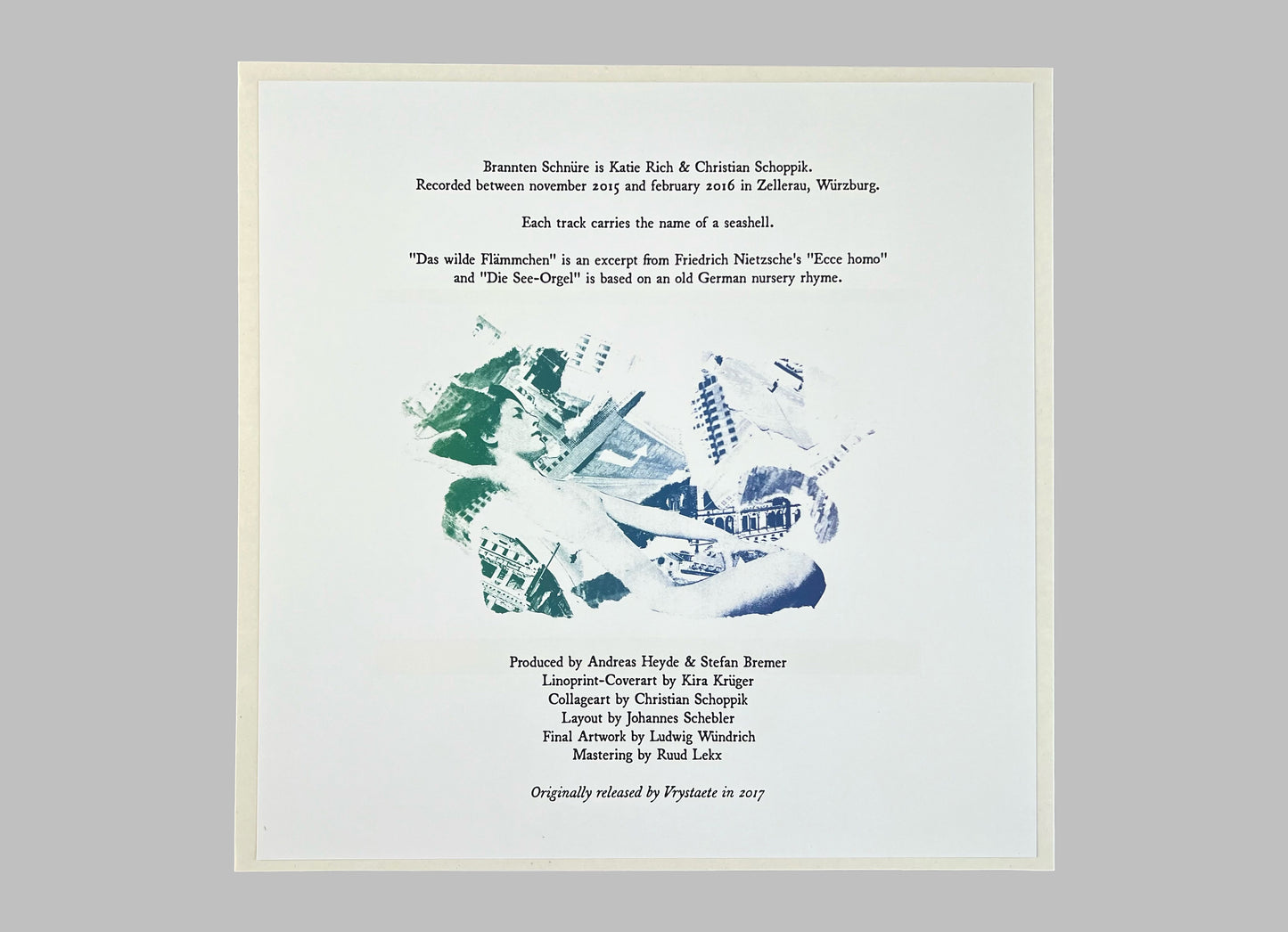
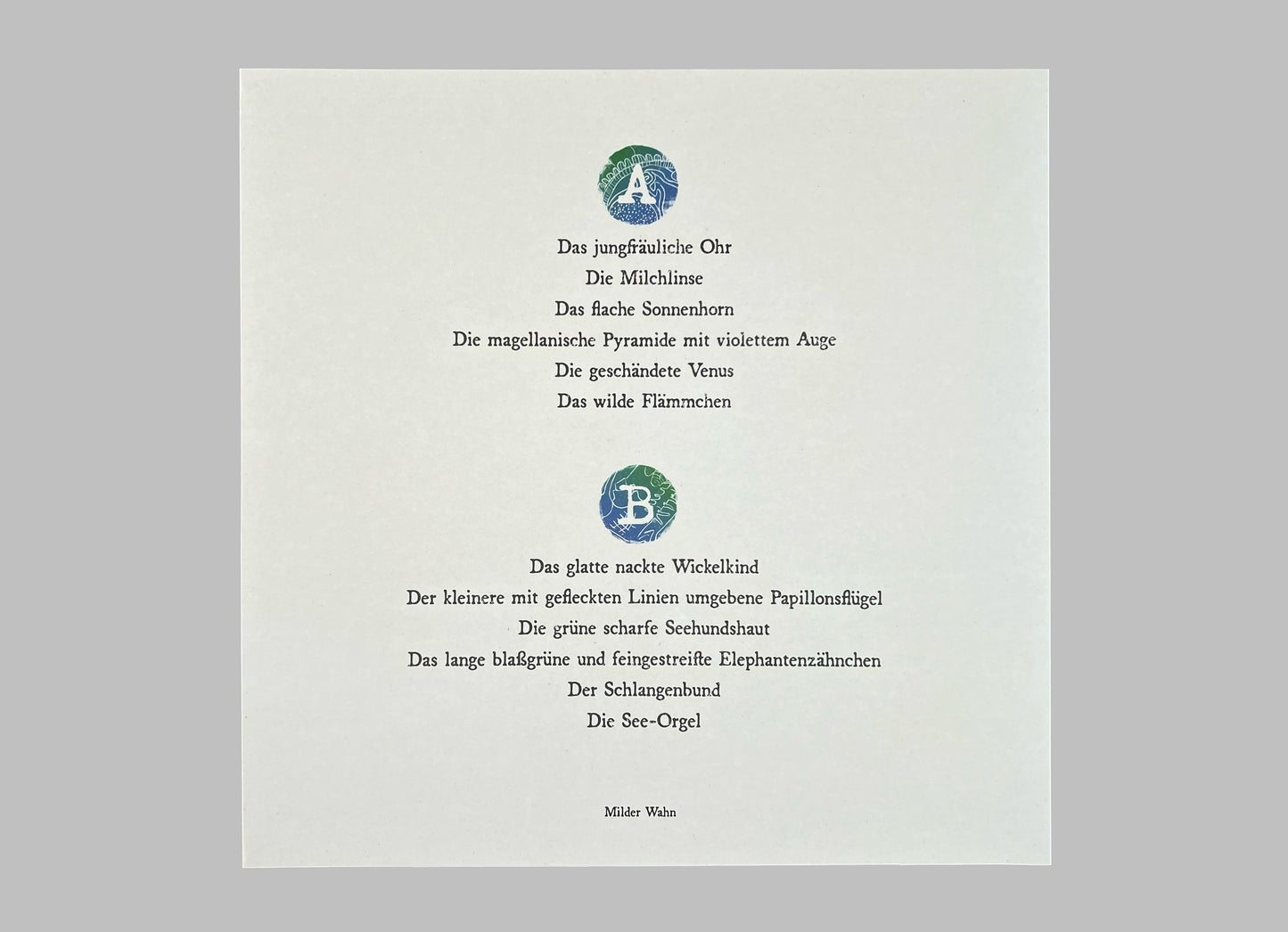
Neutral - Lågliv LP (HMS050)
LP
Mastered by James Plotkin
Includes digital download code
Edition of 300
Description via The Helenscarsdale Agency:
Neutral is the no wave / anti-rock duo of Dan Johansson (Sewer Election, Ättestupa, Amateur Hour, etc.) and Sofie Herner (Leda, Enhet För Fri Musik), both with deep connections to the Swedish noise scene. As Neutral, the two smear voice, guitar, organ, and smoldering noise into narcoleptic songs that rewire the strategies of Dome by way of Gate and Mars. Lågliv translates to ‘lowlife,’ an apt metaphor for neutral’s subterranean murk and shambolic discontent that they languidly manifest as a punk dourness emptied of all rock ’n’ roll theatrics. Desperate, demolished, and dejected.
Neutral Interview w/ Ilia Rogatchevski for Wire (2018)
Share
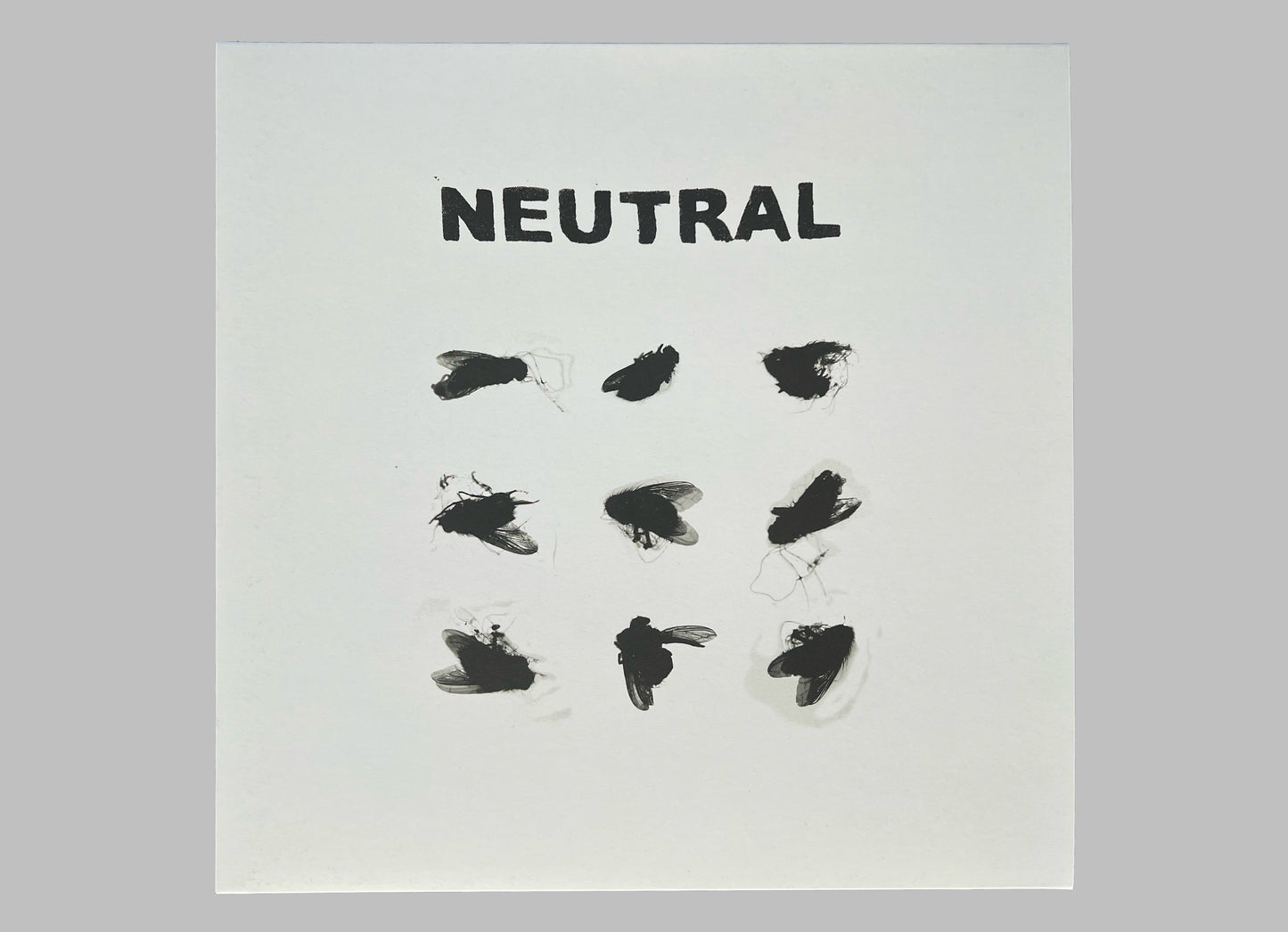
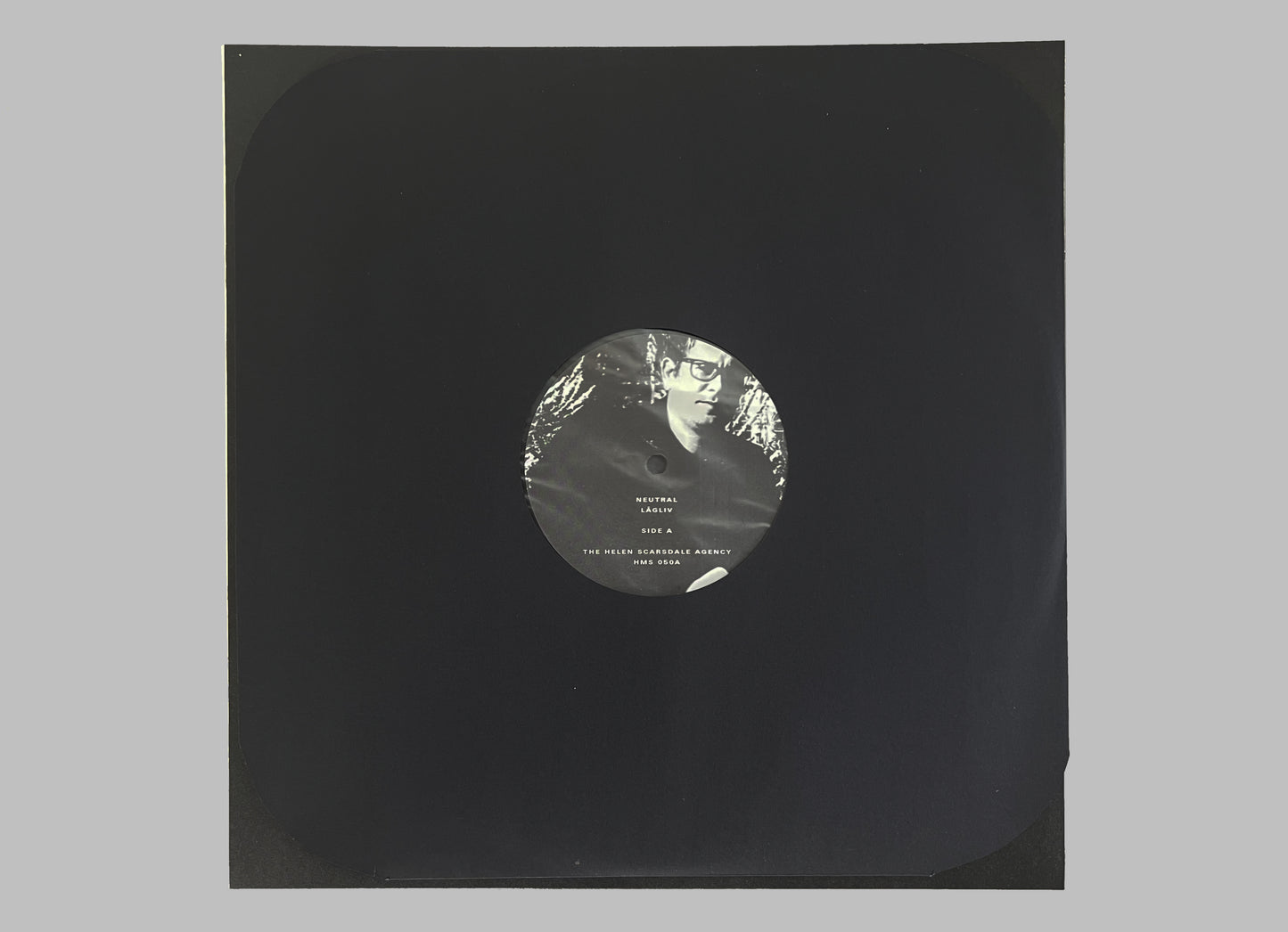
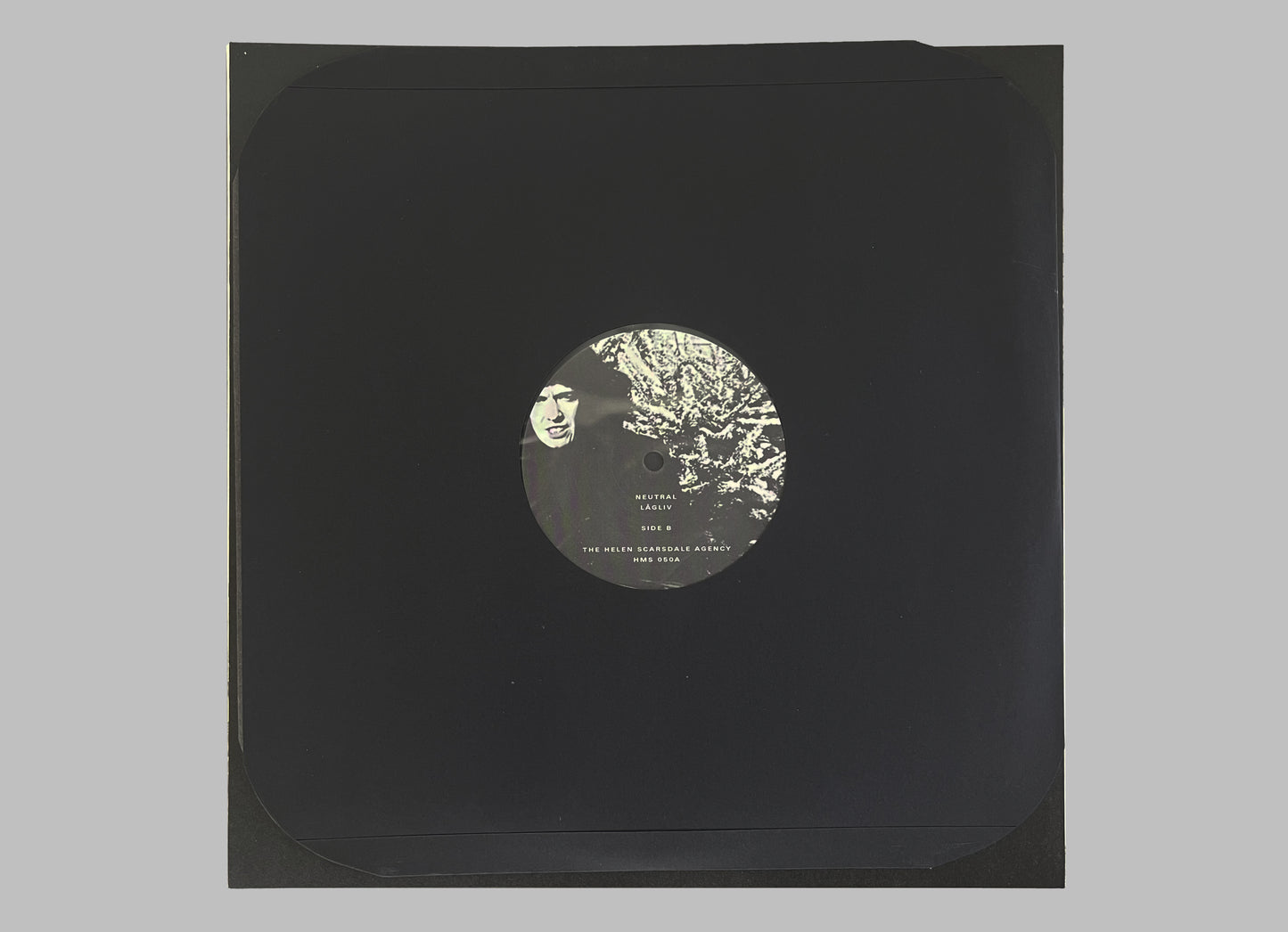
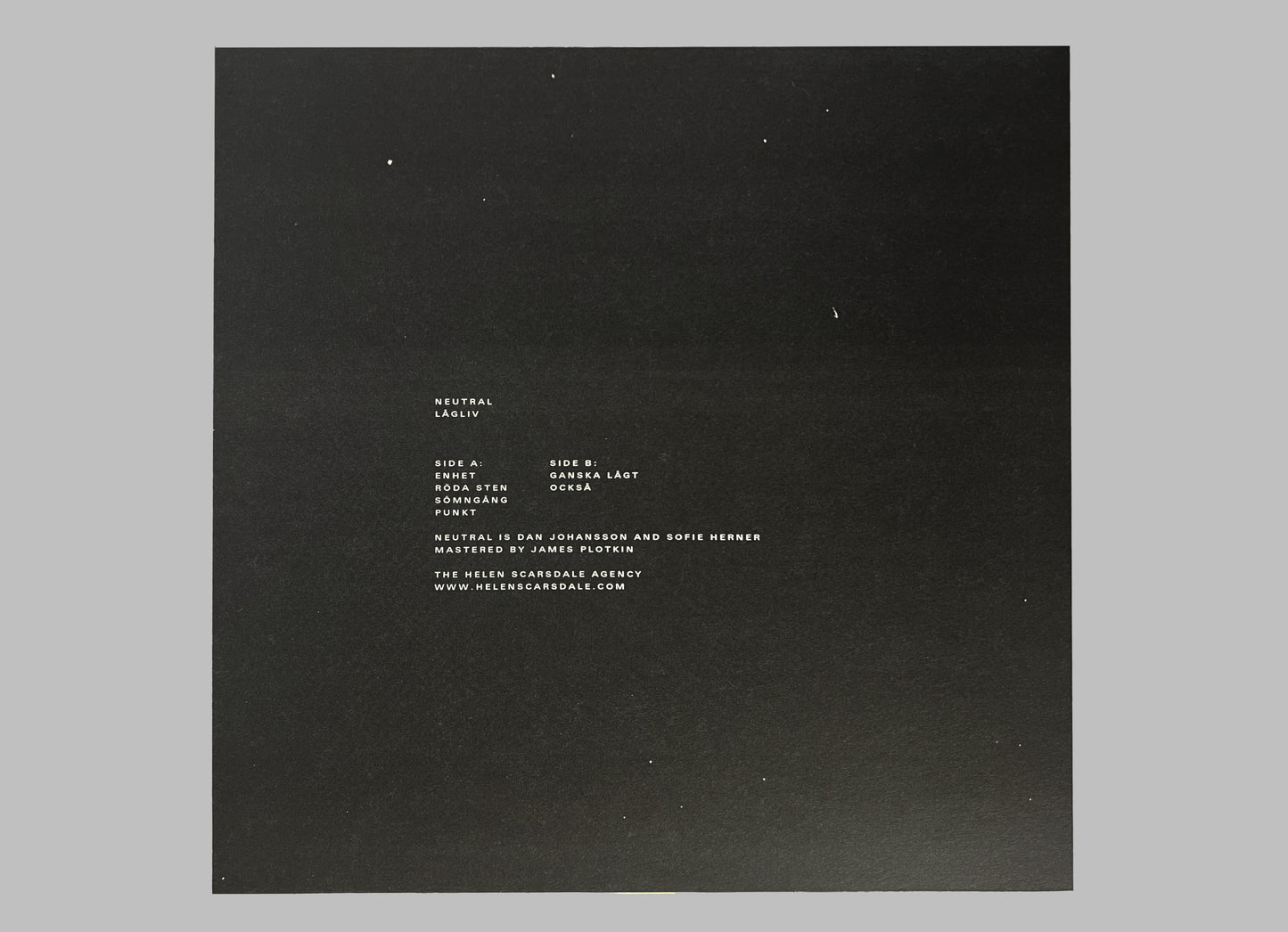
Paul DeMarinis - Songs Without Throats 2xLP (BT041)
2xLP
Gatefold Sleeve w/ Liner Notes
Computer, Keyboards, Synthesizer, Guitar, Composed by Paul DeMarinis
Layout by Stephen O'Malley
Mastered by Rashad Becker
DeMarinis Webpage
DeMarinis Vimeo
'Songs Without Throats' Bandcamp
Description via Black Truffle:
Share
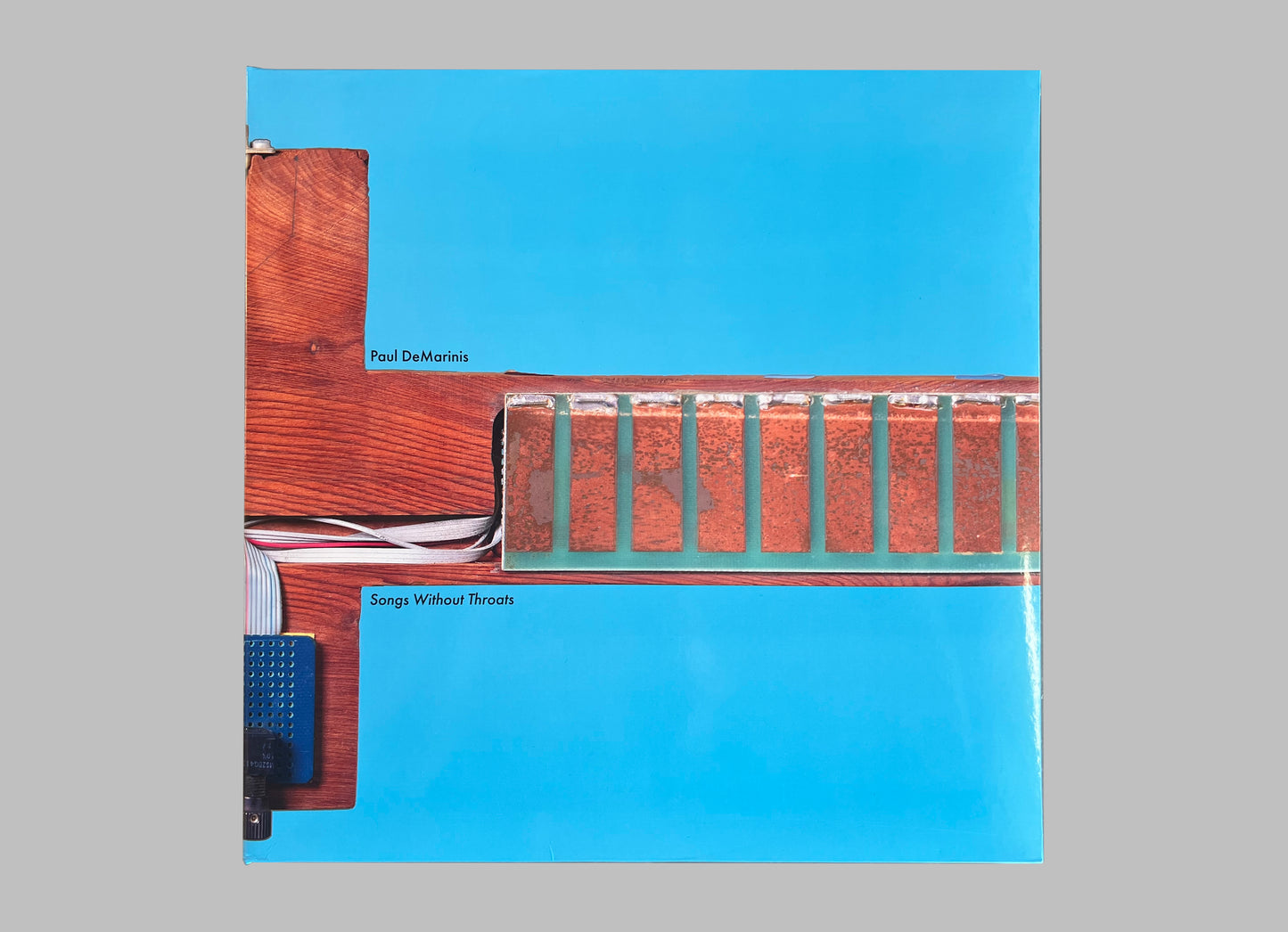
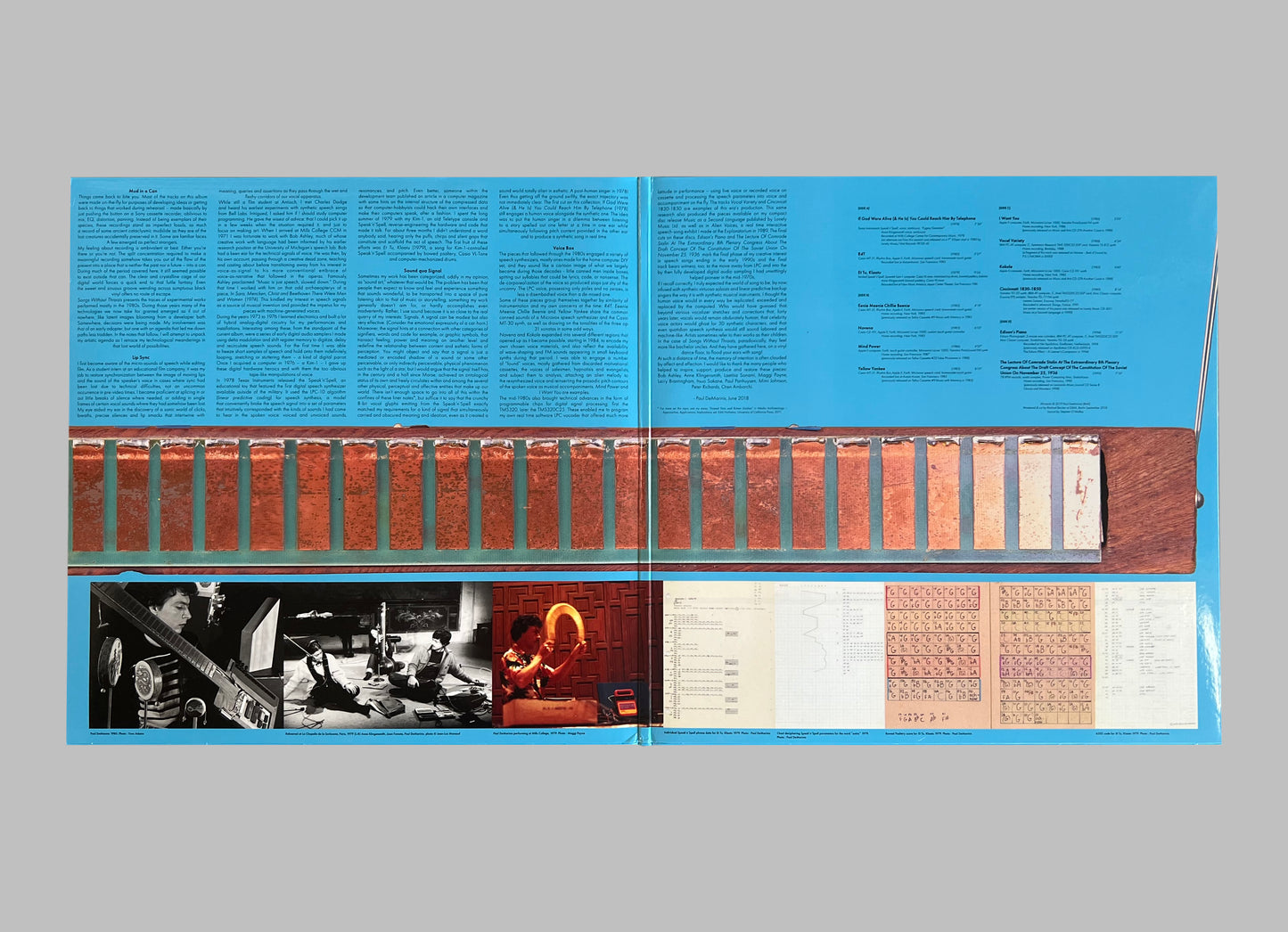
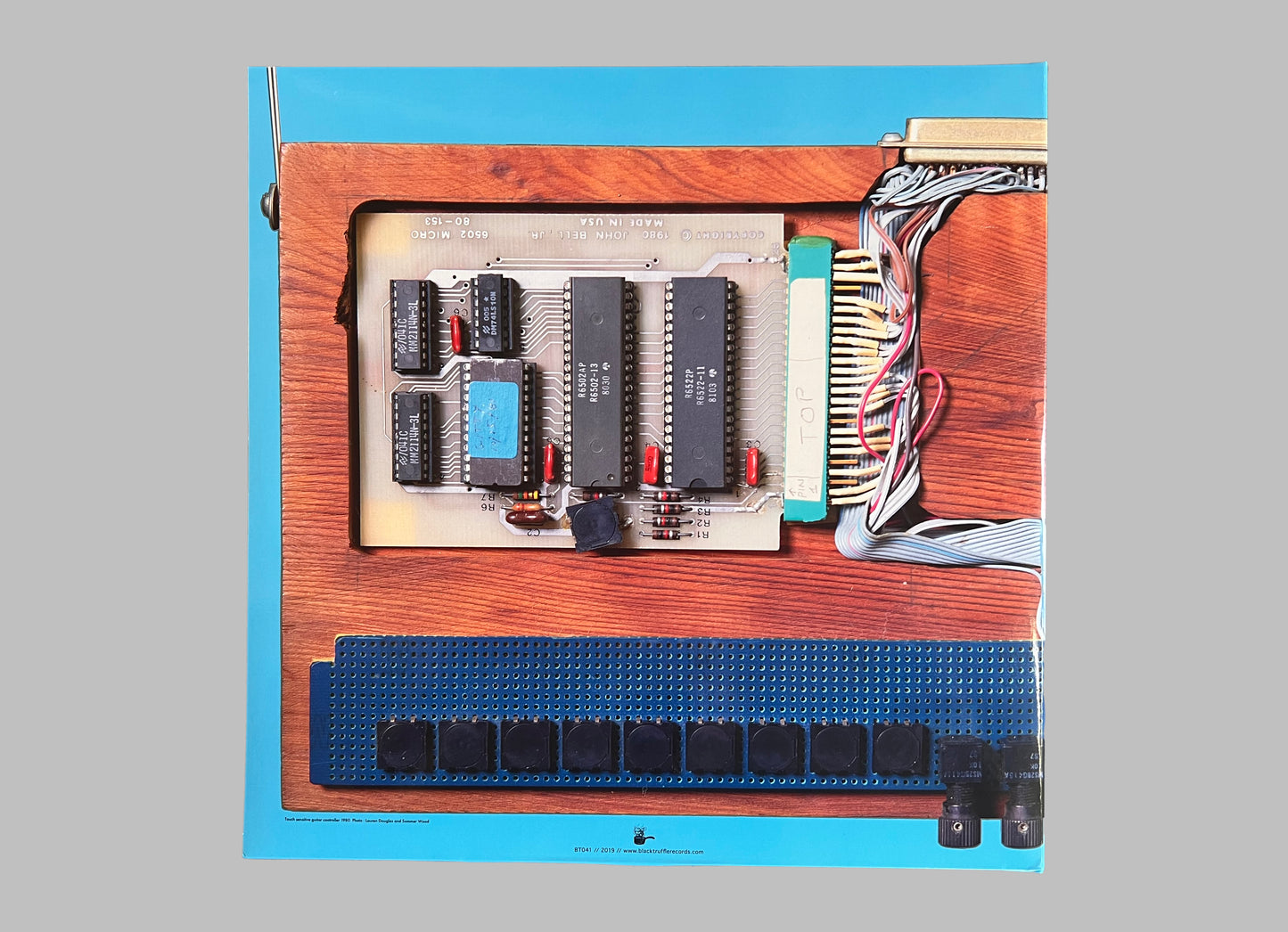
Paul De Marinis - Music As A Second Language CD (LCD3011)
CD
2019 Repress
Jewel Case
Insert with Liner Notes
Art Direction By Design
Digital Editing and Mastering by Allan Tucker
Lovely Music - (LCD 3011CD)
I can confidently say this albums sits at the top of my 'favorites list' within the Lovely Music, Ltd. catalog. Eloquently sequenced; evenly laced with humor and spirituality. Immaculate, immersive, and thought provoking. The best kept secret? - Ross
Description via De Marinis:
"God is perhaps not so much a region beyond knowledge as something prior to the sentences we speak." — Michel Foucault
Hidden beneath speech's words and music's melodies I hear the singing of a voice more ancient than language. Brain's secret convulsions making muscles articulate, shaking the world with a song now lost to us except perhaps in laughter, giving birth at last to a duality of sound and meaning. Now we can write or read, compose or listen, speak and converse even about our words themselves. No longer are we aware that as we speak our voices rise and fall, following the deeper contours of speech melodies that prefigure our sense and our meanings. Even our music ceased long ago to sing these melodies, following instead the steady course of harmonic progression. Still, as we read a text, we must reconstruct the melodies of the writer to grasp the meaning. Still, we code our feelings in the melody of our speech. And still, as our leaders talk, hearing not the words but the music, we sing our quiet selves into a sleep of understanding. The whistles of the birds in our nose, the creaking door which closes a phrase, the measured pause which precedes a two-beat putdown – all these underlie the choice and order of our words. These are the ghosts in grammar's basement.
In many of my recent songs for synthesized voice I have treated speech melodies as musical material. By a process of computer analysis and resynthesis I extract the melodic line of spoken language, involve it in a variety of compositional transformations, and apply the result to digital musical instruments. Along the way, the original voice becomes more or less disembodied, but retains much of the original spirit and meaning. With the computer analysis model I can alter voicing – changing the speech into drones of whispers, articulation rate – speeding or slowing the speech independent of pitch, as well as a variety of other effects, many of which sound unfamiliar but agree with the kinematics of the vocal tract. As I compose, I listen and I think. I choose vocal sources which interest me, particularly the voices of evangelists, hypnotists and salesmen because of their great confidence and enthusiasm. — Paul De Marinis
Share
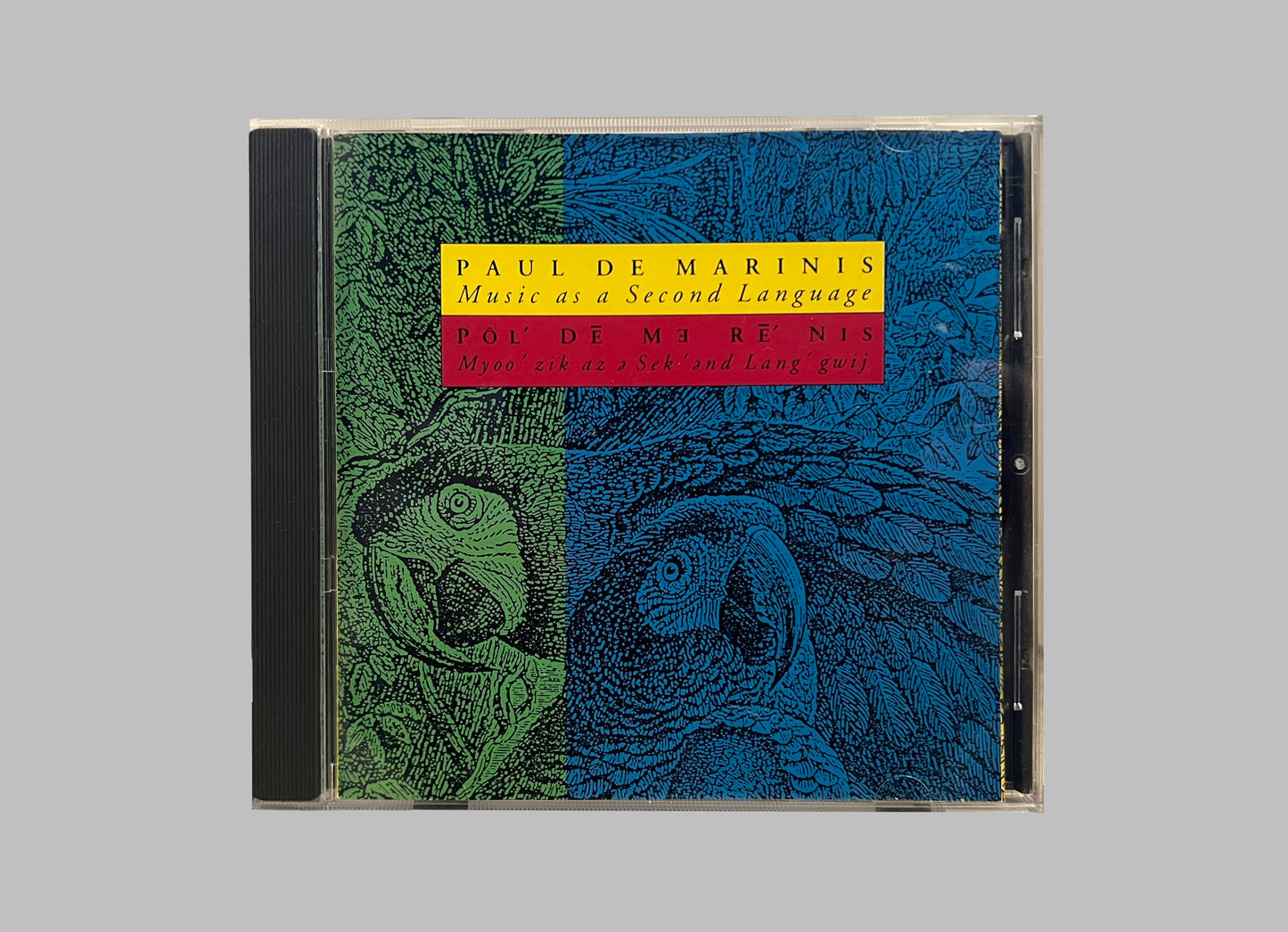
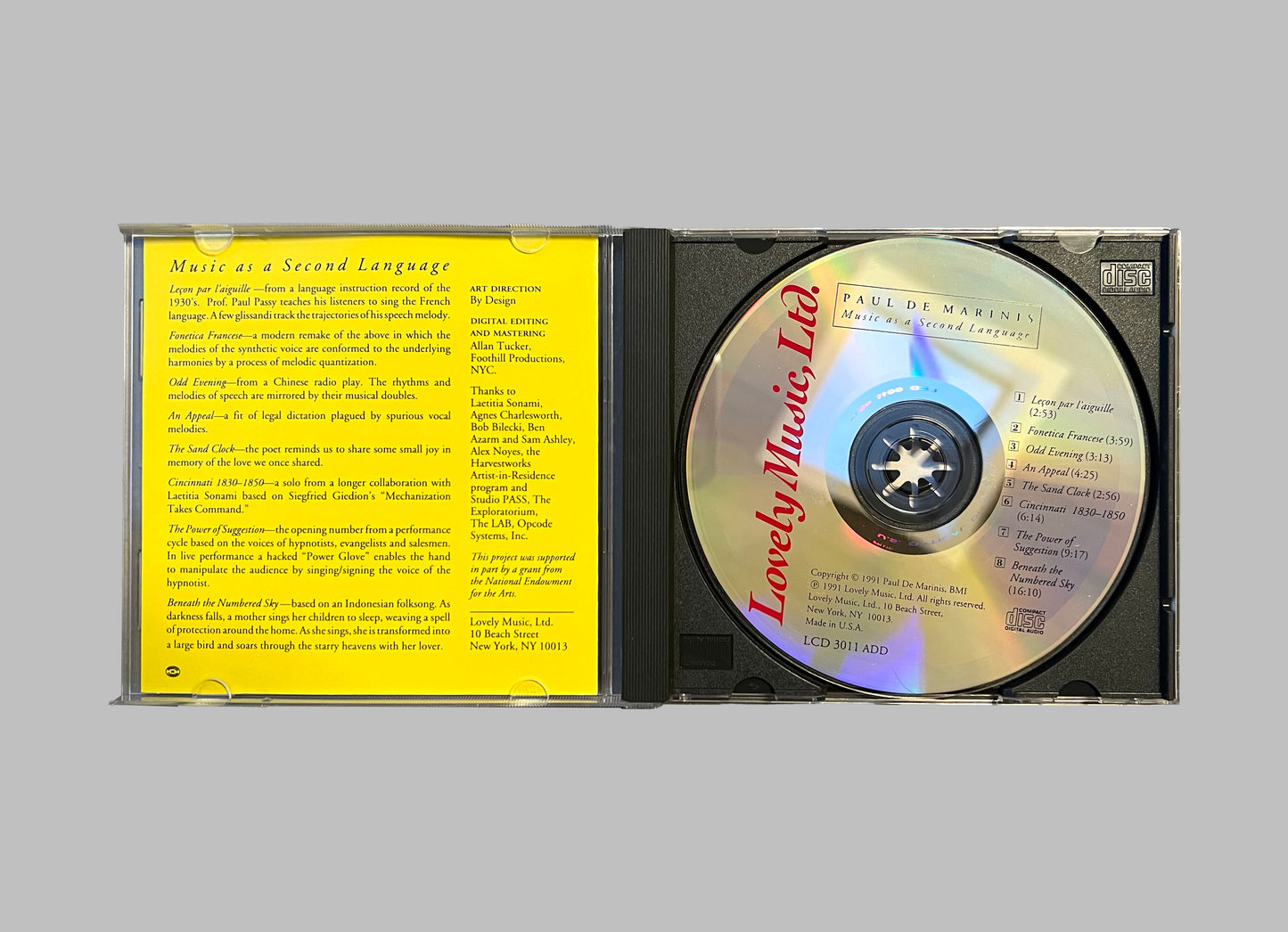
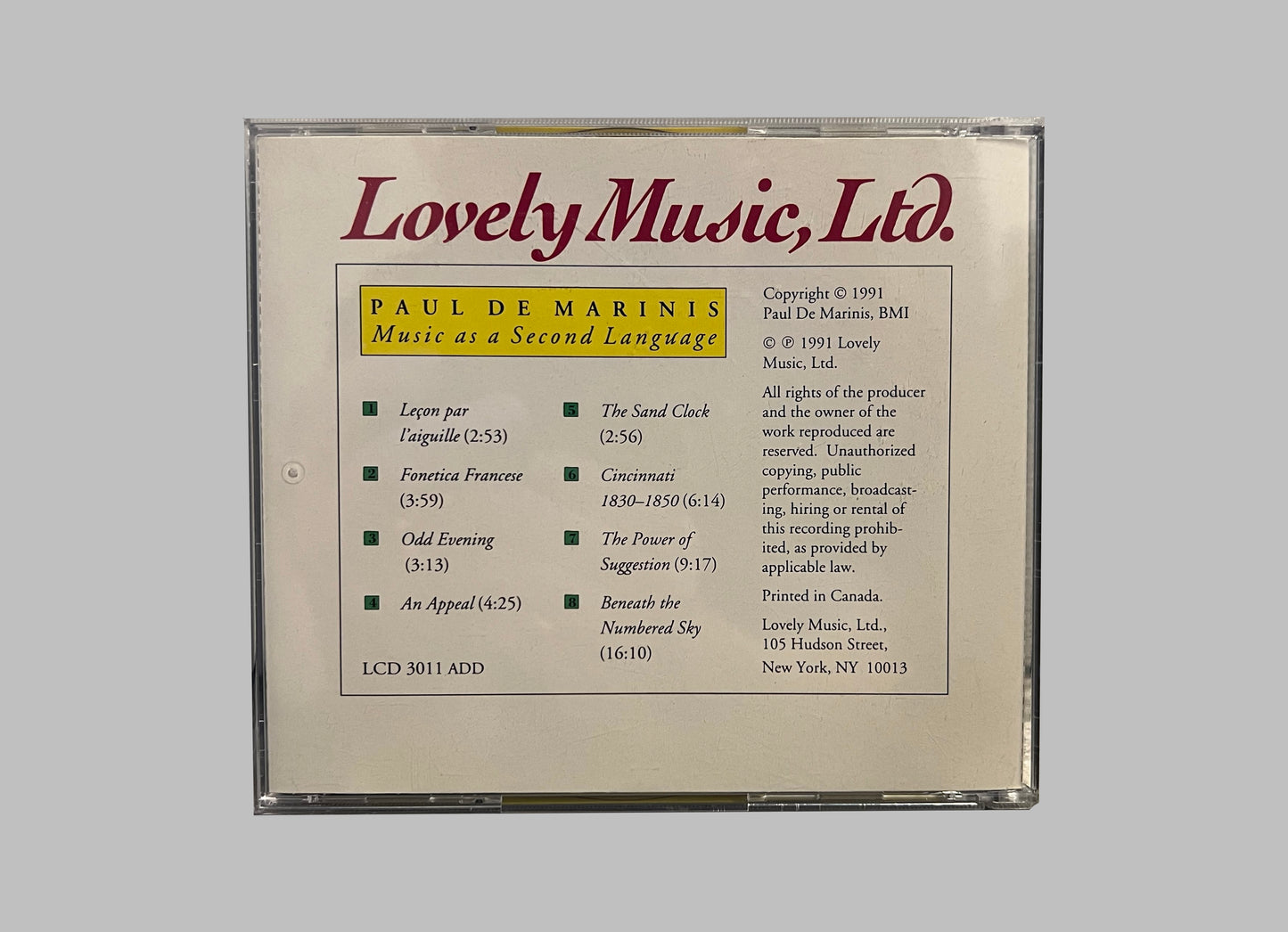
Maggi Payne - Crystal CD (LCD2061)
CD
2021 Repress
Jewel Case
Insert with Liner Notes
Art Direction By Design
Digital Editing and Mastering by F. Tarantino (Fantasy Studios, Berkeley, CA)
Lovely Music - (LCD 2061)
Originally released on Lovely Music in 1986. Maggi Payne's musical imagination is vivid: she is interested in the surreal, the inward, the micro, and the accumulation of physical and psychological tension. Periods of silence gently evolve into flowing drones of complex resonances. Oozing drones evolve into dense and powerful peaks of short duration. On one cut, multi-tracked voices shift in and out of phase, creating alternately shimmering and percussive patterns; on another, digital delay and 32 separate flute tracks create a rain forest where instruments call to each other like chrome birds. The compositions and sounds on Crystal have incredible depth, a profound logic and, though not "pretty", an irresistible beauty. Personnel: Maggi Payne - flute, synthesizers electronics.
>
Share





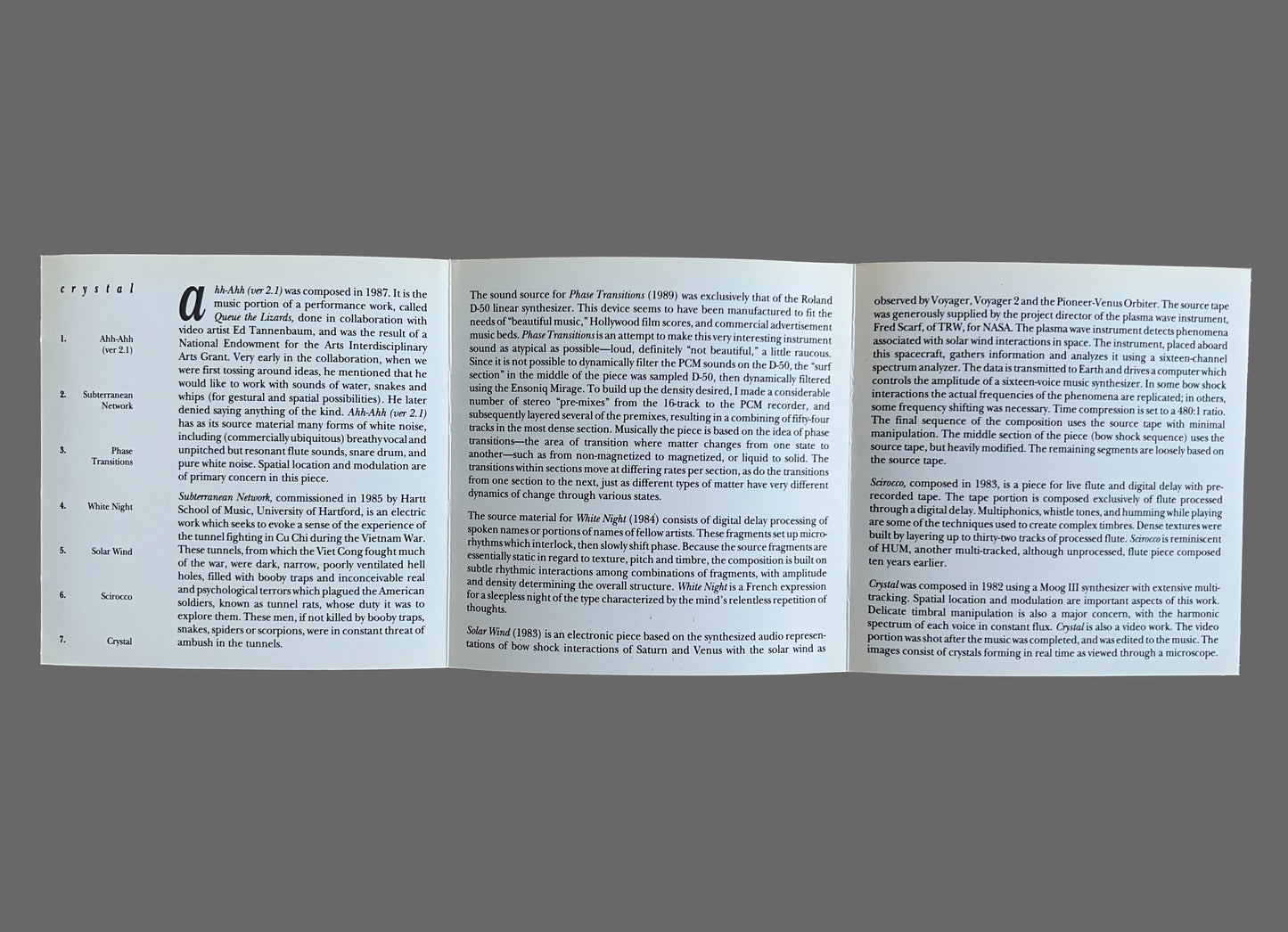
Robert Ashley - In Sara, Mencken, Christ And Beethoven There Were Men And Women LP (CRSLP 6103)
LP
Gatefold Sleeve w/ Liner Notes
Music Performed by Robert Ashley
Synthesizer (Moog) - Paul DeMarinis
Text by John Barton Wolgamot
(VG- sleeve (refer to pictures) / NM- vinyl)
Album Notes via Lovely Music Ltd.
Share
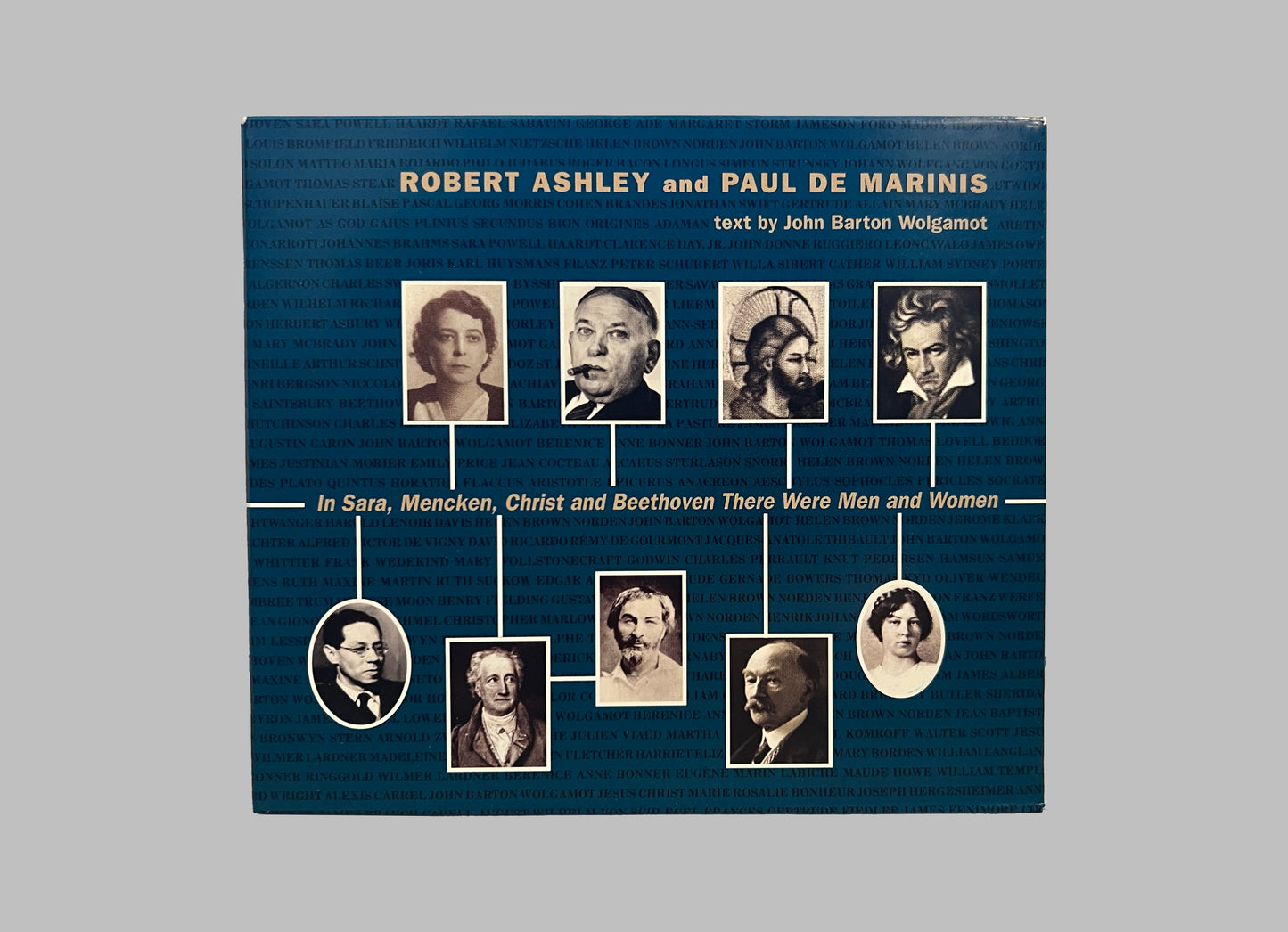
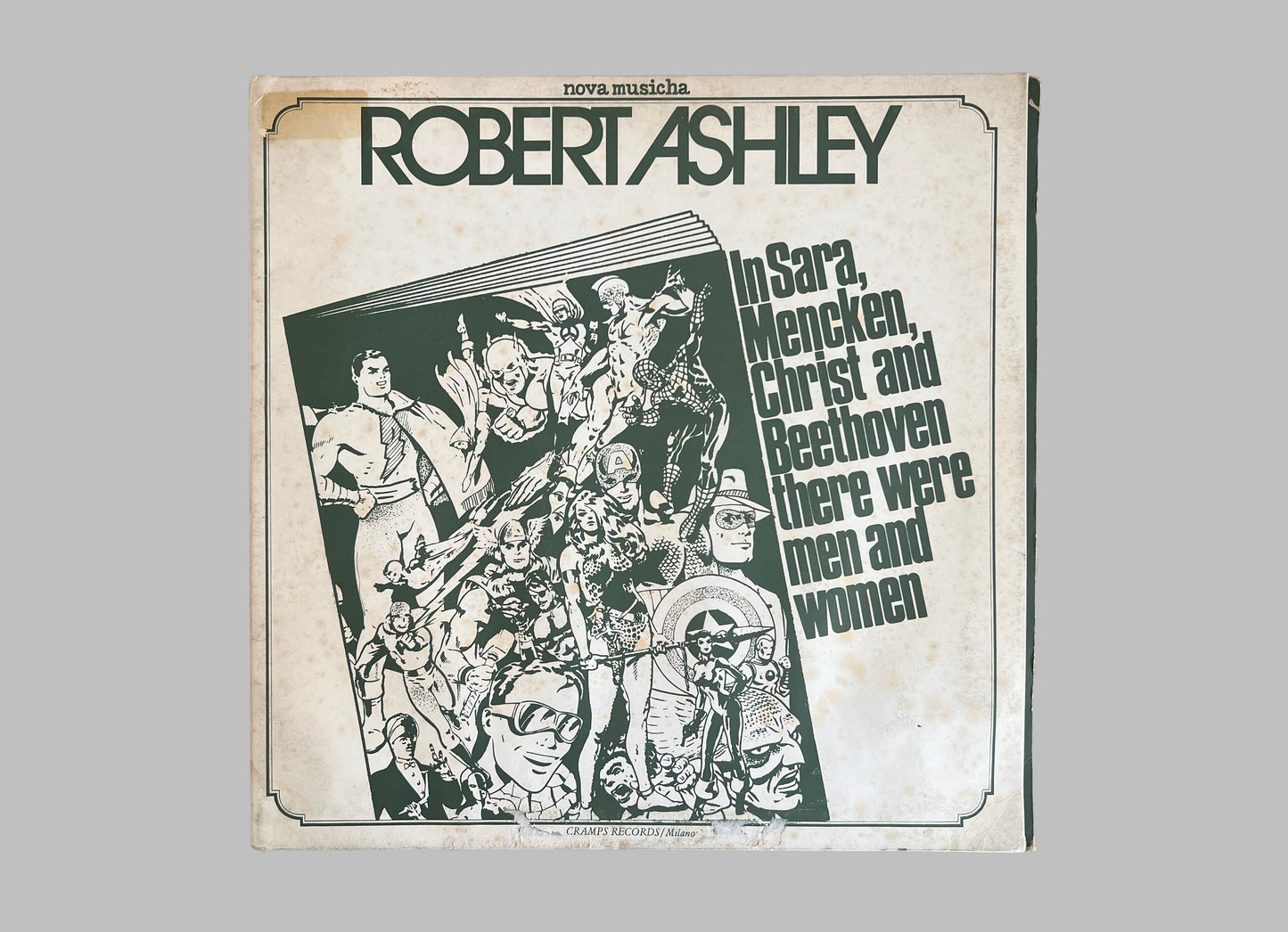
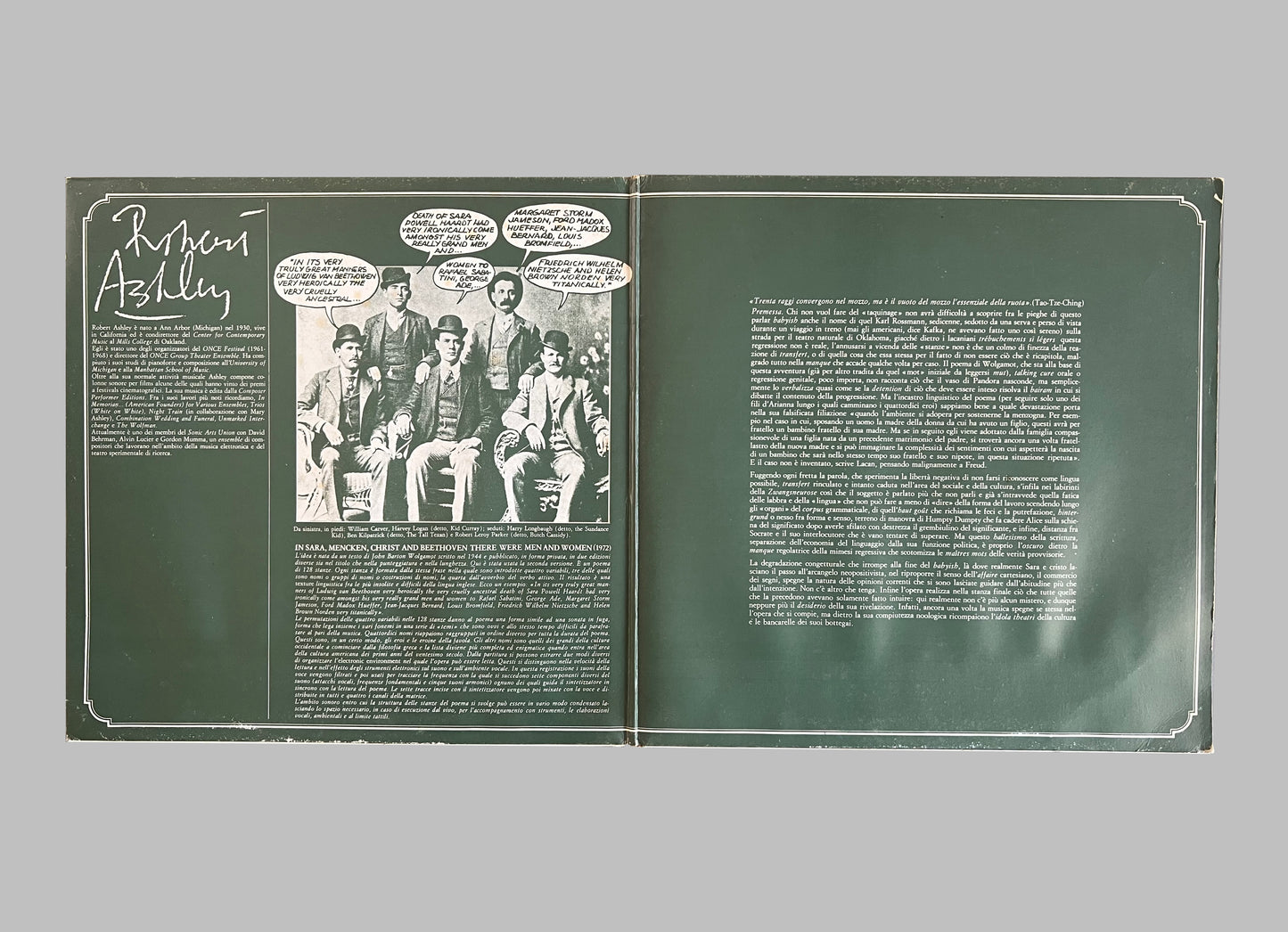
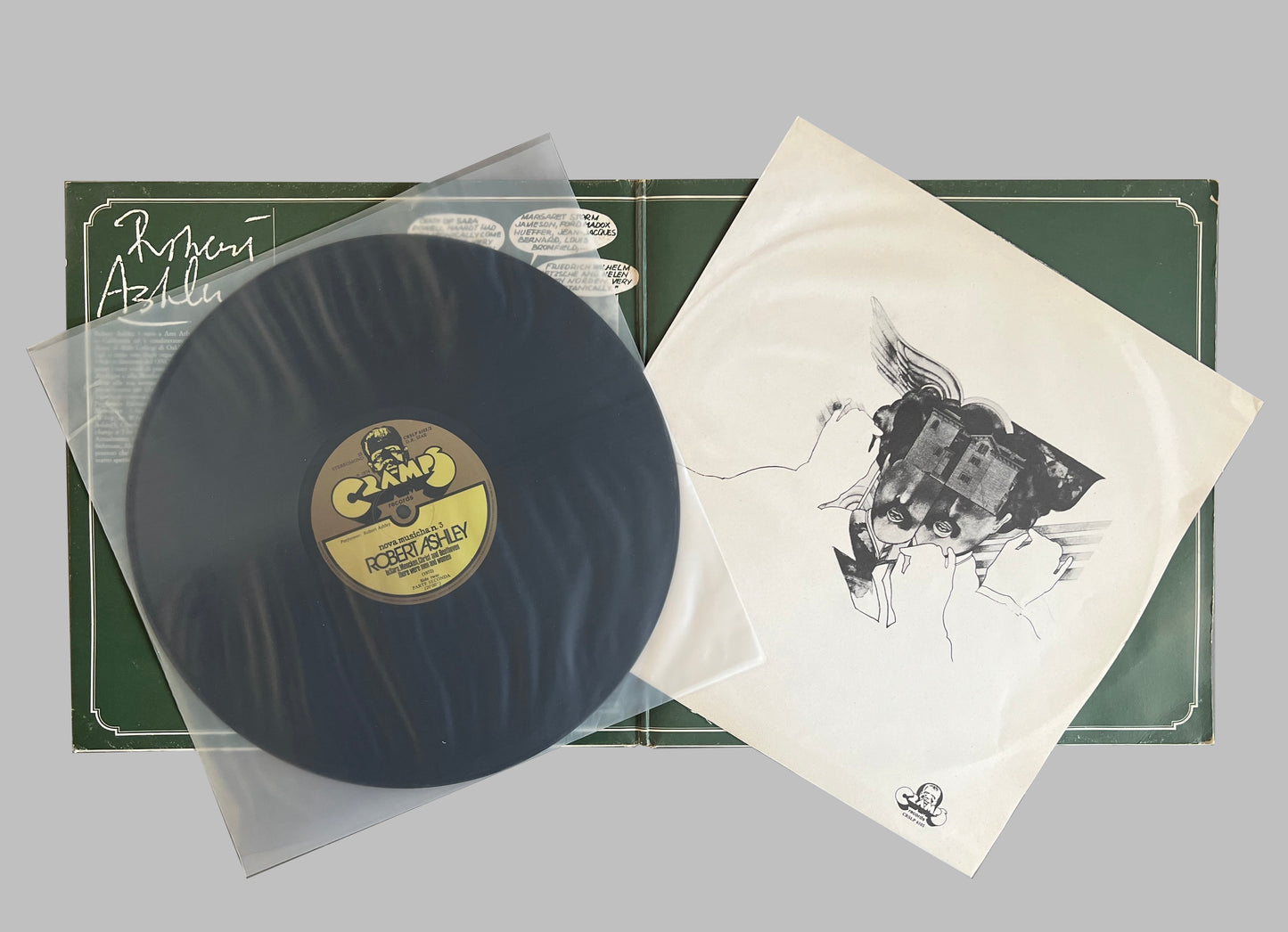
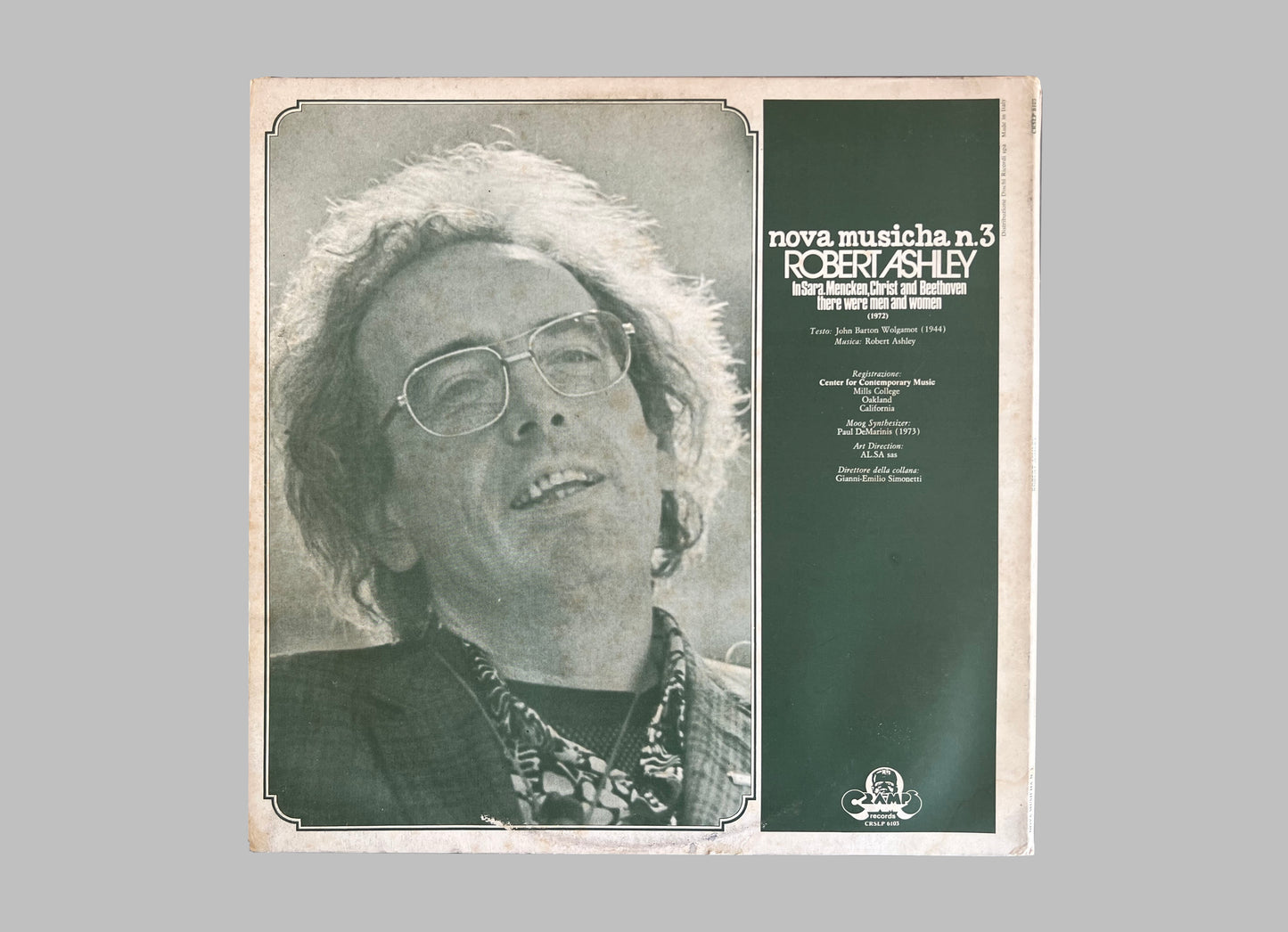
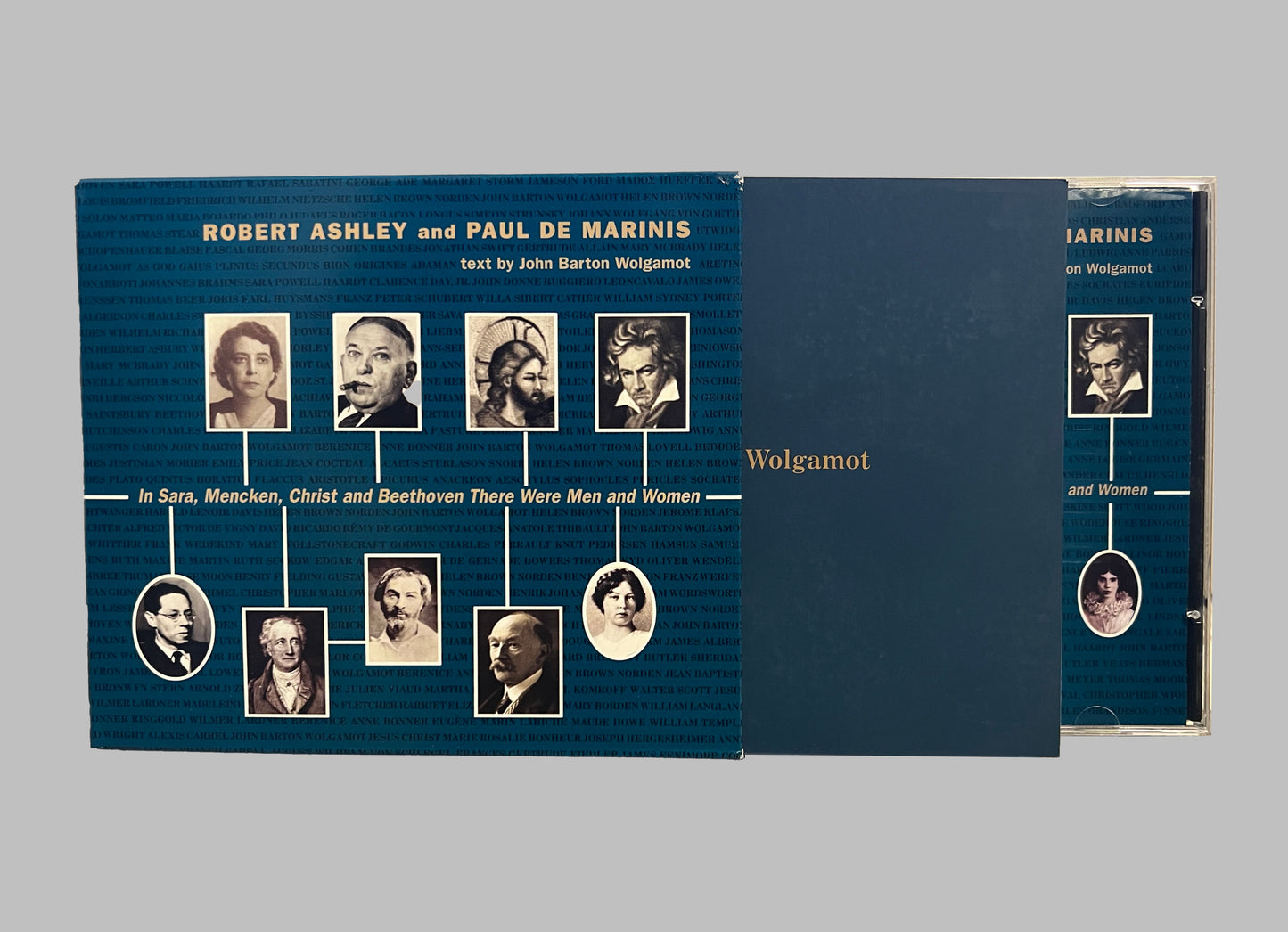
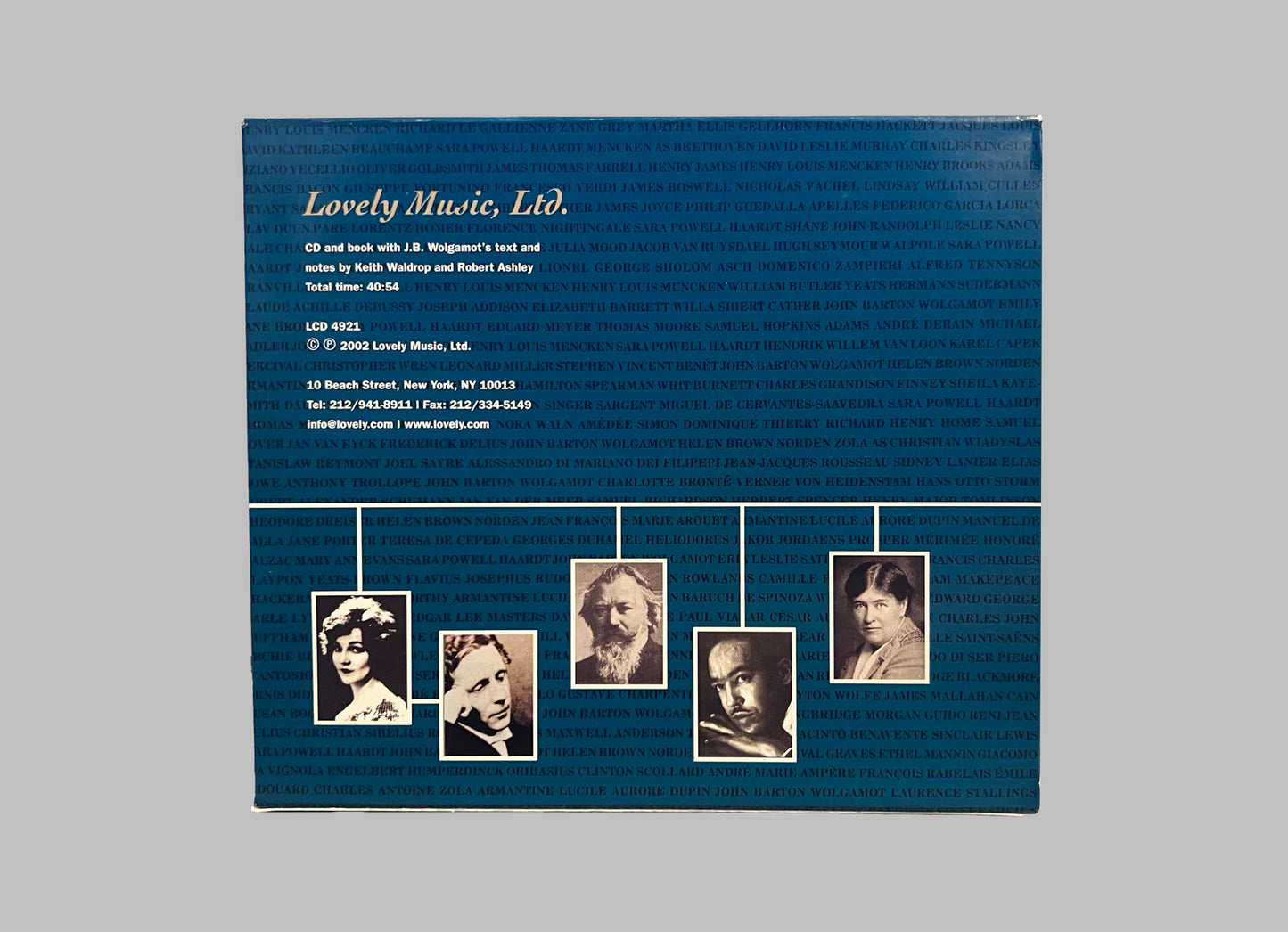
Perfect Lives Blu-Ray
16 page booklet
UPC: 745295491781
Region 0 (Worldwide)
LBR 4917
’These are songs about the corn belt and some of the people in it… or on it.’
Comissioned by NYCs ‘The Kitchen’ in 1978, written for television in 1980, and presented in 1984. Robert Ashleys ‘Perfect Lives’ has received a tasteful face lift courtesy of Lovely Music Ltd. and the original post production editor Dean Winkler.
‘An opera for television’ told in seven parts / 3 hours total. For someone unfamiliar with Robert Ashley; this may be the most informative entry point to begin your journey.
This new NTSC to HD re-master beautifully preserves the original presentation; a 4:3 aspect ratio in addition to a complete surrender to ‘shot on video’.
Booklet contains on set photos as well as an essay by Ashley’s biographer Kyle Gann, and a review by Charles Hagen.
Ambitious and life affirming. Highest possible recommendation.
Lovely Music Ltd. Description:
Robert Ashley, solo voice; Jill Kroesen and David Van Tieghem, chorus; "Blue" Gene Tyranny, keyboards; David Van Tieghem, non-keyboard percussion; Peter Gordon, music producer; Paul Shorr, soundtrack producer; Dean Winkler, image processing and videotape editor.
Perfect Lives has been called "the most influential music/theater/literary work of the 1980s." At its center is the hypnotic voice of Robert Ashley. His continuous song narrates the events of the story and describes a 1980's update of the mythology of small town America. Perfect Lives is populated with myriad characters revolving around two musicians — "R", the singer of myth and legend, and his friend, Buddy, "The World's Greatest Piano Player". They have come to a small town in the Midwest to entertain at the Perfect Lives Lounge. As Robert Ashley describes in the opera synopsis, "they fall in with two locals to commit the perfect crime, a metaphor for something philosophical: in this case, to remove a sizable about of money from The Bank for one day (and one day only) and let the whole world know that it was missing."
The eloping couple, Ed and Gwyn, the old people at the home, the sheriff and his wife (Will and Ida) who finally unravel the mystery, and Isolde who watches the celebration of the changing of the light at sundown from the doorway of her mother's house are some of the characters who journey through the seven episodes of the opera.
Derived from a colloquial idiom, Perfect Lives transforms familiar material into an elaborate metaphor for the rebirth of the human soul. It has been called a comic opera about reincarnation.
The 1983 video was upgraded to 1080 HD and remasterd in 2022-23. A 16 page booklet inside includes Robert Ashey's synopsis plus articles on the music by Kyle Gann, and on the video by Charles Hagen
Full Synopsis and Background:
http://www.lovely.com/albumnotes/notes4917history.html
Share
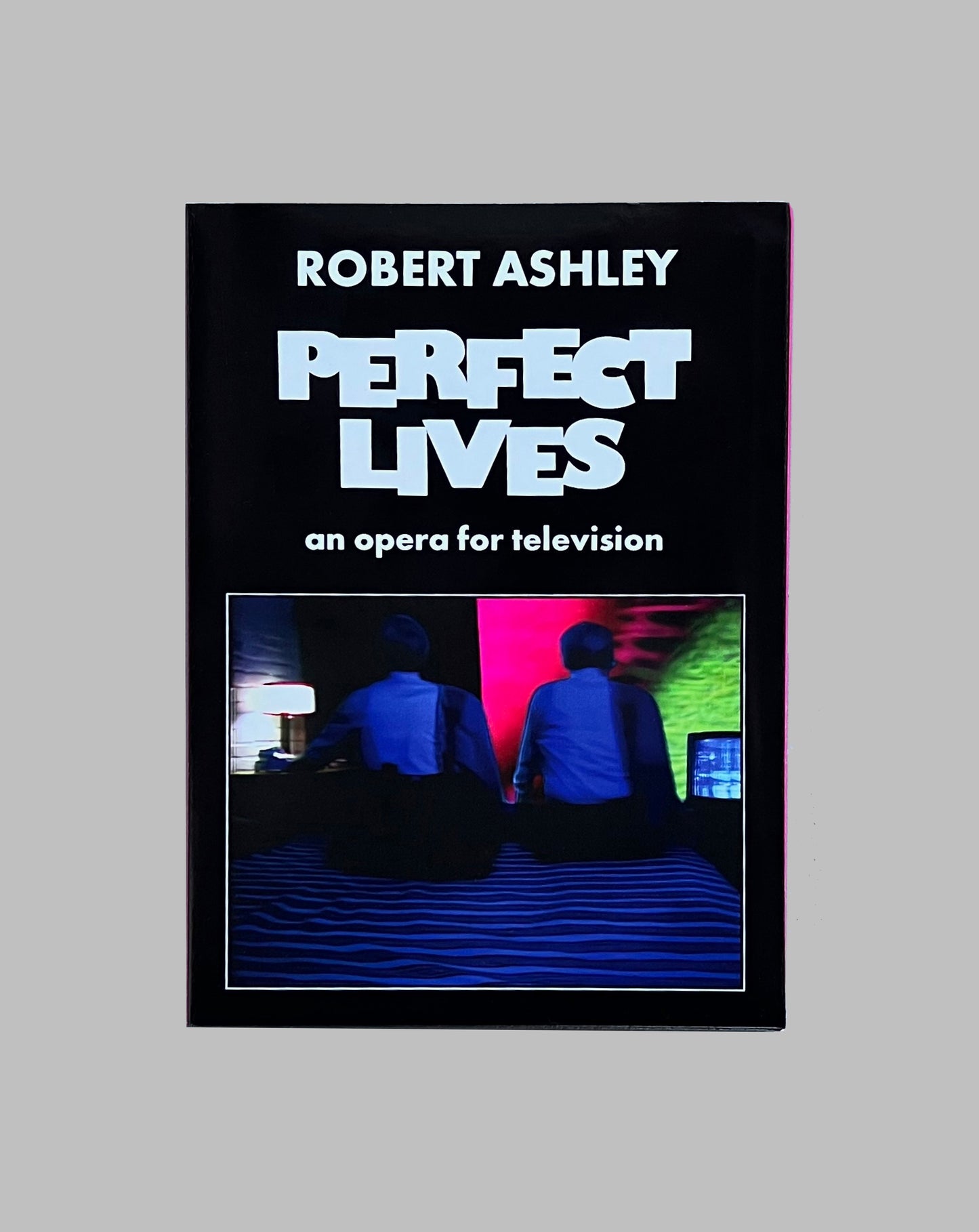
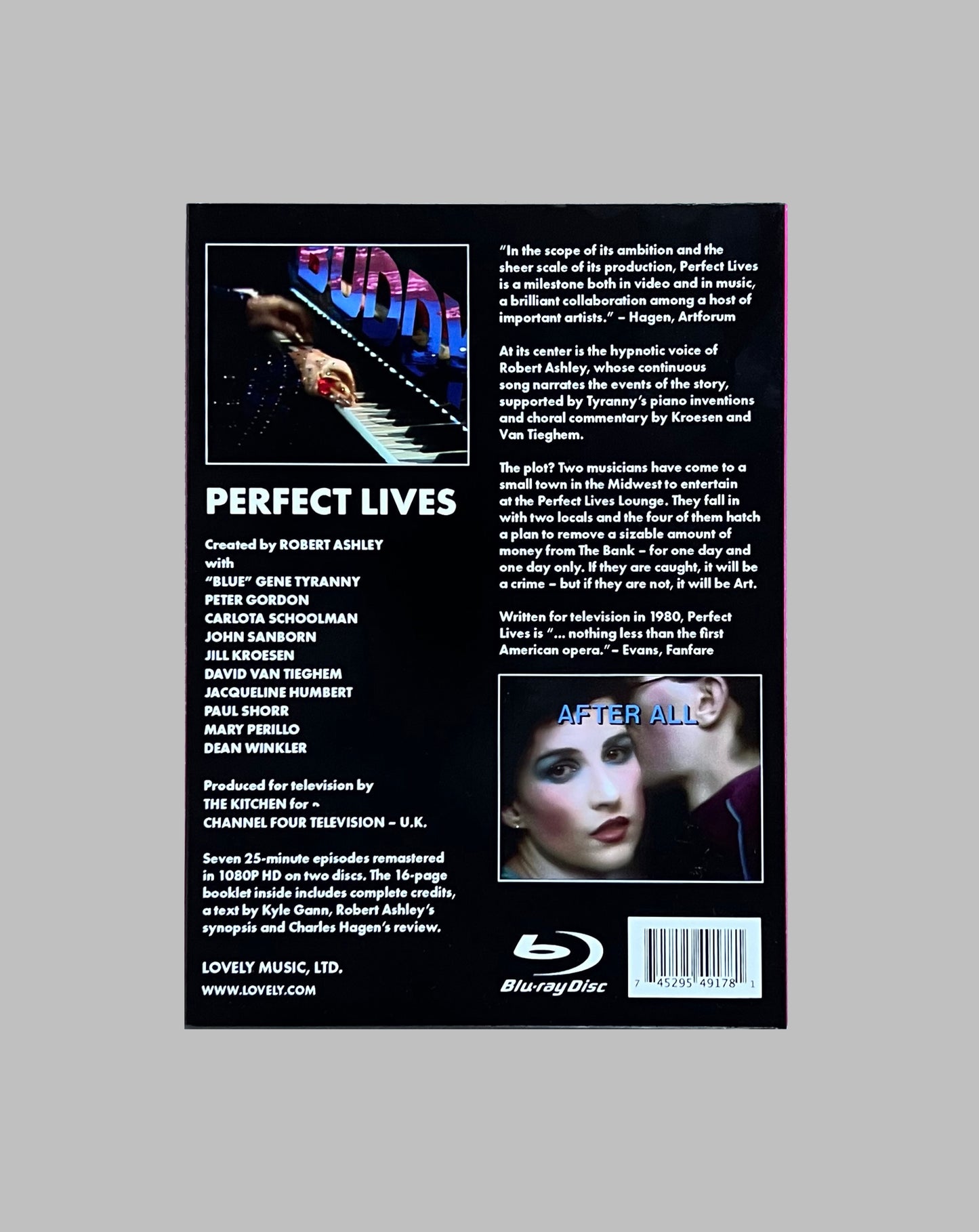
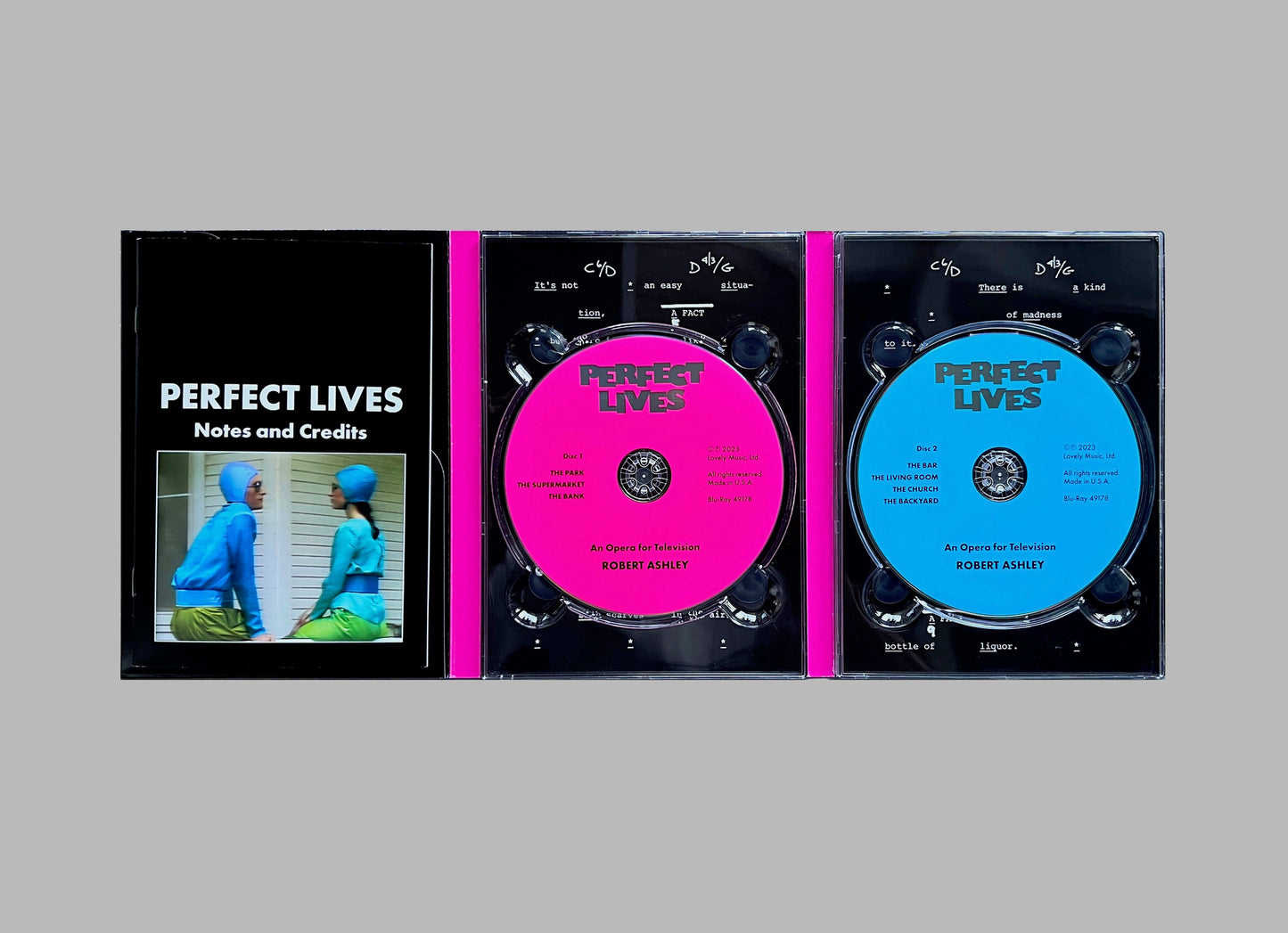
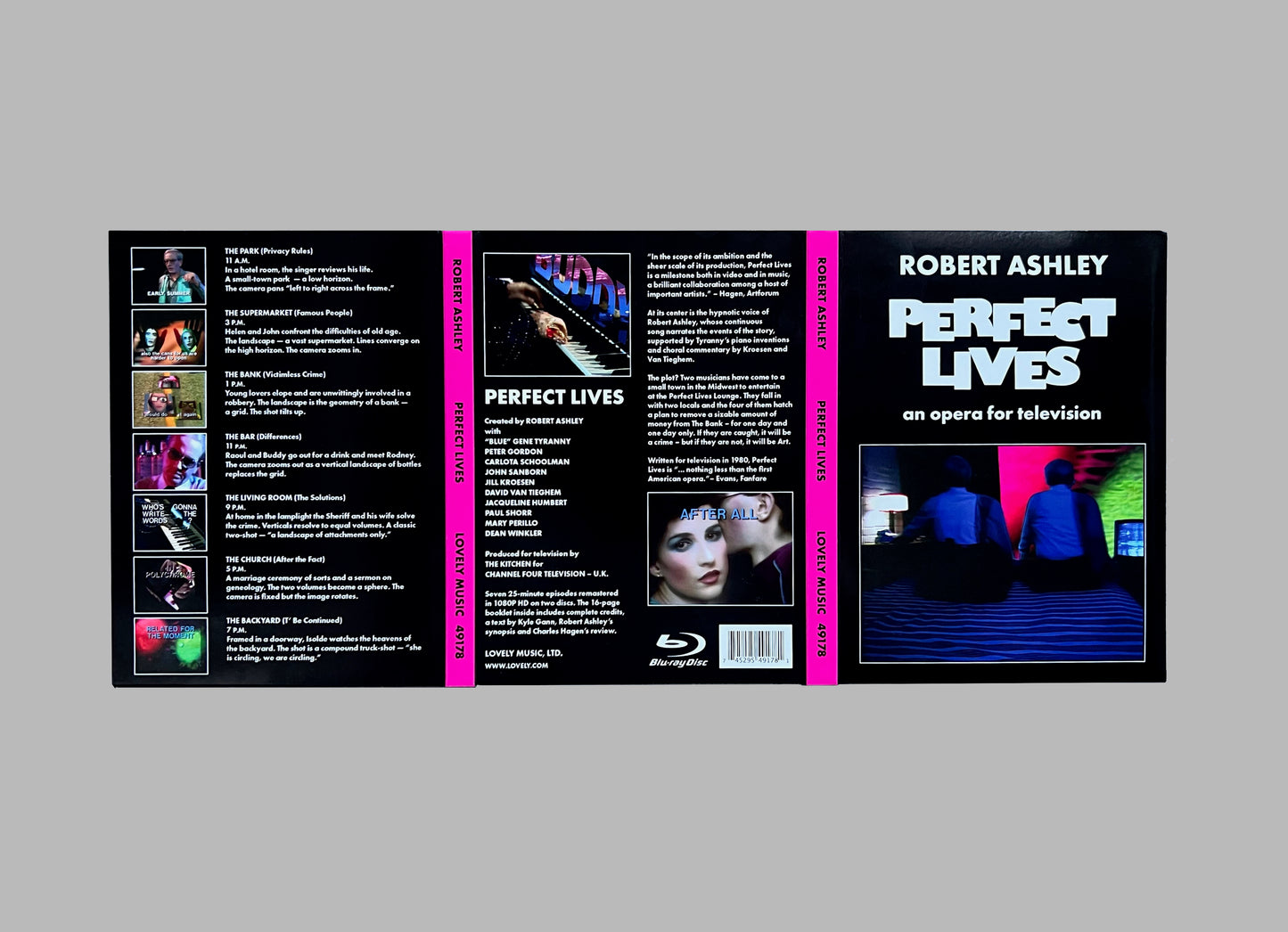
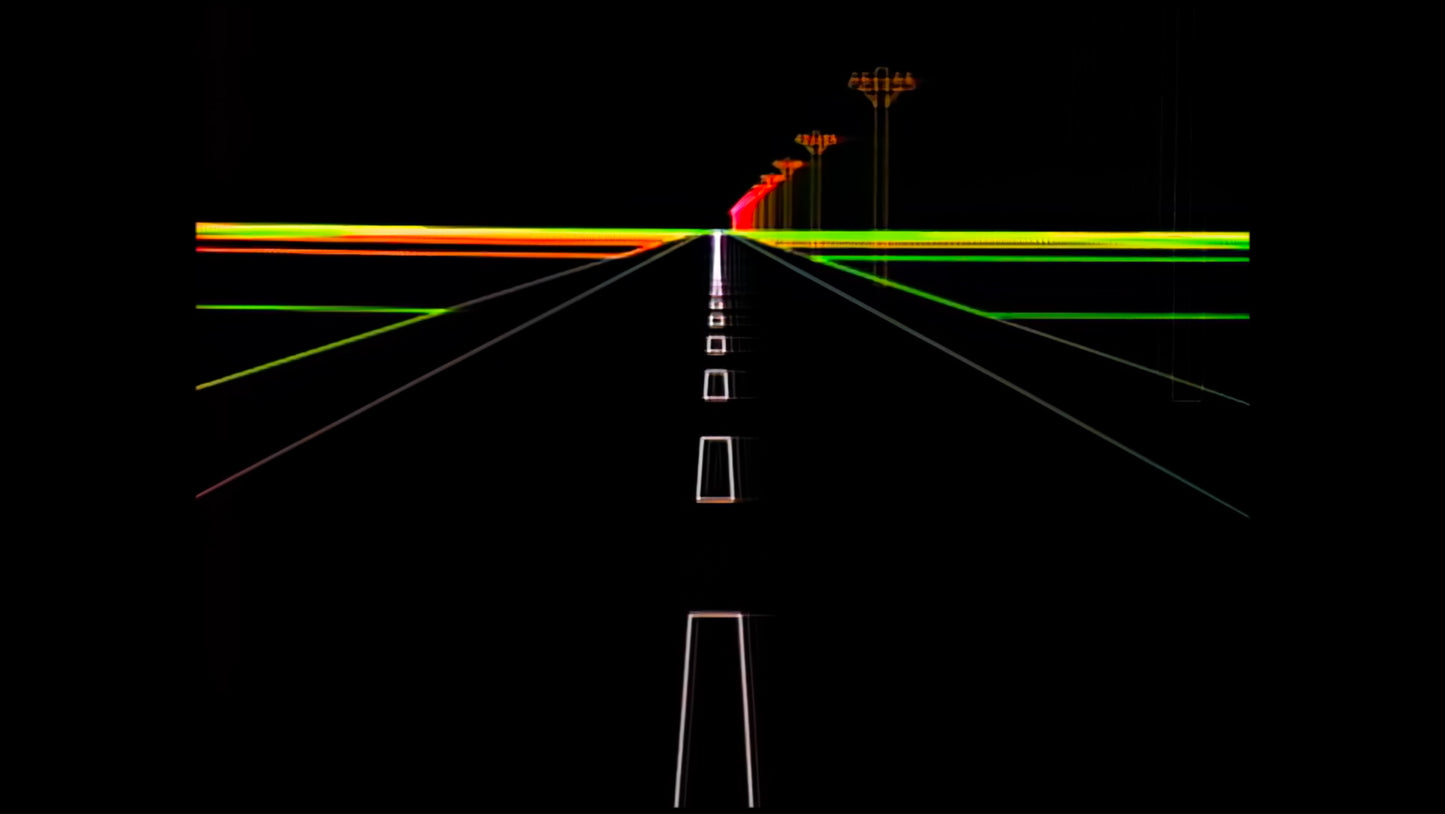
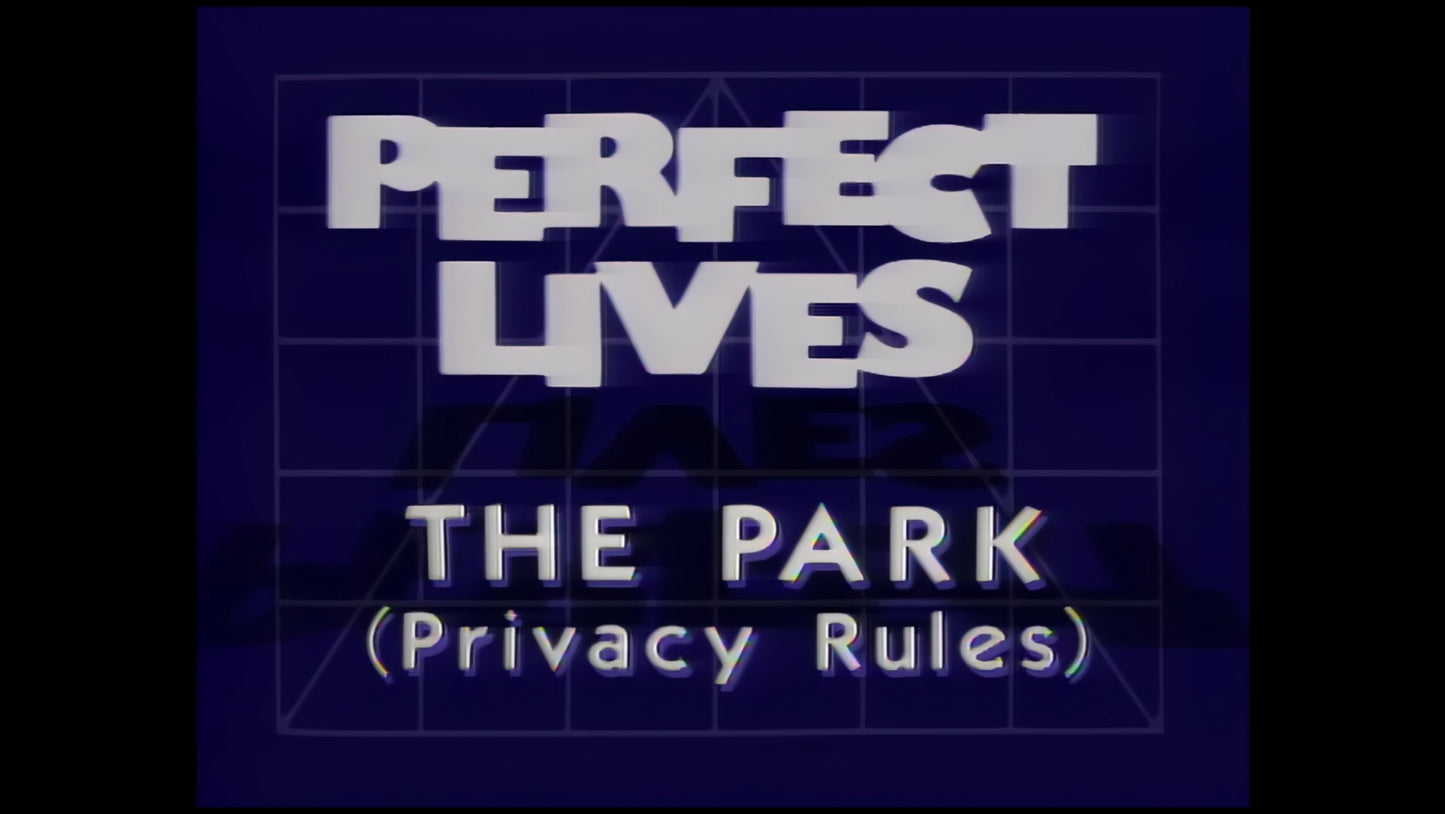
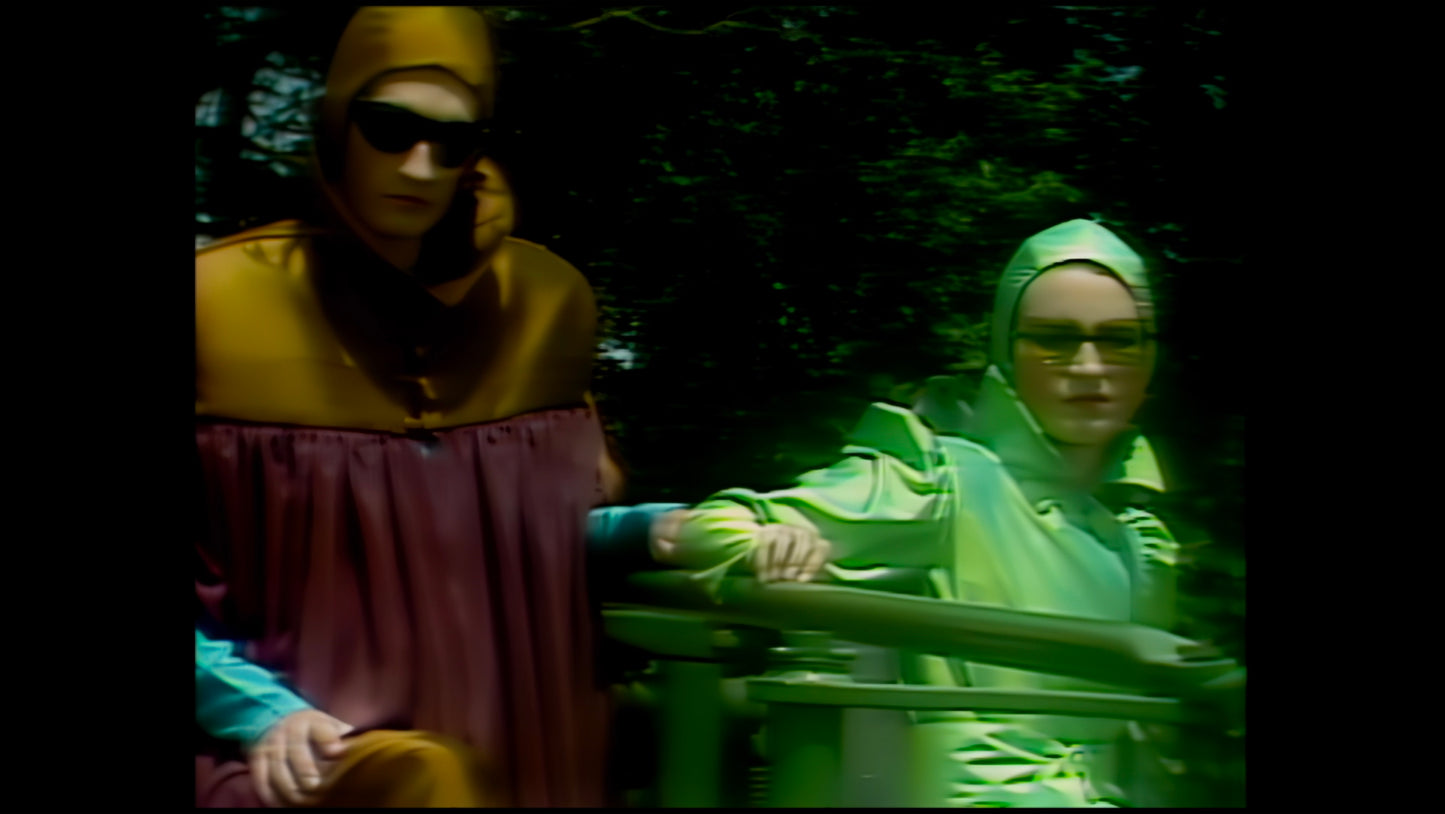
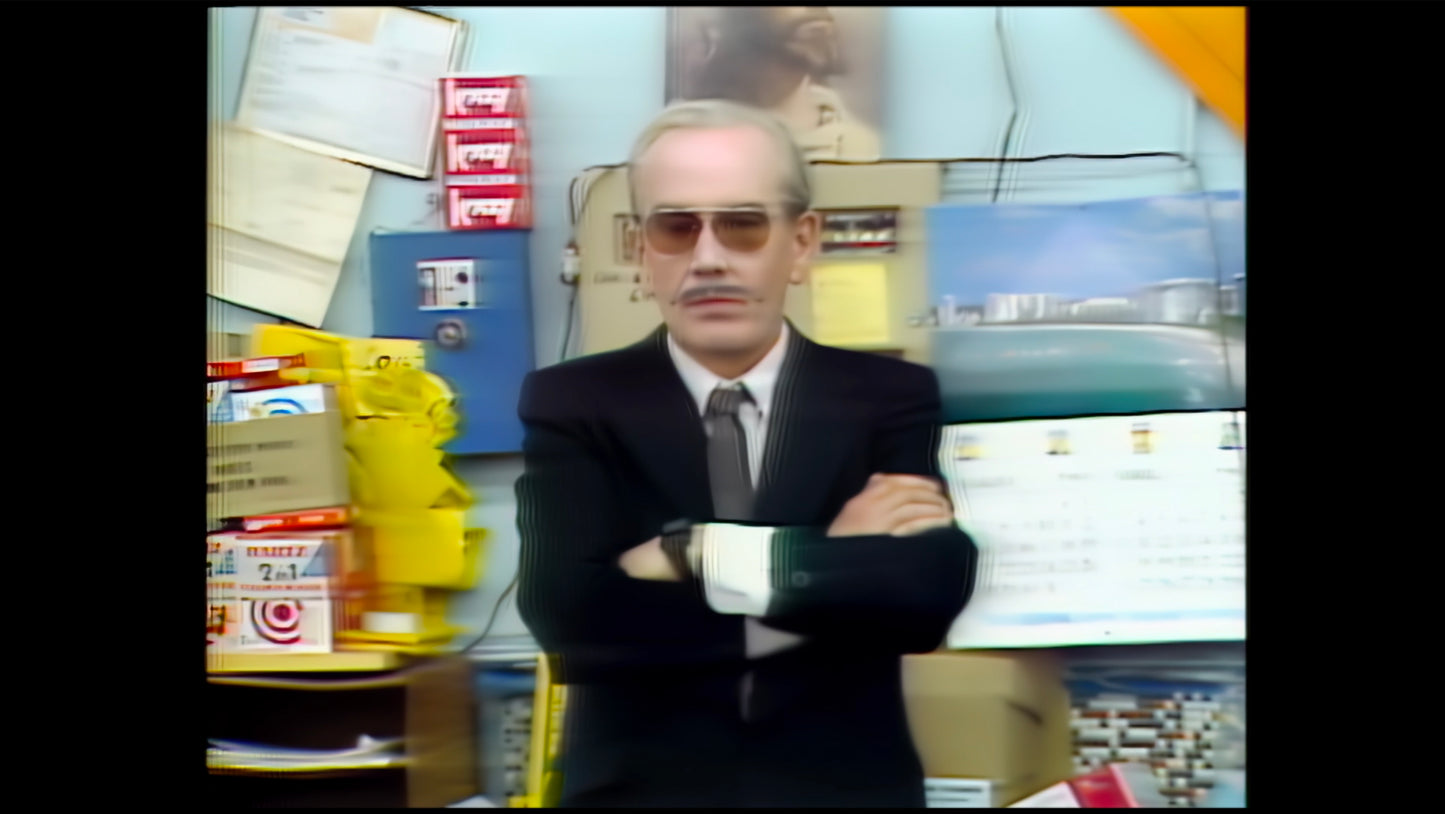
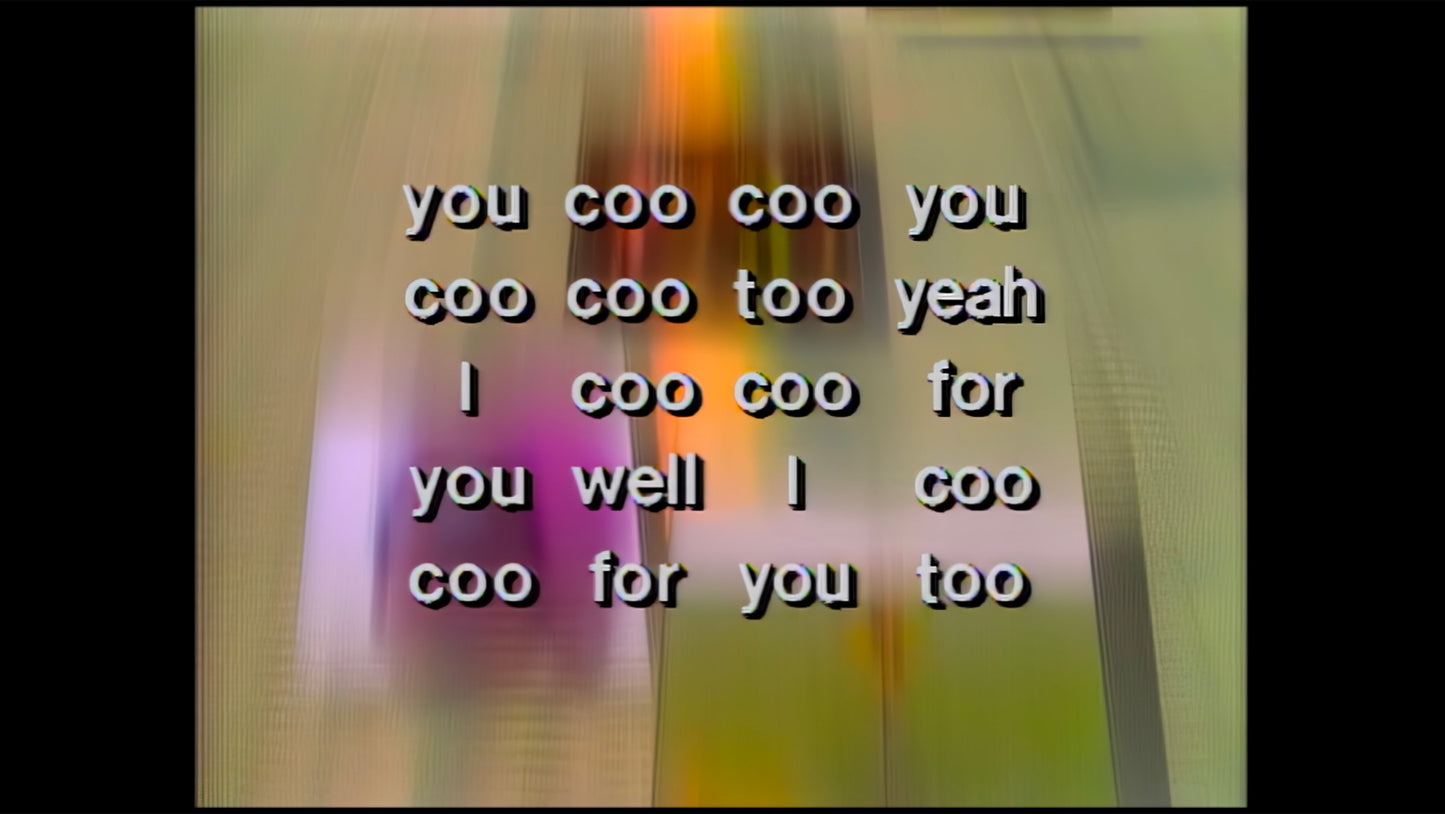
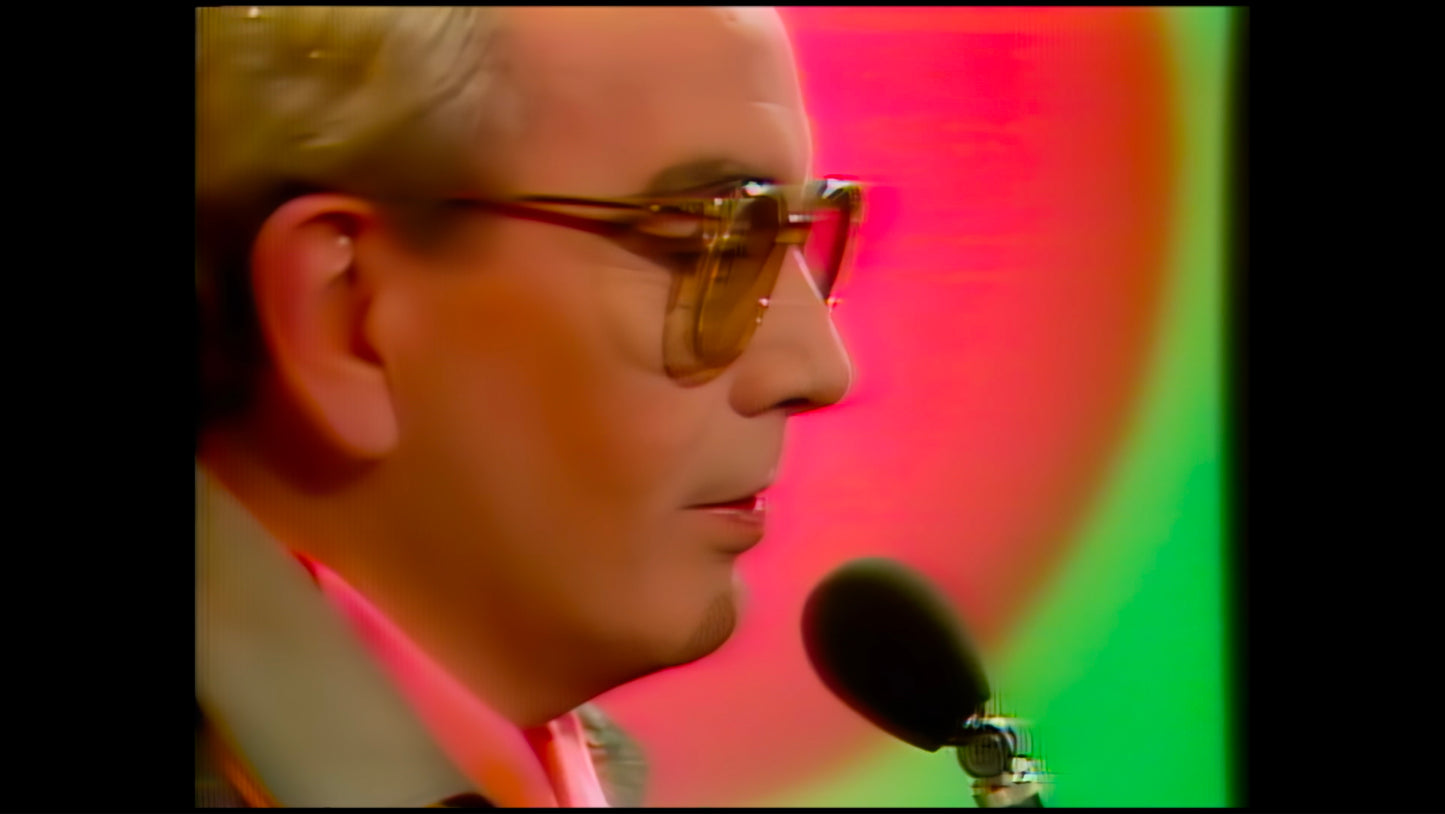
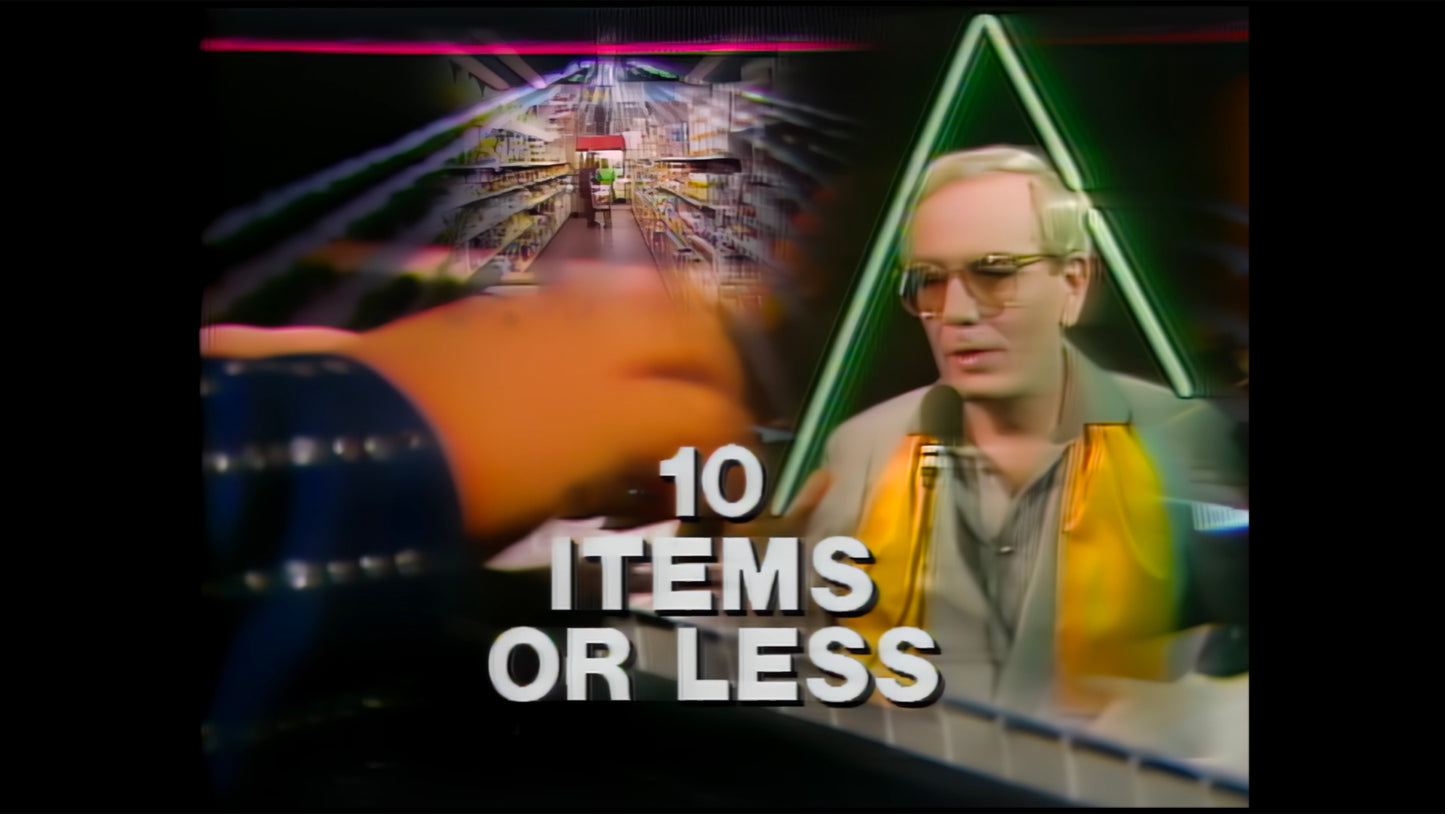

Laetitia Sonami - Dangerous Women: Early Works 1985-2005 2xCD (LCD 4011)
2xCD
Voice, Electronics, and lady's glove by L. Sonami
Words by Melody Sumner Carnahan
Mastered by Brendan Glasson
Lovely Music - (LCD 4011CD)
L. Sonami Website
S. Carnahan Website
Laetitia Sonami was born in France, where she studied with Eliane Radigue. She moved to the United States to study electronic music, first with Joel Chadabe at SUNY Albany, then at Mills College where she was mentored by Robert Ashley and David Behrman. Laetitia Sonami is not only a gifted composer/designer of electronic music, but a compelling presence on stage. This collection of early works covers a period when Sonami transitioned from live mixing with cassettes, homemade analog synths and objects in the early eighties, to working with MIDI, MAX software and "off the shelf" synths and samplers. At the same time, she begins a long collaboration with Melody Sumner Carnahan, using her dramatic texts to evoke characters and behaviors to inhabit musically and visually. All but two of the works on this release utilize Sumner Carnahan's stories, and all but one use Sonami's famous invention, the lady's glove, an arm-length tailored glove fitted with movement sensors allowing the perform to fluidly control digital sound parameters and processing, as well as motors, lights and video playback. Sonami has since moved on to works for another of her inventions, the Spring Spyre, which applies Machine Learning to real time audio synthesis.
Share



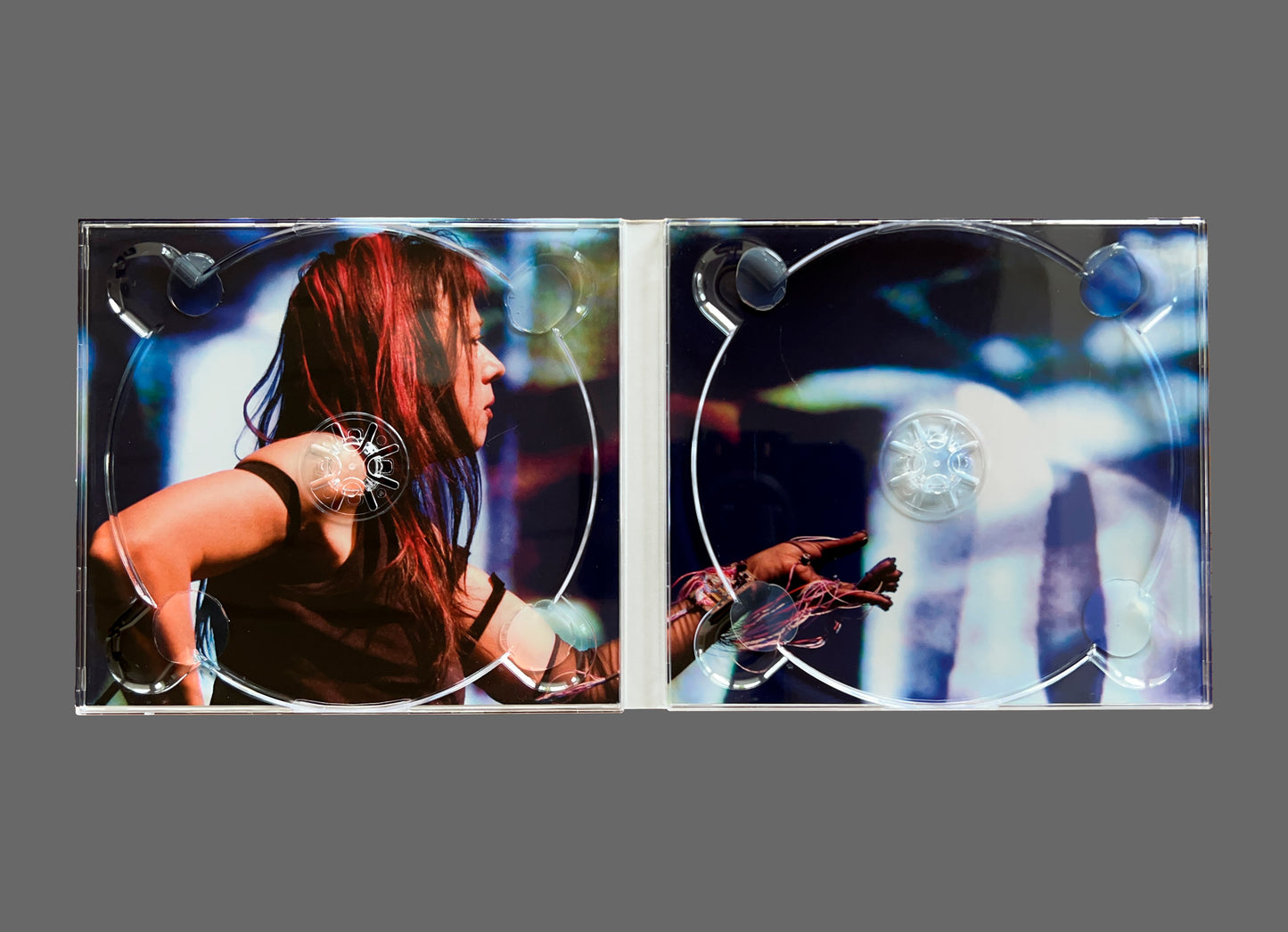
Laetitia Sonami / Éliane Radigue - A Song For Two Mothers / OCCAM IX LP (BT122) (Signed by Artist)
LP
Liner Notes by Éliane Radigue, Laetitia Sonami, Paul DeMarinis
Insert signed by Laetitia Sonami
Layout by Lasse Marhaug
Mastered by Joe Talia and Brendan Glasson
A Song For Two Mothers / OCCAM IX Bandcamp
Sonami Webpage
Sonami VImeo
Description via Black Truffle:
Black Truffle is thrilled to present a Song for two Mothers / Occam IX the first ever solo release from Laetitia Sonami. Born in France in 1957, Sonami studied with Éliane Radigue in Paris before moving to California in 1978 to study electronic music at Mills College, going on to make important innovations in the field of live electronics interfaces and multi-media performance. Sonami is perhaps most closely associated with one of her inventions, the Lady’s Glove, an arm-length tailored glove fitted with movement sensors allowing the performer fluidly to control digital sound parameters and processing, as well as motors, lights and video playback. Having performed with the Lady’s Glove for 25 years, Sonami retired it in 2016, turning her attention to the interface/instrument heard and pictured here, the Spring Sprye.
In Sonami’s own description, “The Spring Spyre is composed of three thin springs that are attached to reverb tank pickups, mounted on a metal ring. The audio generated when the springs are touched, rubbed or struck is analyzed in Max/MSP. The extracted features are then used to train machine learning models in Wekinator and Rapidmax and control the audio synthesis in real time. We never actually hear the springs.” After decades of aversion to documenting her work on recordings, a Song for two Mothers / Occam IX treats listeners to two side-long performances with the Spring Spyre: the very first piece developed for the instrument and the most recent, the two contrasting remarkably in sound palette, energy and form. A Song for two Mothers (2023) spins an intricate web of rippling synthetic burbles, rapid sweeps and fizzing textures. Performed in real time with the sensitive and partly uncontrollable Spring Sprye ("a bit tyrannical," Sonami calls it), the music is delicate yet chaotic. Abrupt gestures hover against a backdrop of silence, "devoid of spatial or temporal direction". After several minutes, the sound-world becomes metallic and percussive, tapping and ticking in pointillistic flurries before a wavering harmonic cloud emerges, sprinkled with resonant drips and pops.
Occam IX is a radically different proposition. At the outset of Sonami’s exploration of the Spring Sprye, she asked her former teacher Éliane Radigue to compose a piece for it—and her: like all of Radigue’s work since she ceased working with analogue electronics at the beginning of the 21st century, Occam IX is written not only for an instrument but also for a particular performer. These scores are developed verbally, through meetings and conversations between performer and composer; each is grounded in an image (usually kept from listeners, to avoid influencing their experience); all magnify the subtlest acoustic phenomena and require great commitment and patience from the performer. Sonami’s is one of the few Occam pieces to make use of electronics, bringing it closer to Radigue’s famous longform pieces for ARP 2500. Beginning from a rumbling low tone, the listener is gradually immersed in slowly lapping waves of synthetic tones, eventually thinning out into delicate bell-like pings against a background of white noise, reminiscent of one of the most beautiful sections of Kyema from the Trilogie de la Mort. Accompanied by notes from Sonami, her longtime collaborator Paul DeMarinis, and Radigue, and illustrated with scores, photographs and images of the Spring Spyre, a Song for two Mothers / Occam IX is an essential document celebrating an under-recognised pioneer of electronic music and performance.
Share
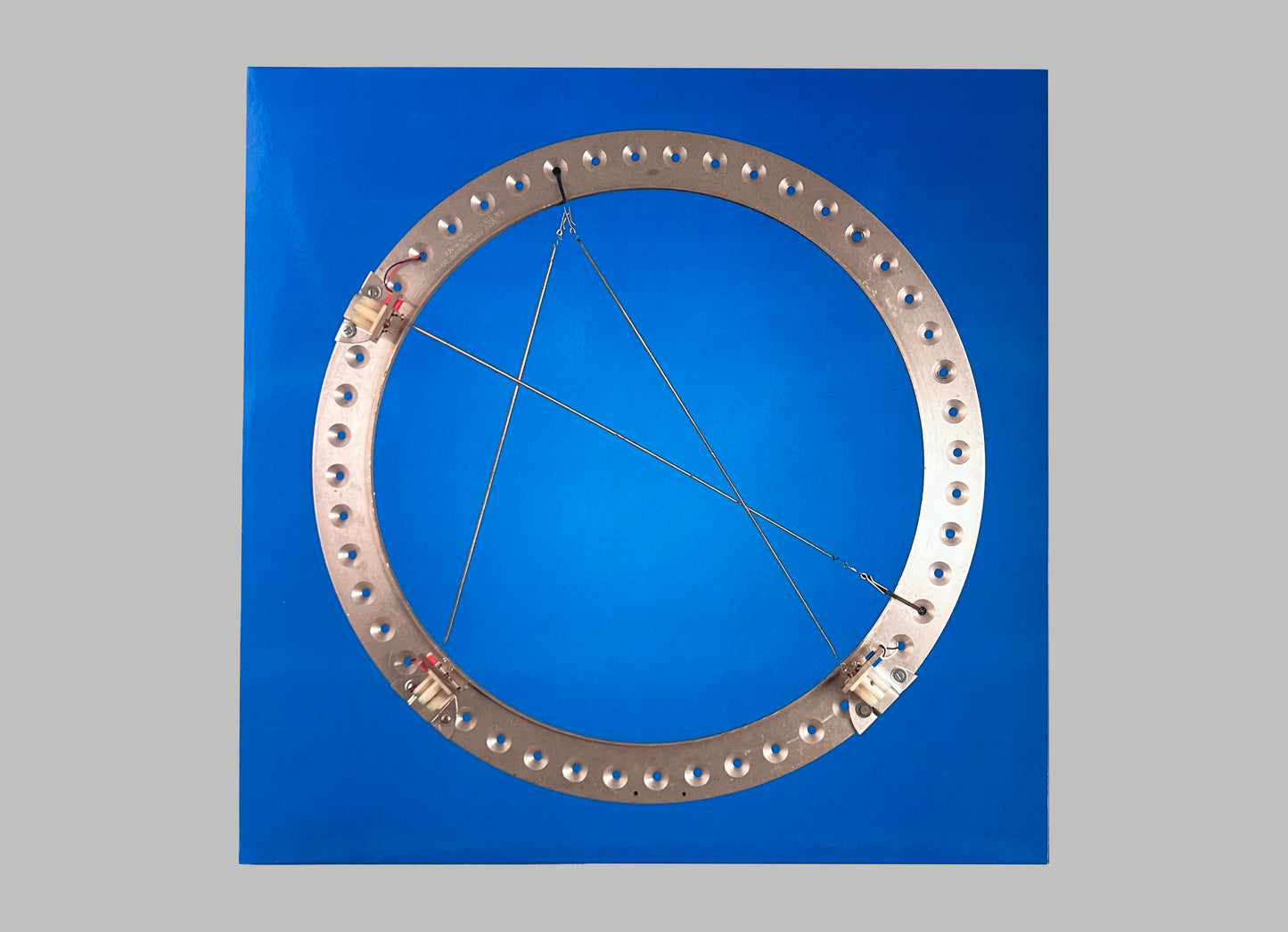
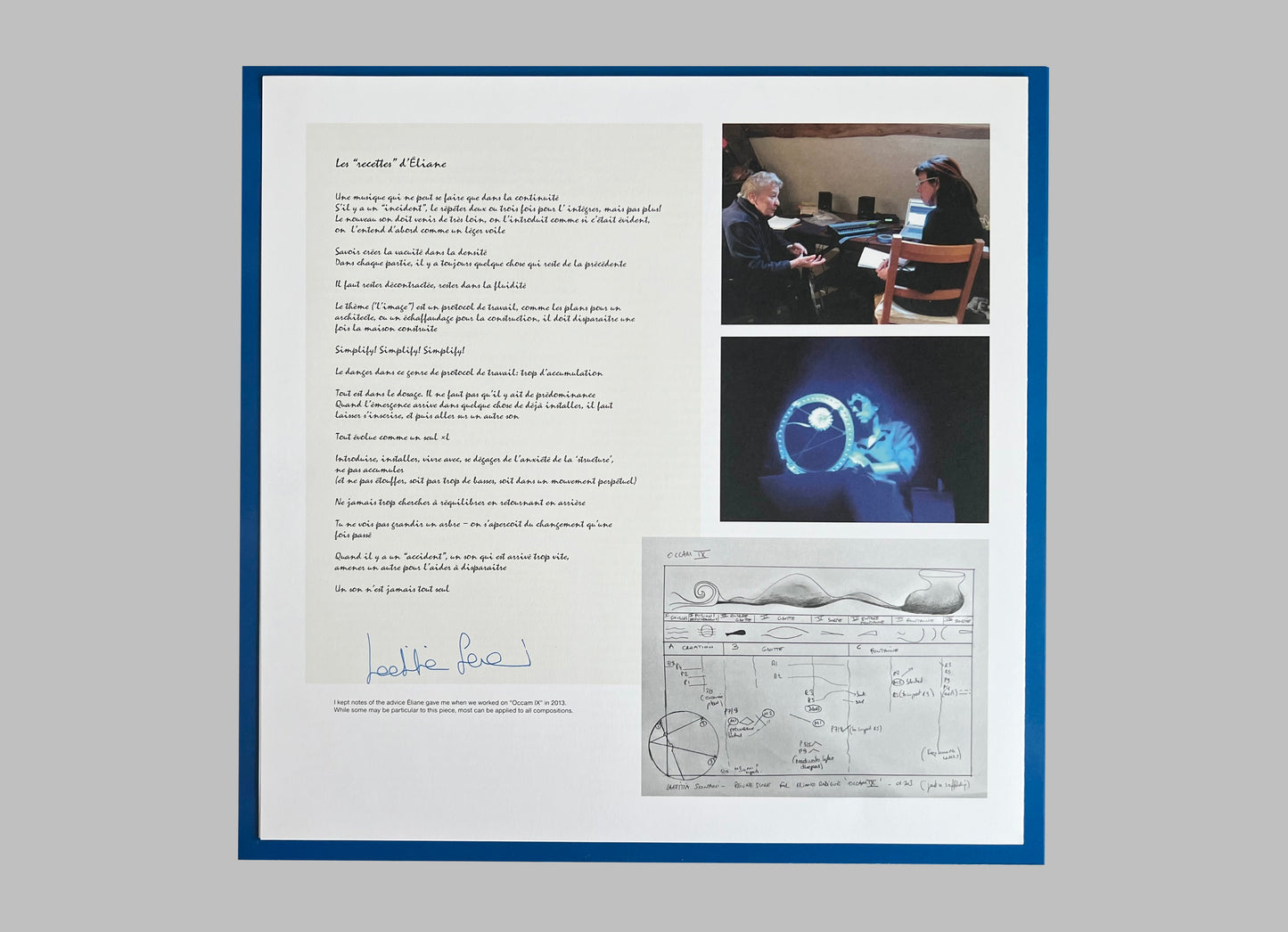
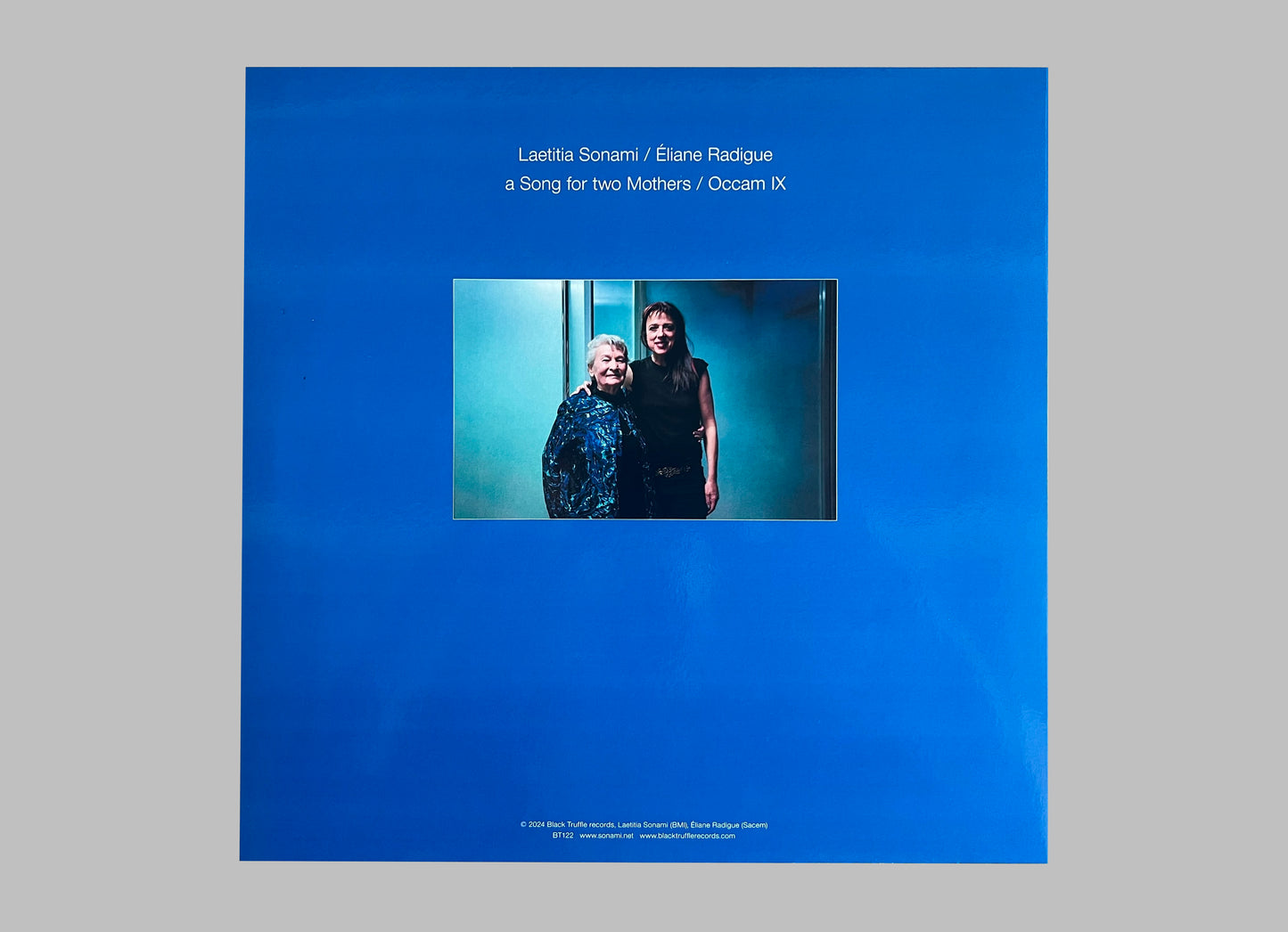
Behrman, DeMarinis, Friedman, Hanlon, Klingensmith - She’s More Wild… LP (BT059)
Gatefold Sleeve w/ Liner Notes
Layout by Lasse Marhaug
Mastered by Kassian Troyer
'She's More Wild...' Bandcamp
Description via Black Truffle:
Black Truffle are honoured to announce the release of She’s More Wild, a collaborative project by David Behrman, Paul DeMarinis, Fern Friedman, Terri Hanlon and Anne Klingensmith recorded at Mills College in 1981. Previously known only to cognoscenti through an obscure self-released three-track 7”, this is the first publication of the complete album, an outrageous confection that mixes art-song and theatrical monologue with live electronics. Starting life as a performance art piece described by the artists as ‘Western Performance Noir’, the record centres on a series of texts written by Friedman and Hanlon in which female narrators comically embody a series of iconic roles (The Recording Artist, The Former Movie Star, and The Rancher). Other lyrical themes include recurring references to the notorious cannibal pioneers, the Donner Party, an ironic take on Japanophilia, and the luscious “Archetypal Unitized Seminar,” a satirical poke at self-help culture, whose lyrics are rendered in Indian raga style to the accompaniment of electronic glissandi and toy noisemakers.
Share
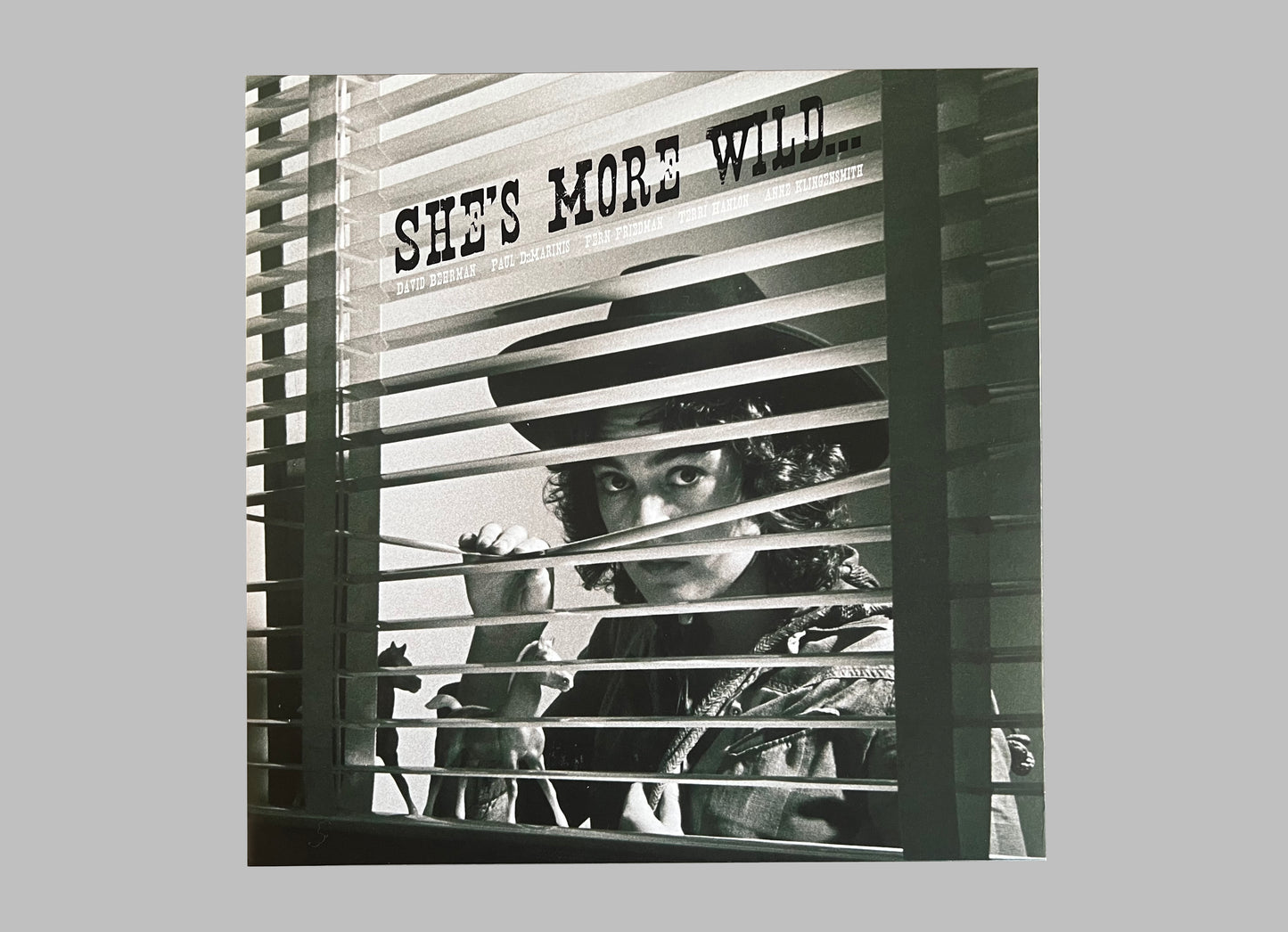
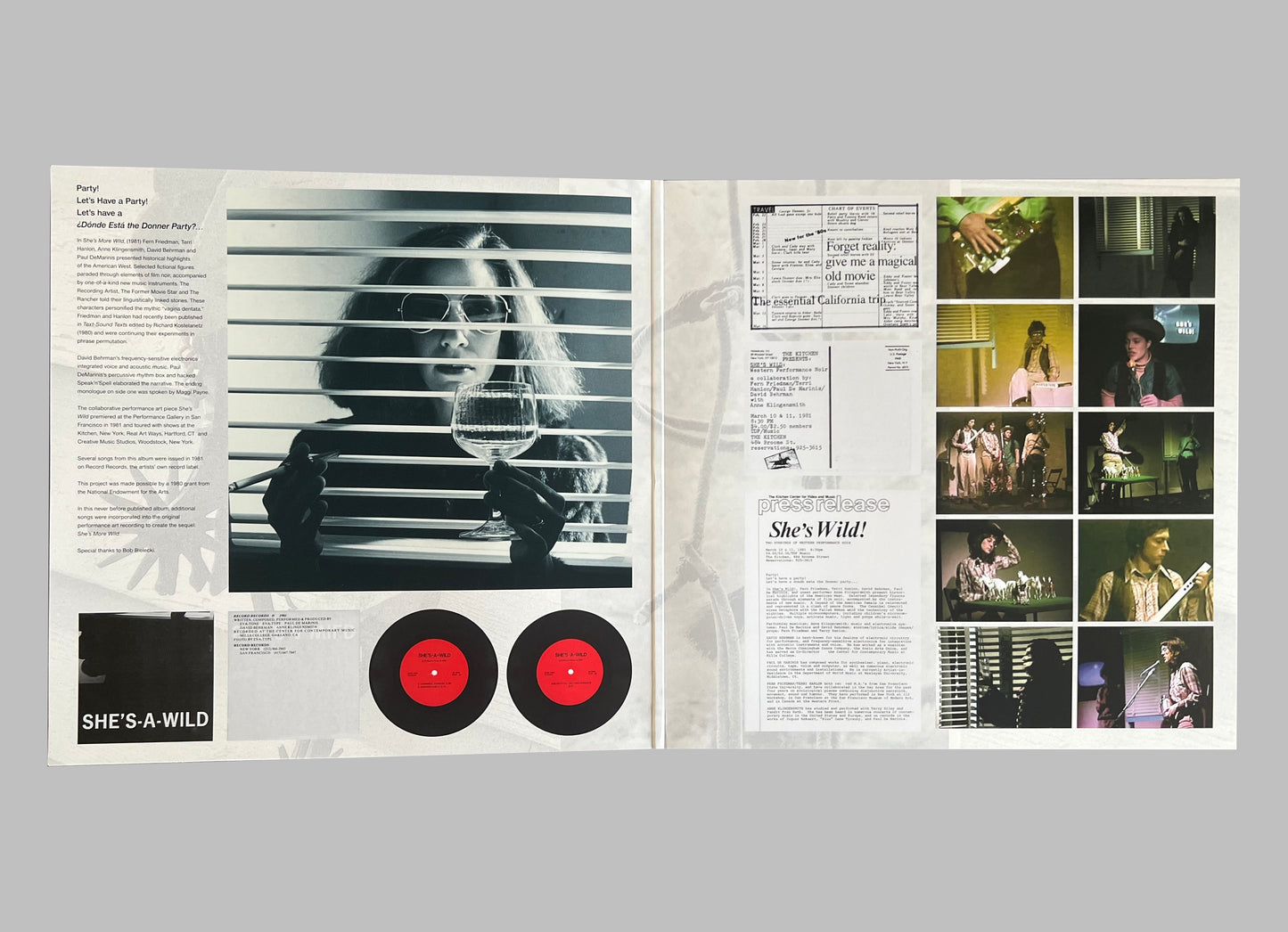
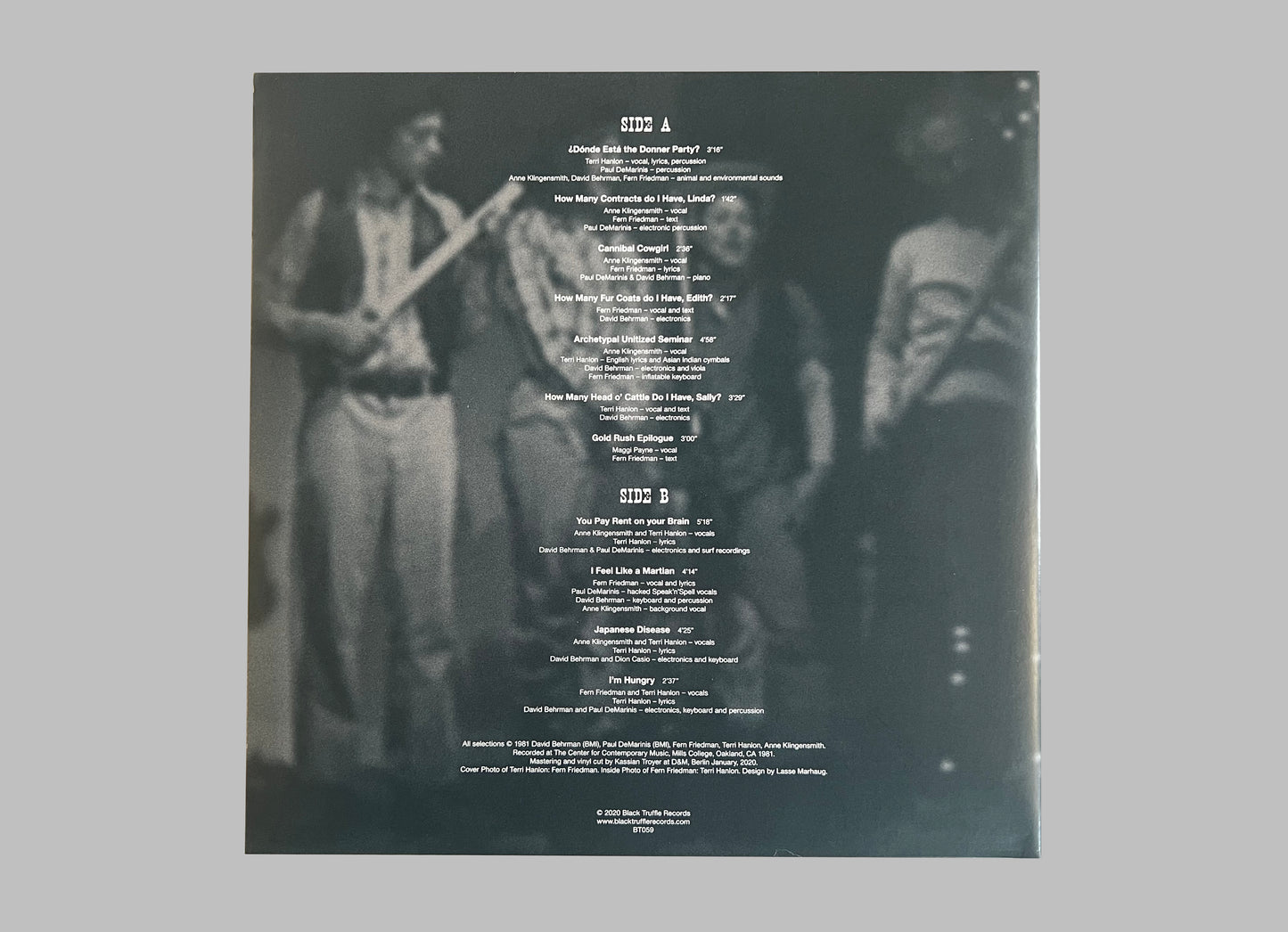
Eliane Radigue 'Oeuvres Electroniques' 14CD Box
14CD set housed in foldout rigid box
Includes 78 page booklet w/ Full English Translation
INA 6060/74 (2024 Repress)
'One COULD put 'everything' aside and grind through all that is offered in this more than generous box. BUT the duration of your listening session would be 16 hours and that's not the point. Radigue is one of the most important electronic musicians to emerge in the past 50 years. Her music will serve you well throughout your life and generations to come. Incredible; eloquent; transcendent; top tier. Comparisons can be made but Radigue has created her own criteria. (Recommended pieces 'Adnos I-II-III' and 'Trilogie de la Mort'.) - Ross
CD1
1. Chry-ptus (version 2001) 24’01
2. Geelriandre 29’57
CD2
1. Chry-ptus (version 2006) 23’10
2. Biogenesis 21’06
3. Arthesis 25’40
CD3
1. Ψ 847 (version concert) 71’08
CD4
1. Adnos I 71’28
CD5
1. Adnos II 72’44
CD6
1. Adnos III 72’40
CD7: Les Chants de Milarepa
1. Mila’s Song in the Rain 19’10
2. Song of the Path Guides 21’01
3. Elimination of Desires 17’22
4. Symbols for Yogic Experience 19’29
CD8: Les Chants de Milarepa
1. Mila’s Journey Inspired by a Dream 62’22
CD9: Jetsun Mila
1. Jetsun Mila (première partie) 44’25
CD10: Jetsun Mila
1. Jetsun Mila (seconde partie) 39’57
CD11: Trilogie de la Mort
1. Kyema 61’07
CD12: Trilogie de la Mort
1. Kailasha 56’09
CD13: Trilogie de la Mort
1. Koumé 51’18
CD14
1. L’Île re-sonante 55’04
Share
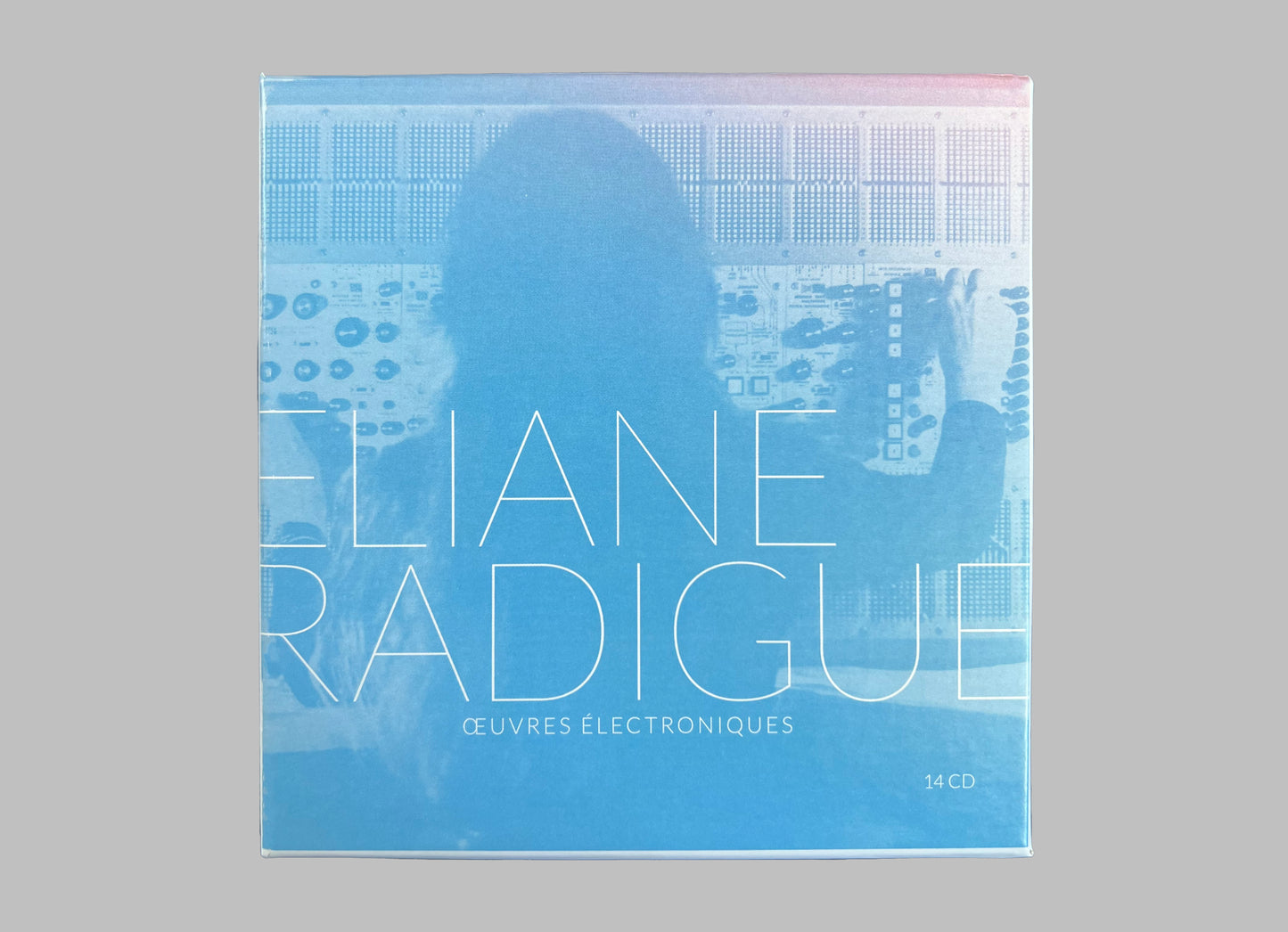
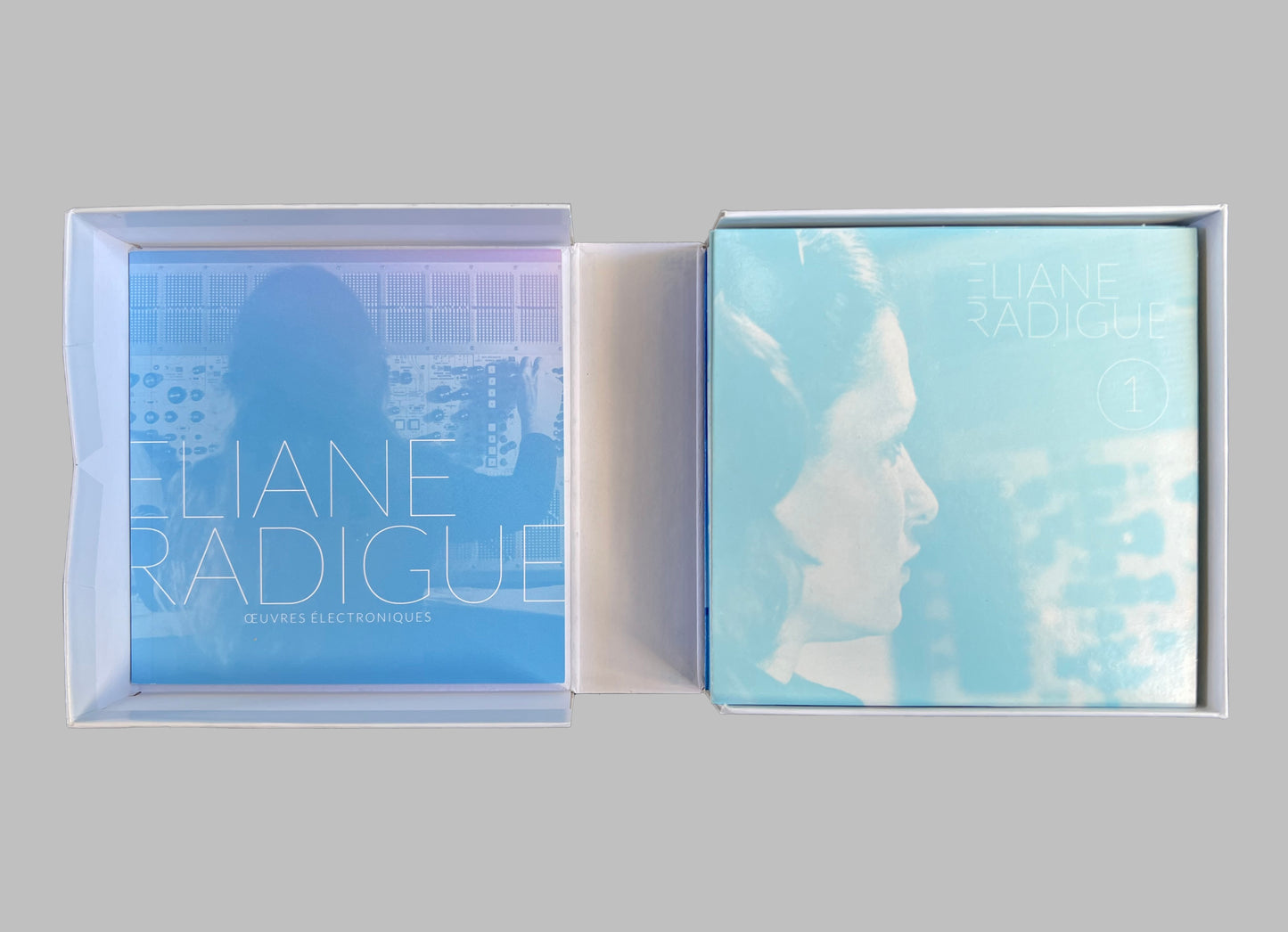
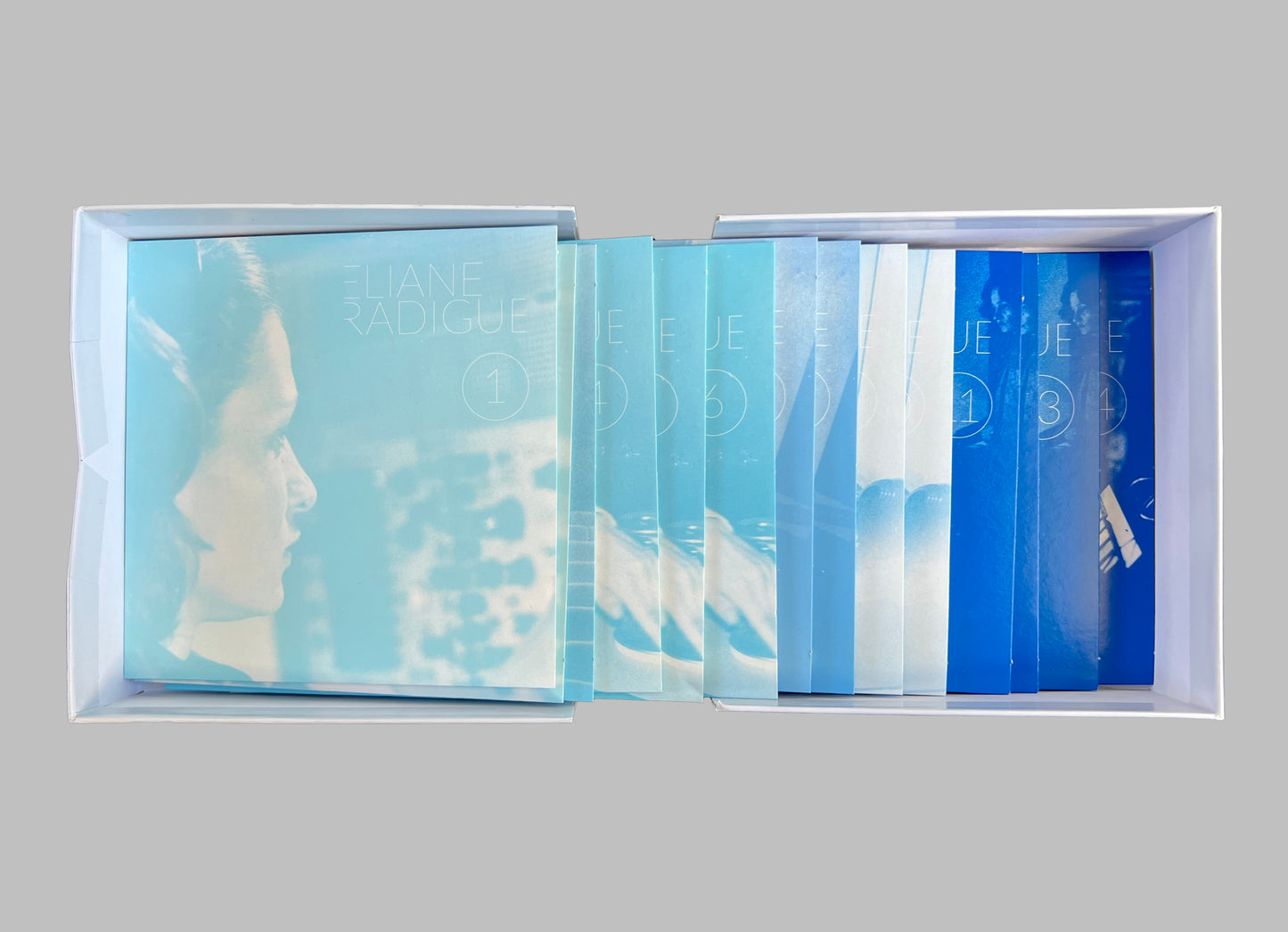
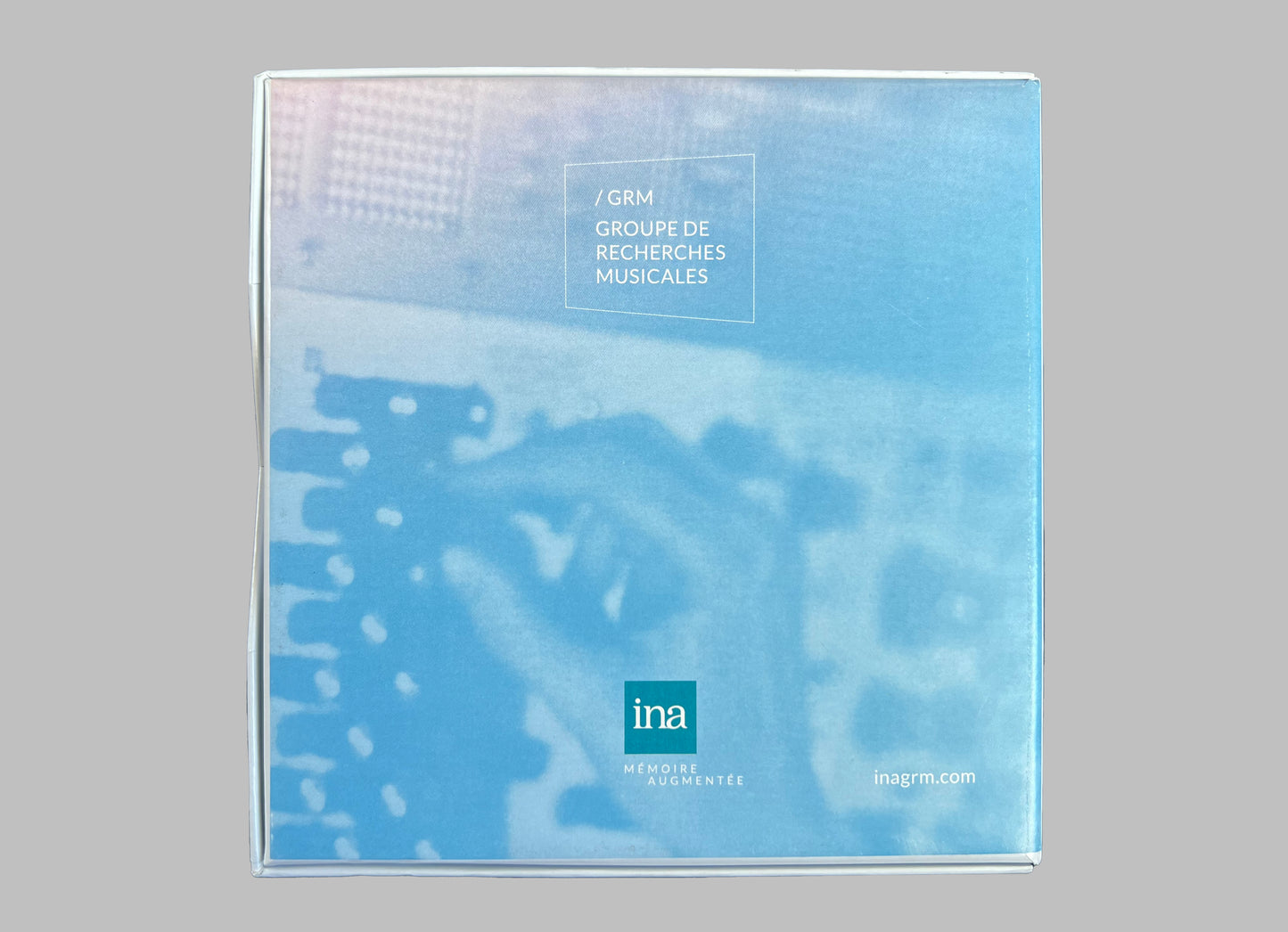
SPK ‘Information Overload Unit’ CD
45th Anniversary Edition
6 panel digipack
Includes 12 page booklet
Exclusive liner notes by Graeme Revell
Old Europa Cafe - OECD 341
'Sometimes I wish I could go back and hear the first two SPK records for the first time. I will truthfully say listening to these two reissue CDs from Old Europa Cafe has only further instilled my belief that describing these two records as 'influential' is the greatest understatement. ‘Information Overload Unit’ came out in 1979; listen to it. YES this was recorded in 1979. I’m sorry but ‘highest possible recommendation’. - Ross
WARNING GRAPHIC CONTENT:
Share
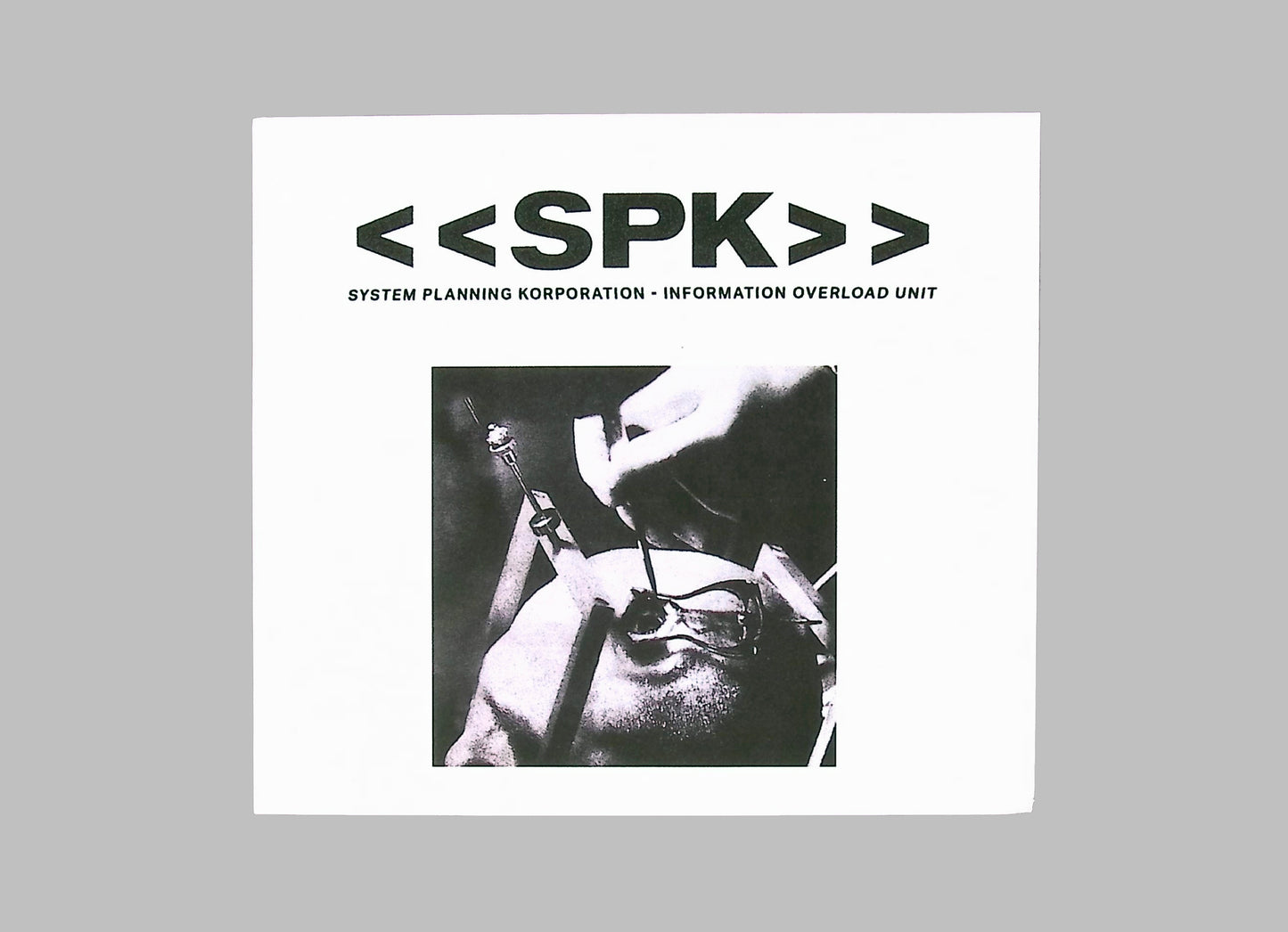
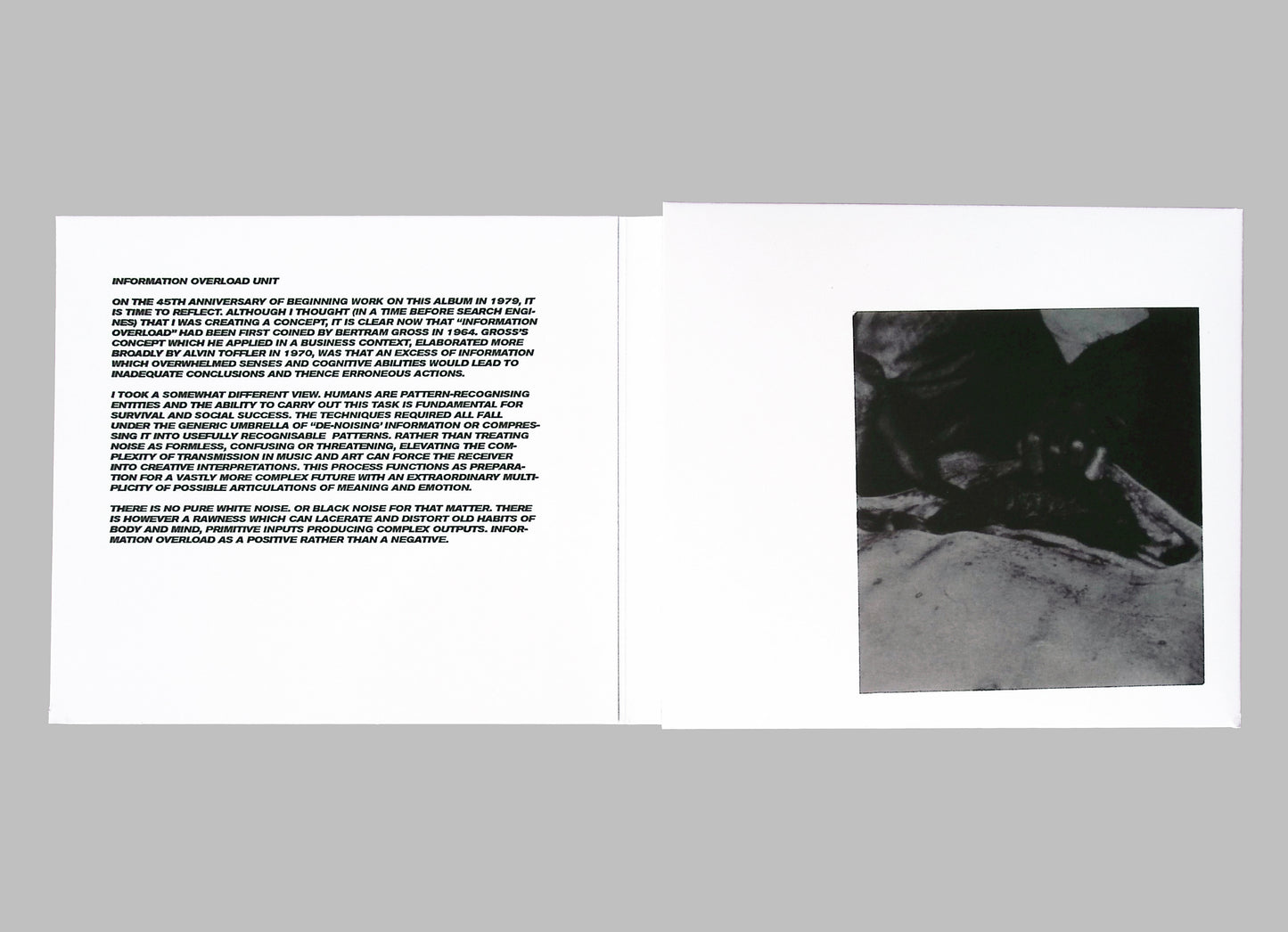
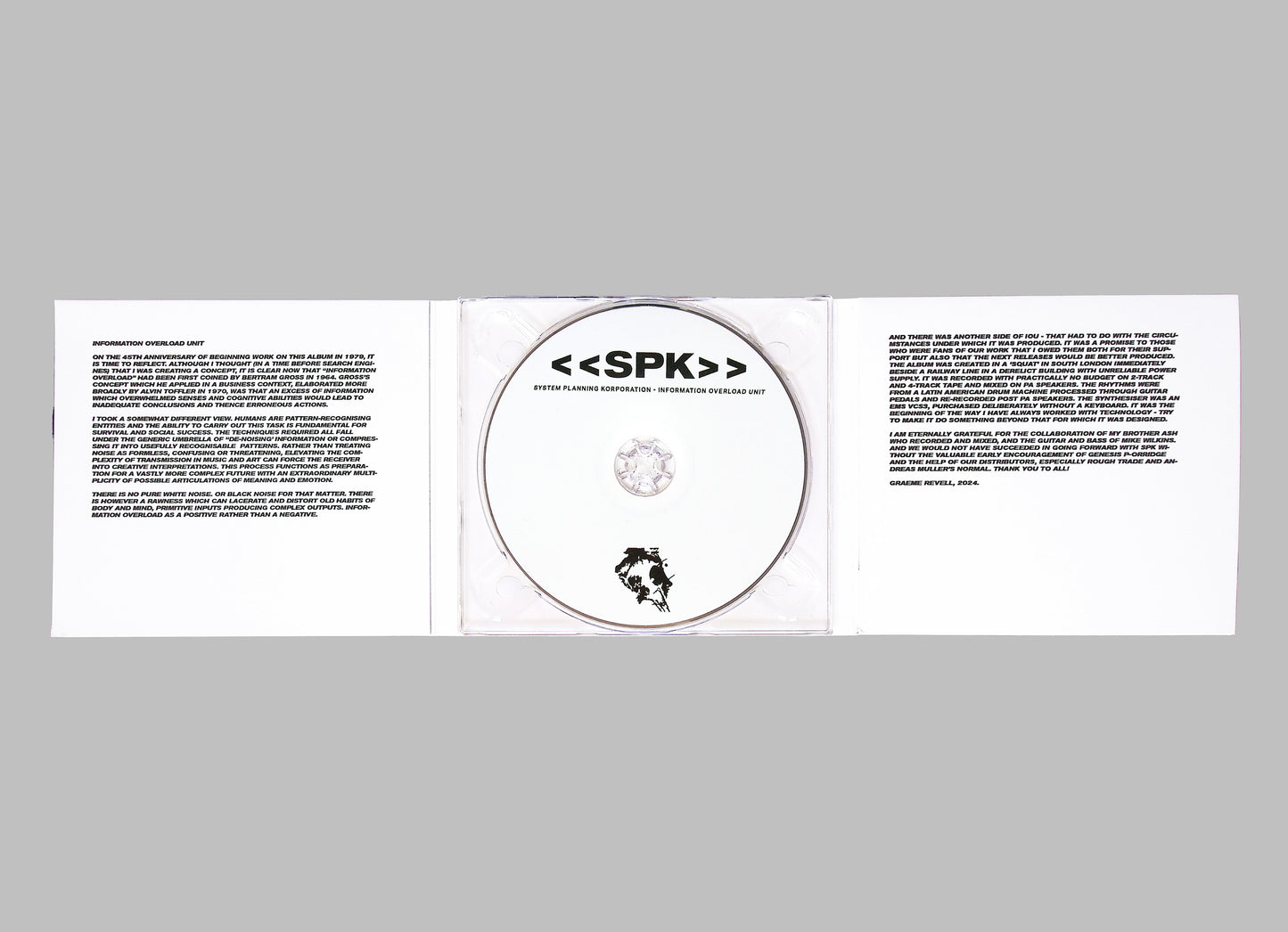
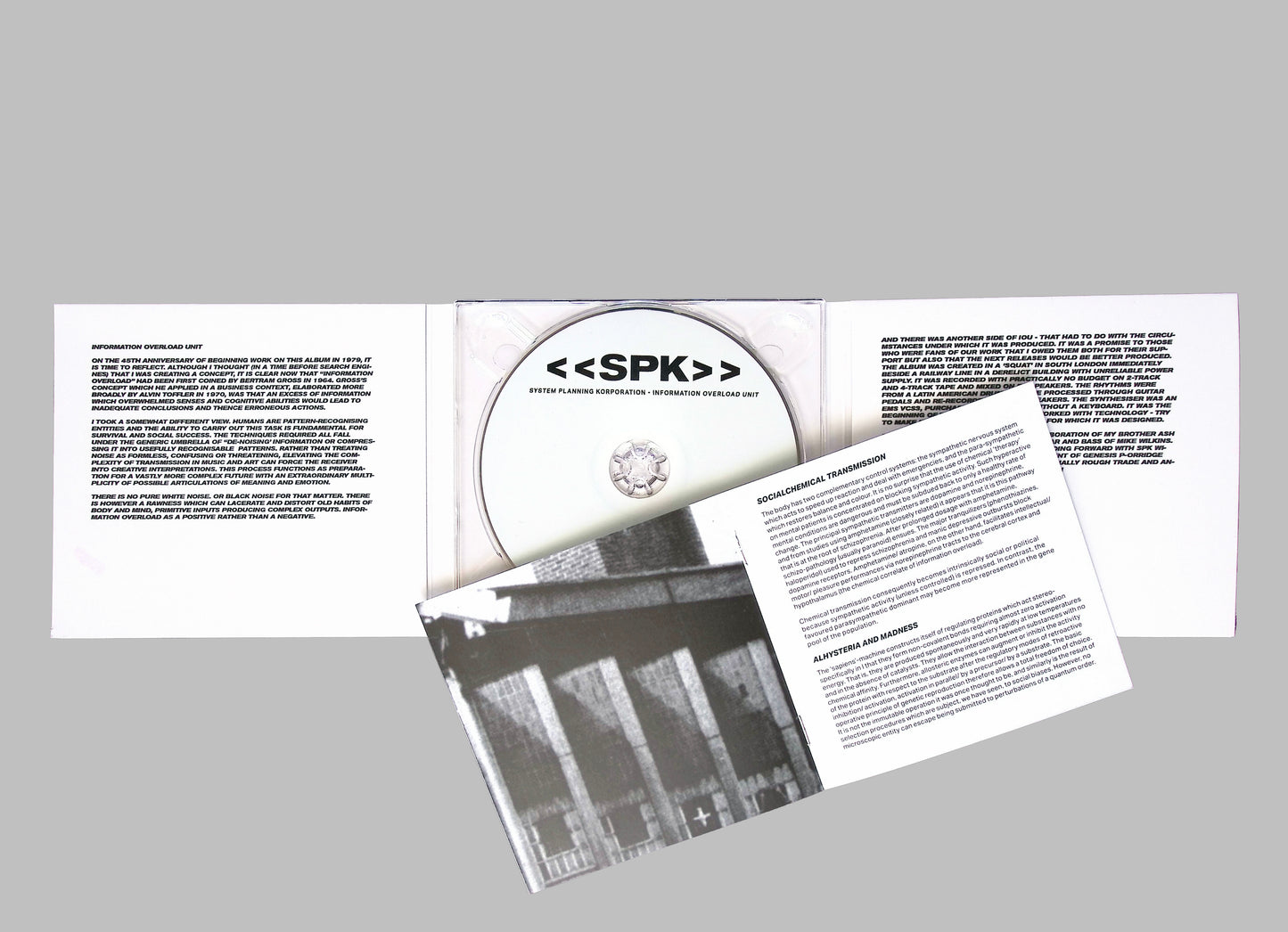
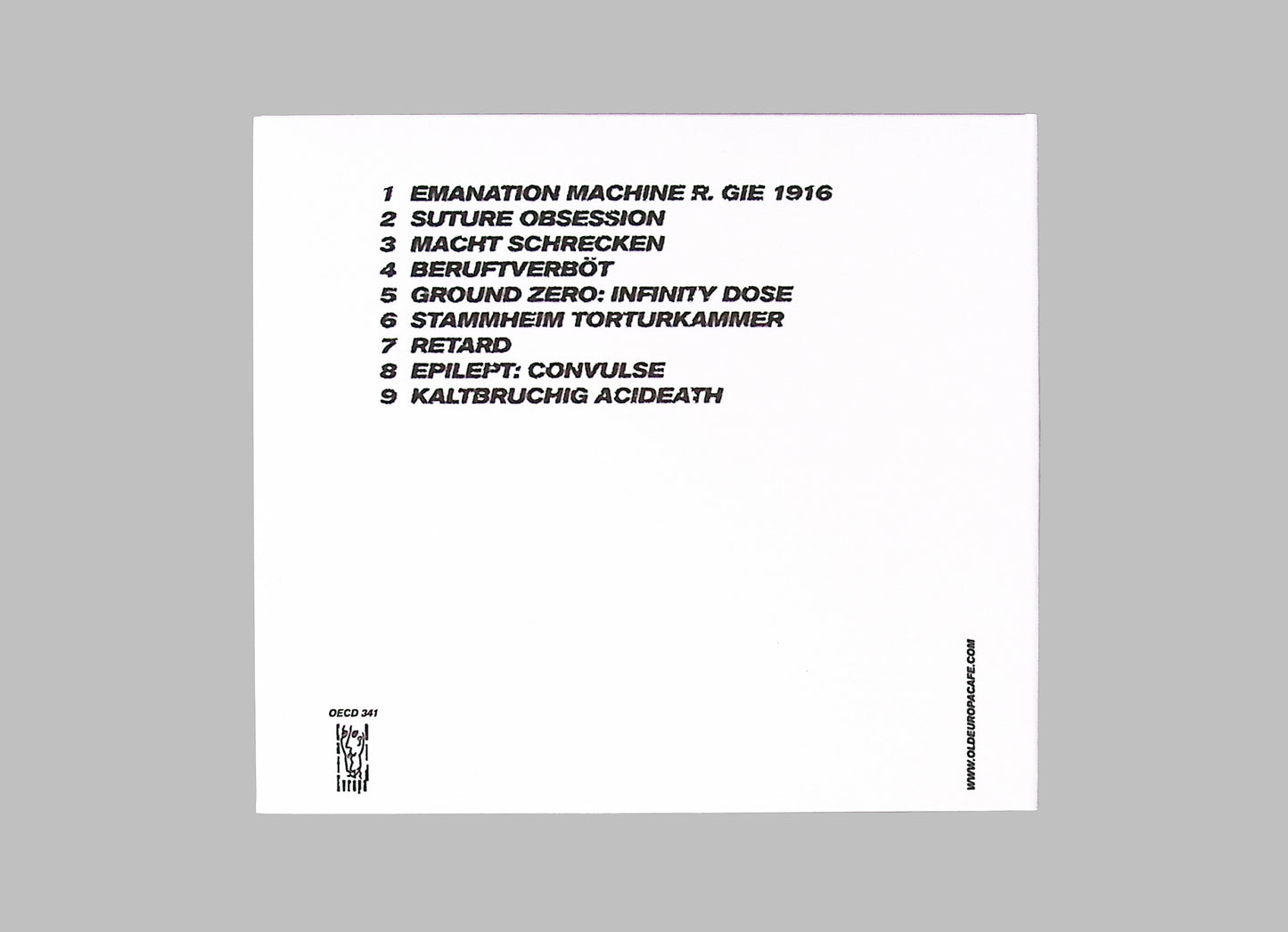
SPK ‘Leichenshrei’ CD
6 panel digipack
Exclusive liner notes by Graeme Revell (2019)
Old Europa Cafe - OECD 274)
'What to say about ‘Leichenshrei’? If you haven’t drank the juice of ’79s ‘Information Overload Unit’. ‘82s ’Leichenshrei’ is going to force feed you through the rustiest funnel you can imagine. SPK reveals its ambitions; their sound becomes more refined but still unmuzzled and foaming through its rotting teeth. This is getting graphic; don’t turn it off. Play it again (and does it get any louder?). Change your life. ALL TIMER.' - Ross
WARNING GRAPHIC CONTENT:
Share
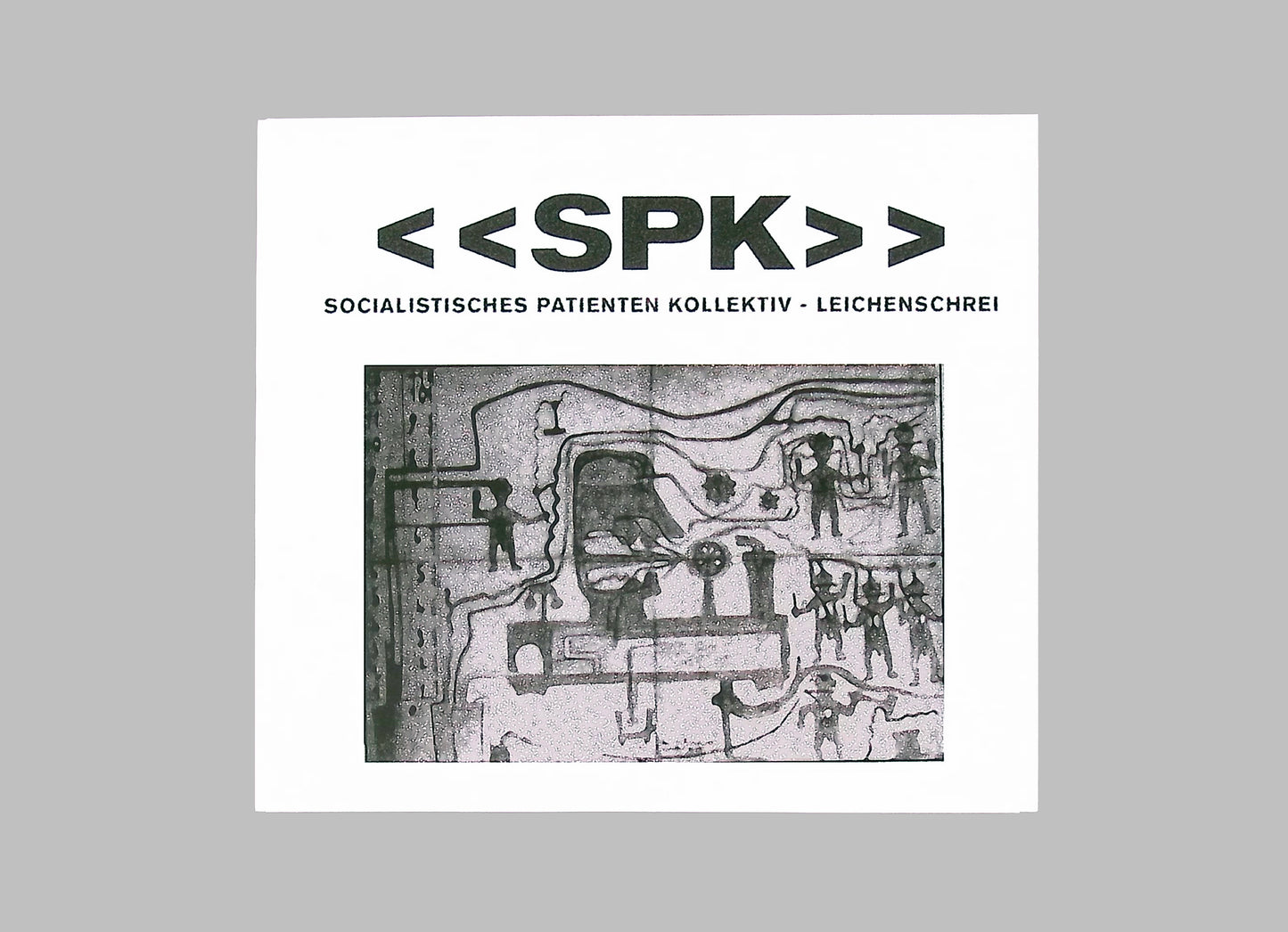
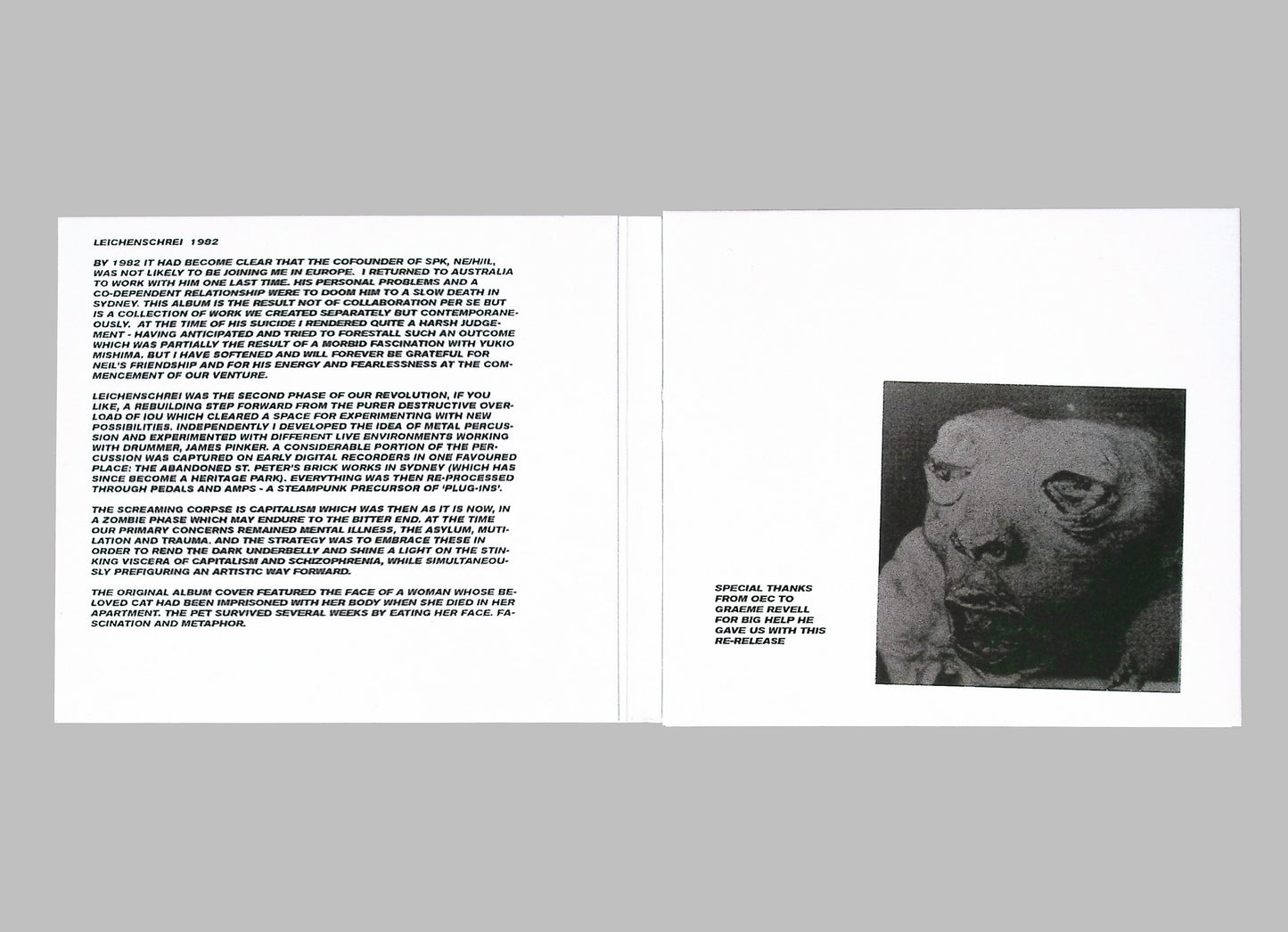
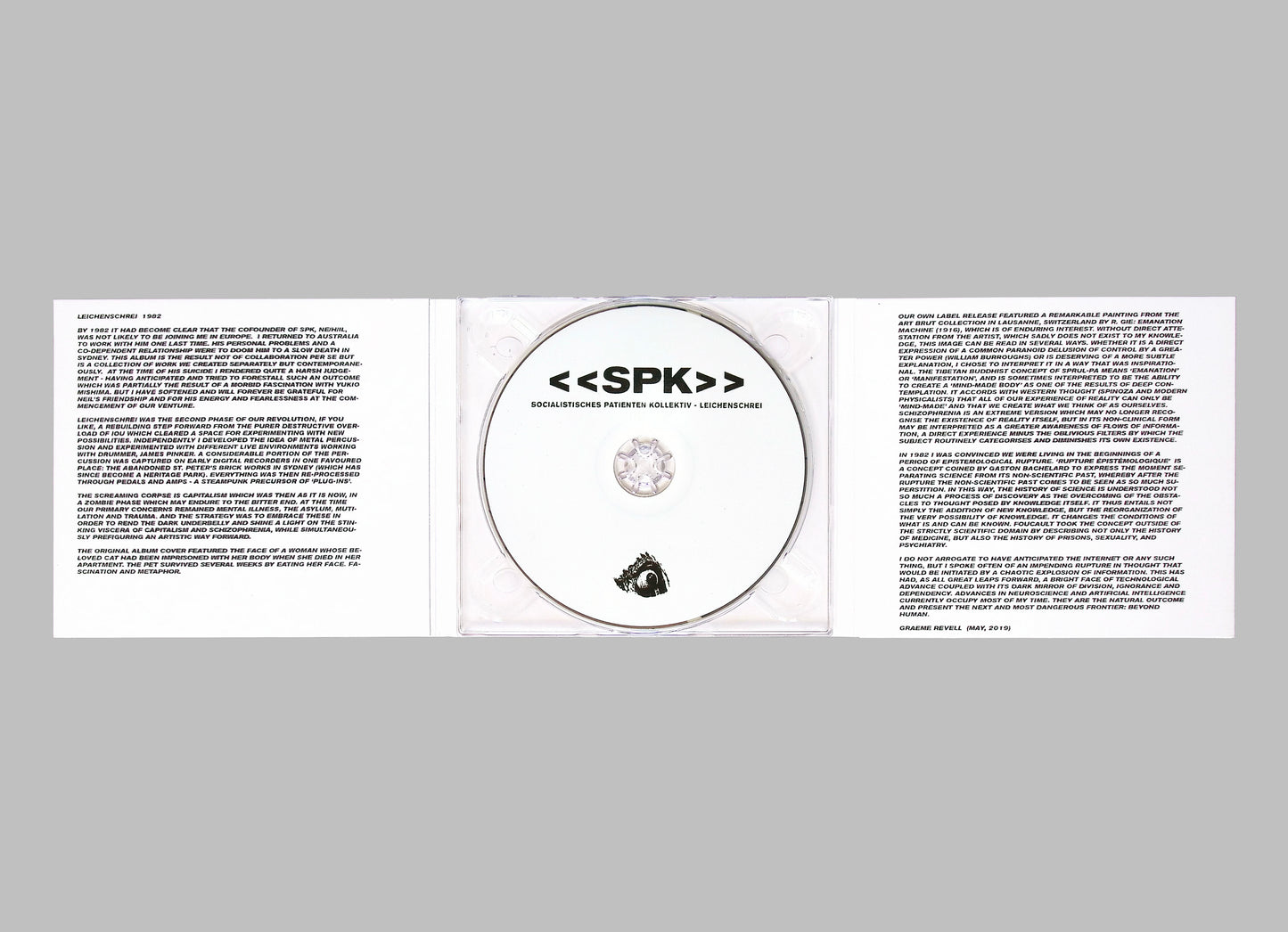
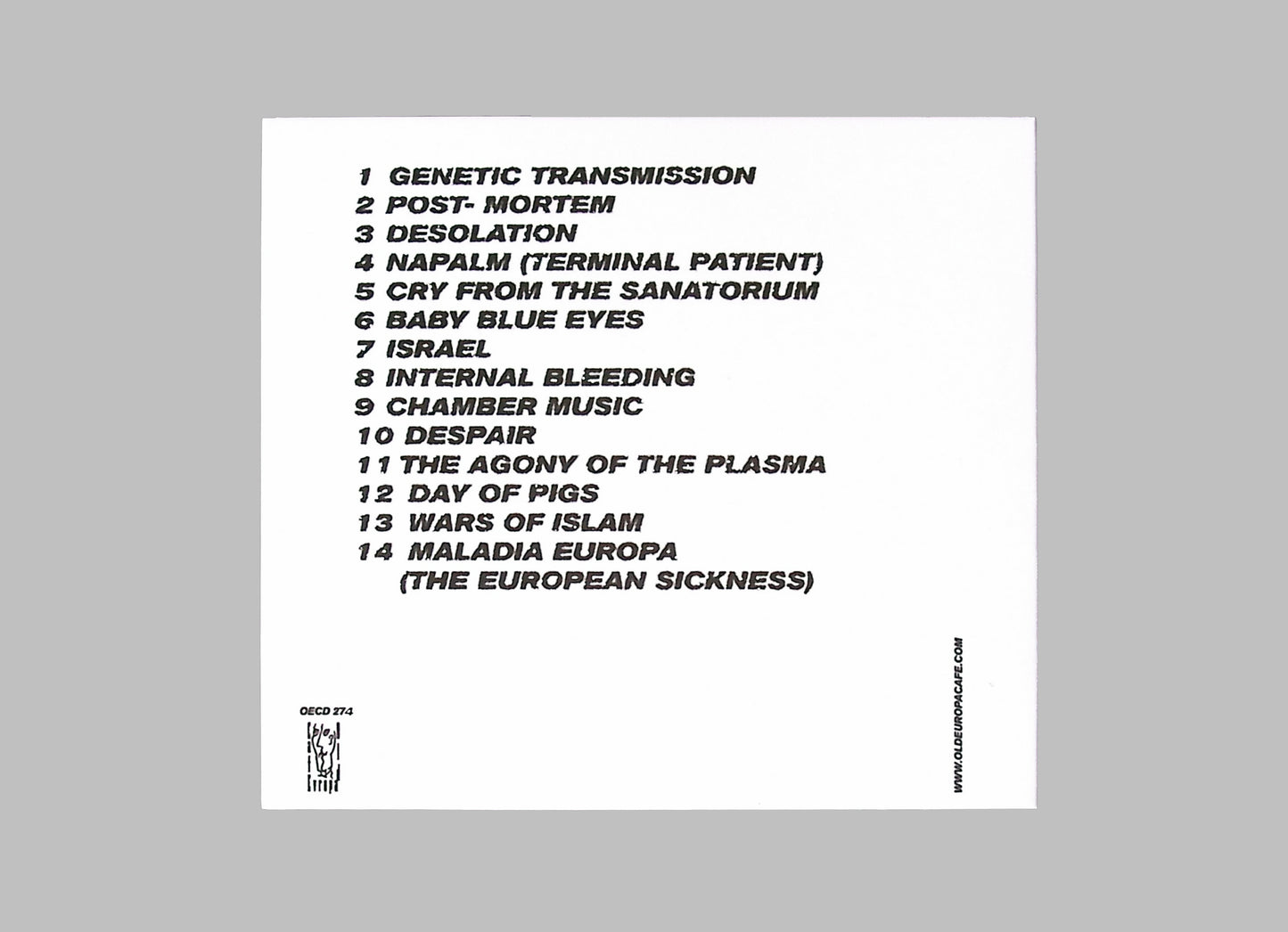
Slot Machine Music by Adrian New (Hanson - HN271 (2014)) Picture Disc LP
Picture Disc Vinyl LP
Stiff Polysleeve
Includes insert w/ description
Edition of 500
Recordings and Photographs by Rew
Layout and Production by Dilloway
Mastering by Lescalleet
2014 Interview w/ Rew (Quietus)
Adrian Rew Bandcamp
"It must have been around 2014 when I first encountered this record and I've thought about it ever since. 'Transcendent' and 'eloquent'; beautiful stuff. 'Good luck!' - Ross
Artists Description:
Slot Machine Music: field recordings from middle American casinos.
"Chance animates the smallest parts of the universe: the scintillation of the stars is its power, a wildflower its incantation."
- Georges Bataille, Le Petit
Video gambling addicts, academic researchers, and industry professionals alike describe the trancelike state into which problem gamblers suspend themselves with remarkable consistency: they unanimously call it the machine “zone”, a kind of inner experience during which the rhythmic flow of human-machine collusion borders on mysticism. Time is abolished in the act of contemporary video gambling—simulated slot reels roll, virtual poker decks deal, and all worldly concerns are lost—leaving only the aura of total zone immersion in its wake. Sometimes characterized as the crack cocaine of gambling, the intensity of the machine zone is a symptom of casino ergonomics: oxygen-saturated pleasure air, subtly controlling walkways, mesmerizing lights, and, as captured here, meticulously engineered sonic environments all play a role in evoking the timeless void of the zone.
Although I was not yet aware of the extent to which casinos tailor their environments for maximum comfort (and, correspondingly, profit), I did know as I crossed the threshold of my first casino floor earlier this year that it would not be my last visit. Hit by a cornucopia of slot machine tones, triggering aleatorically and coalescing into shimmering masses, I was struck by the need to return and record the sounds that so entranced me. It wouldn't prove to be easy—casino security is intense (you can hear me get warned of the consequences of taking photos at the beginning of the disc's second track)—and due to the clandestine nature of the operation, my recording techniques were by no means sophisticated. Equipped with nothing but an Olympus LS-11 recorder's internal microphone stashed in a sweaty coat pocket, I allowed the lure of the zone to guide me through a series of ambling recording sessions over a period of four months, the best of which are included here.
I learned a lot about casino sonics in the process: game designers, for example, tune their machines to the key of C in order to optimize harmonic cohesion; one team of designers, the story goes, even spent a month perfecting a single 'ding' sound on one machine. In the interest of preserving the true ambient sounds of the casinos these recordings are completely untreated but, lost in the sea of chance, I did exert some affirmative control by means of meandering intent and actual playing of the games. With my playing of the machines I got a taste of the debilitating consequences that accompany the enchantment of video gambling. The disc in your hands represents my attempt to divorce the exhilarating fantasy of the casino from its unfortunate reality. May the zone run deep within you.
- Adrian Rew, 2013
Share
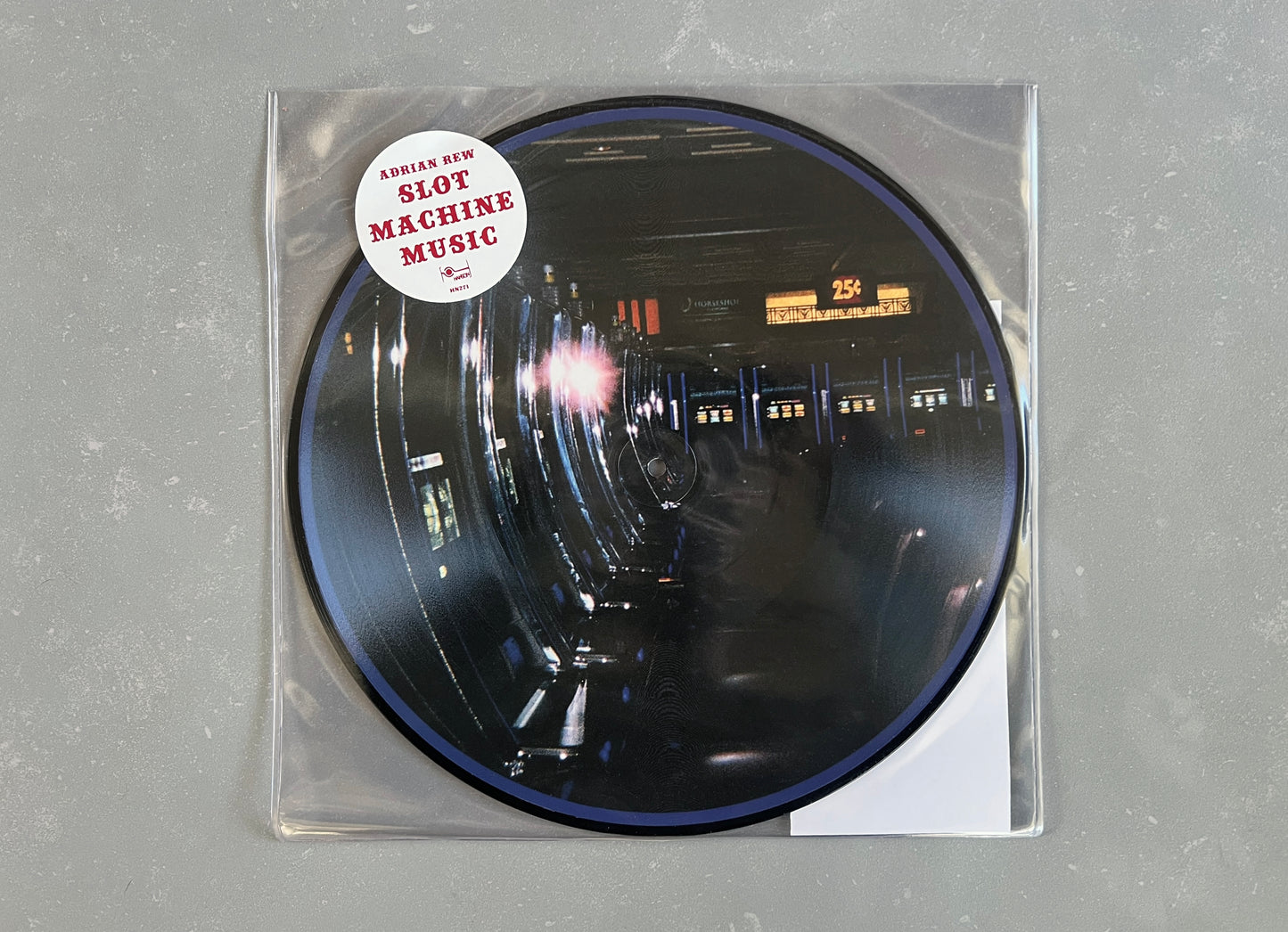
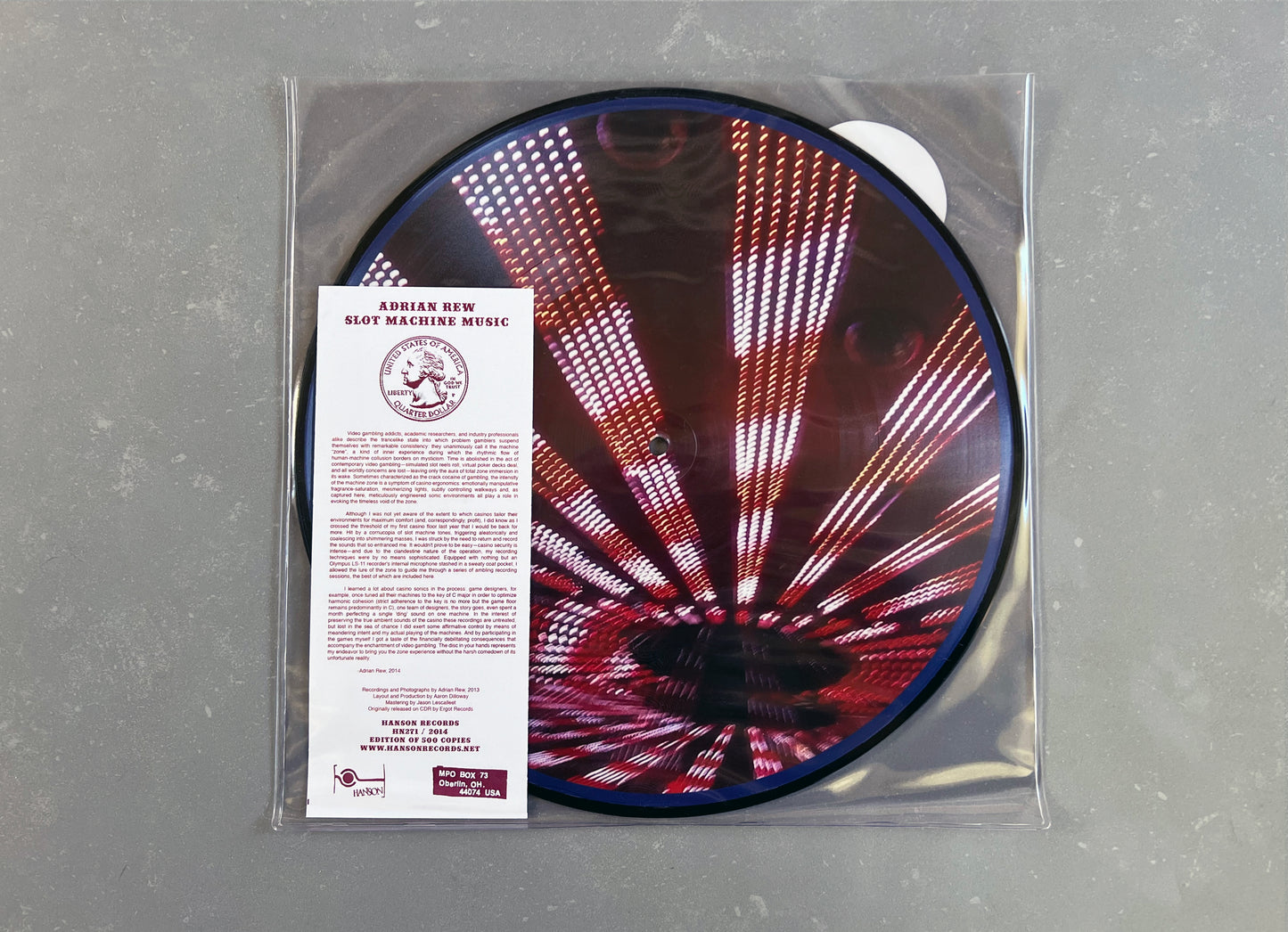
Roland Kayn 'Infra' 3CD Box
This is ‘it’. ‘Infra’. Turn the dial up and give the keys to Kayn. This one might be the best entry point for anyone looking to ‘dive in’. Enveloping and (some times) arresting. ‘Dynamic’ would be selling it short. Originally released in 1979 but could be released 15 years in the future and no one would question. Beautifully remastered by Jim O’Rourke and if you are familiar with his work on ‘Steamroom’; YEAH he’s ‘on the tip’ as well. Highest recommendation possible. Theres so much info; dive as deep as you’d like. - Ross
3xCD Boxset
Includes 17 page booklet
Reiger-records-reeks - KY-CD2201-03
Share
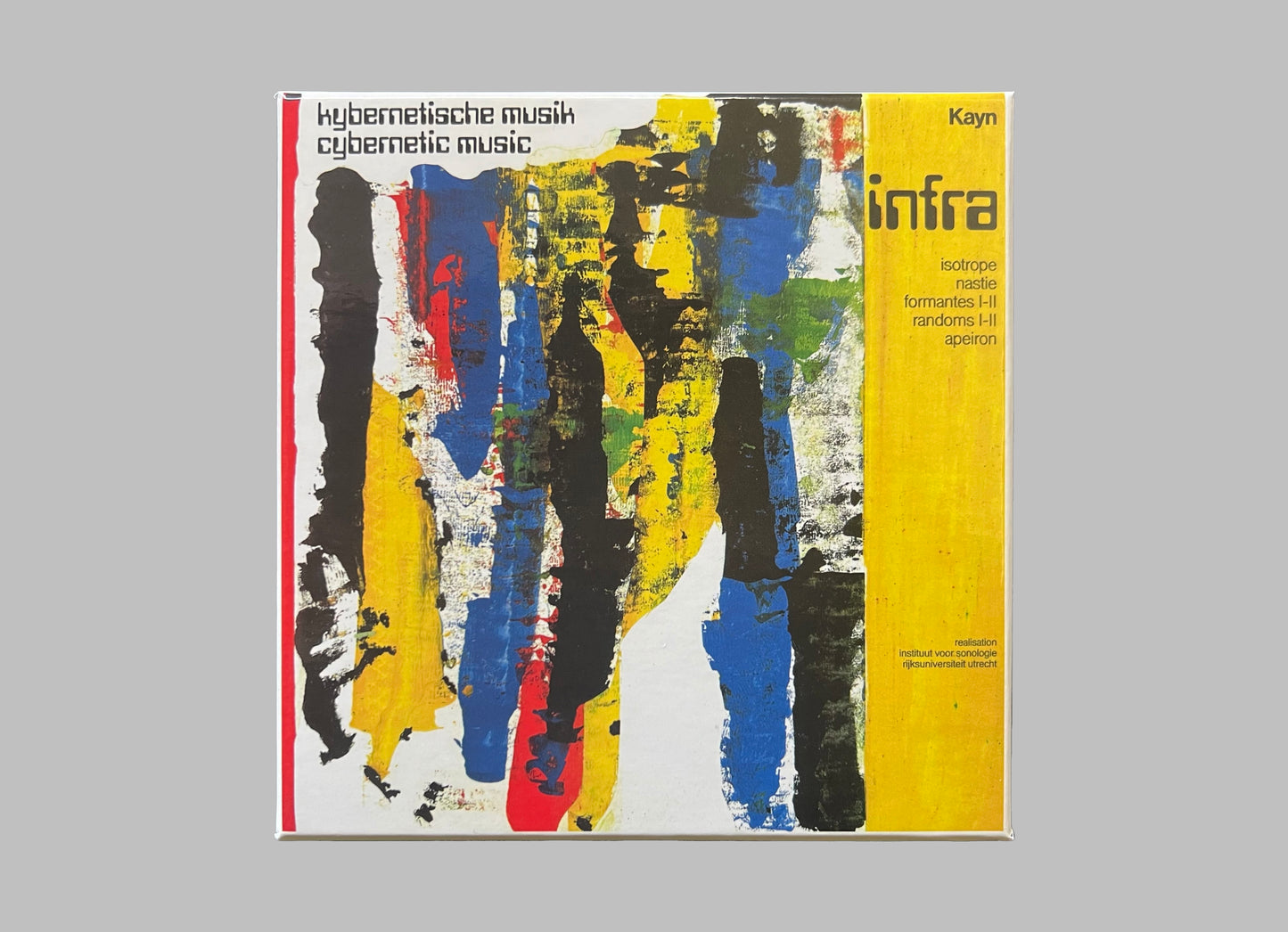
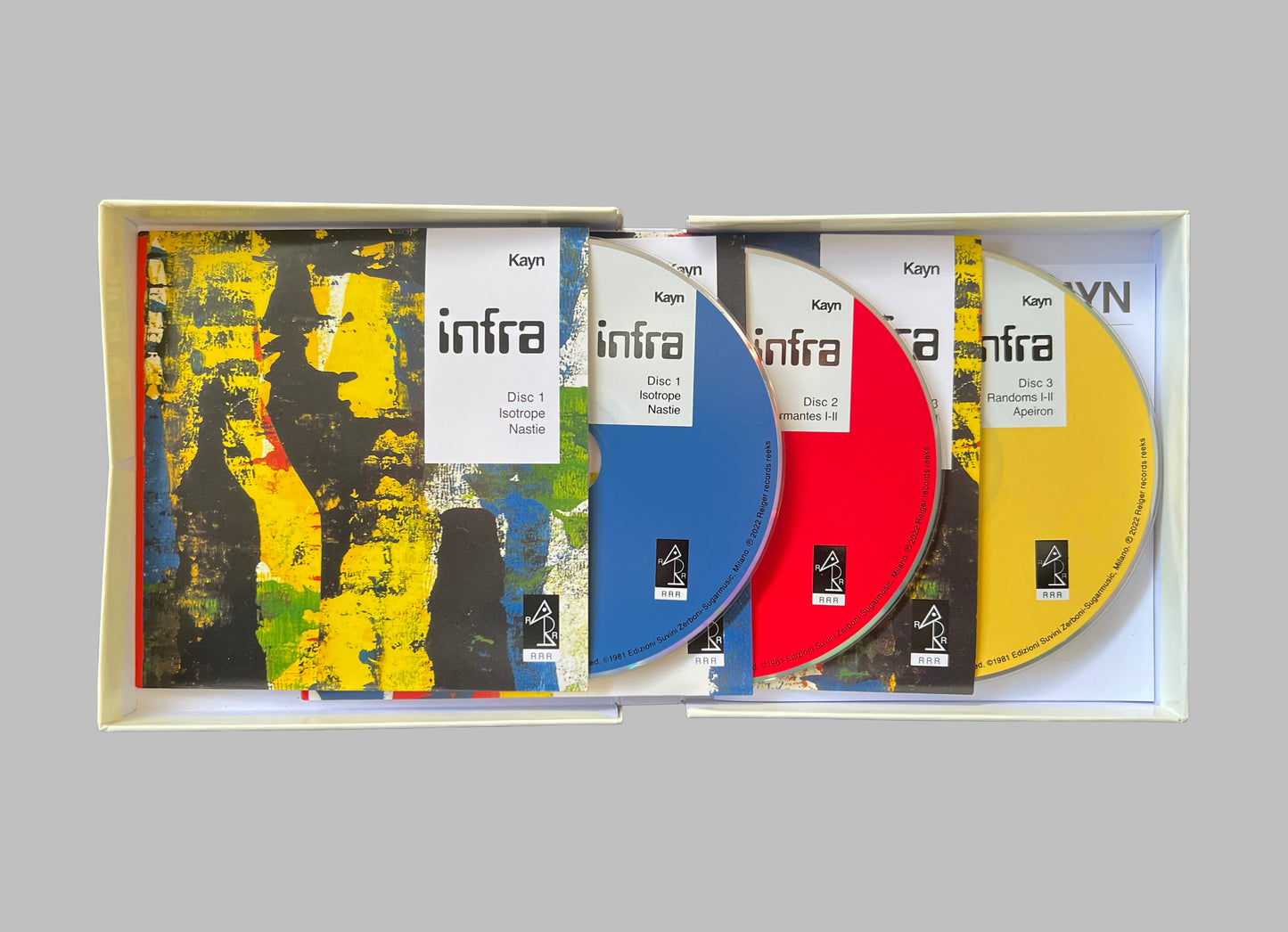
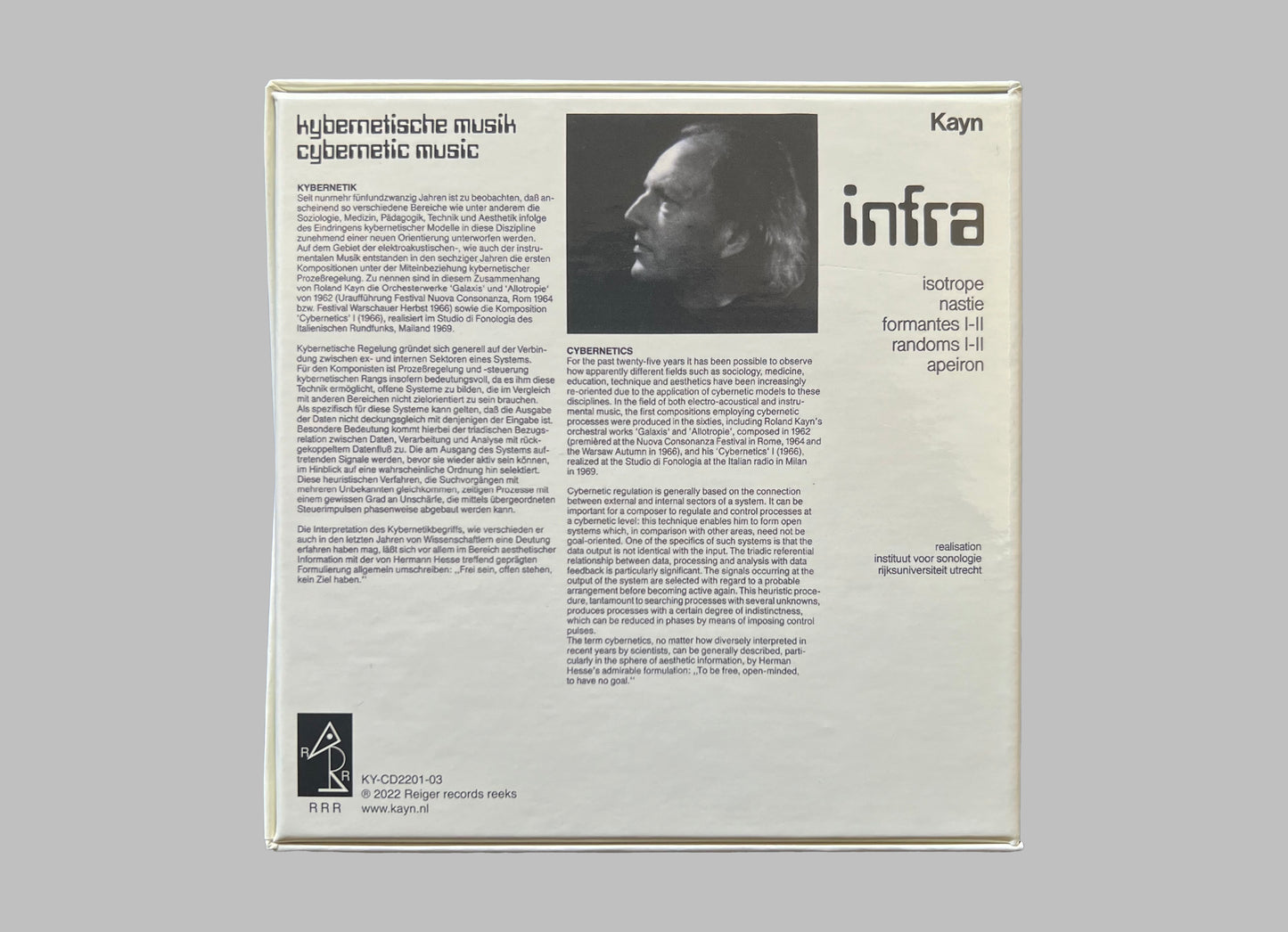
Coil - Musick To Play In The Dark CD (DAIS155)
Few groups in recent history forged as confounding and alchemical a body of work as Coil, the partnership of Peter 'Sleazy' Christopherson and John Balance. From album to album and phase to phase their recordings spelunk perplexing depths of esoteric industrial, occult electronics, and drugged poetry, both embodying and alienating parallel currents of their peers. The late 1990's in particular were a fertile era for the duo, embracing chance, chaos, and collaboration, enhanced by recent advancements in synthesis and sampling. Fittingly, at the summit of the decade's long, intoxicated arc, their divergent strains of interstitial ritual congealed into one of Coil's most celebrated and hallucinatory creations: Musick To Play In The Dark.
Convening at Balance and Christopherson's vast Victorian house / studio in the coastal town of Weston-super-Mare, they began a series of ambitious sessions aided by inner circle associates Thighpaulsandra and Drew McDowall. Although the creative process was admittedly “iterative” and “a bit of a drug blur,” the results are astoundingly inventive and well realized, winding through shades of divination dirge, wormhole kosmische, noir lounge, ominous humor, and black mass downtempo, guided by Balance's cryptic lunar muse, which he announces on the opening track: “This is moon musick / in the light of the moon.”
What's most remarkable about the album 20 years after its release is how brazen, insular, and unpredictable it still feels. The songs follow an allusive, altered state logic all their own, warping from microscopic ripples of glitch and breath to widescreen warlock psychedelia and back again, as much hyper-sensory as inter-dimensional. Even within a catalog as eclectic as Coil's, Musick is a mystifying collection, oneiric evocations of desire, decadence, dinner jazz, and dietary advice, far beyond the pale of whatever gothic industrial ambiguity birthed such a journey.
The record closes with a slow, starlit shuffle, bathed in seething sweeps of spectral texture and high cathedral keys, like approaching the altar of some arcane temple. As the trance thickens Balance's voice rises, processed into an increasingly eerie, gaseous haze, but he resists these unseen forces, intent on delivering a final sermon: “Through hissy mists of history / the dreamer is still dreaming / the dreamer is still dreaming.”
Share





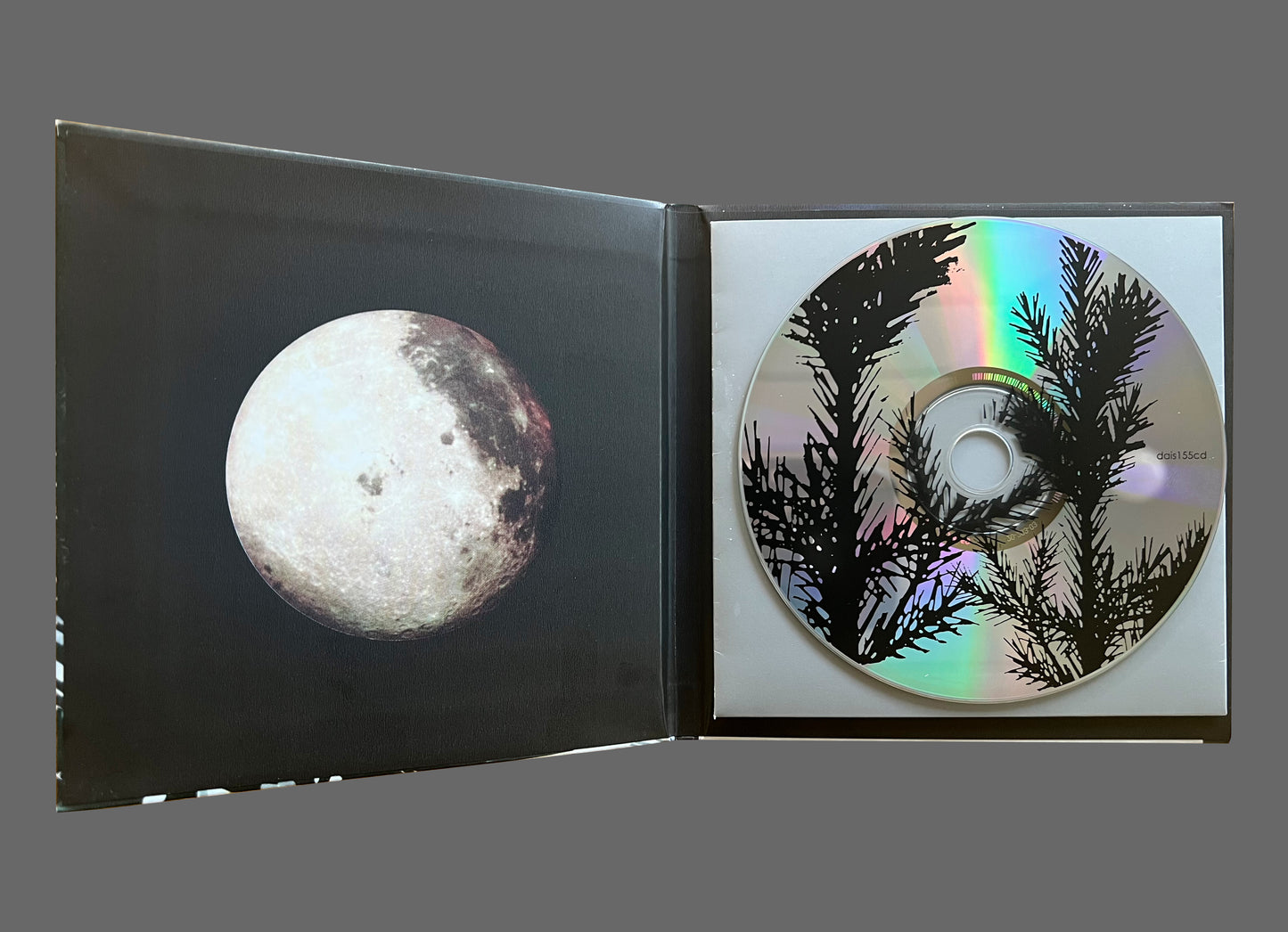
Coil - Musick To Play In The Dark² CD (DAIS184)
After leaving London in 1999 for the sleepy seaside retiree town of Weston-super-Mare, Coil co-founders John Balance and Peter “Sleazy” Christopherson set up shop in a palatial eight-bedroom estate to pursue the outer reaches of the group’s heightening cabalistic chemistry. Among the staggering string of late-era masterpieces they produced is lunar opus Musick To Play In The Dark, widely hailed as an artistic zenith upon its release. The sessions that birthed it were in fact so fruitful that a second LP took shape during the creation of the first one.
Aided by the recent addition of Welsh multi-instrumentalist engineer Thighpaulsandra, Coil mined further into the recesses of surrealist eldritch electronica Balance termed “moon music” – post-industrial spellcasting at the axis of narcotic and nocturnal energies. Musick To Play In The Dark² spans a full witching hour of bad acid sound design, synthesizer voyaging, opiated balladry, Luciferian glitch, and subliminal hymnals, alternately ominous, oracular, and absurd. Scottish gothic icon Rose McDowall guests on vocals for two tracks but otherwise the album is a hermetic affair, tapping into the group’s limitless insular synergy.
Opener “Something” is stark and incantational, a spoken word experiment for windswept voids. “Tiny Golden Books” unspools an aerial whirlpool of cosmic synth, both whispery and widescreen. “Ether” is an exercise in funeral procession piano and intoxicated wordplay (“It's either ether or the other”), while “Where Are You?” and “Batwings – A Liminal Hymn” lurk like liturgical murmurings heard on one’s death bed, framed in granular FX and flickering candlelight.
As a whole the collection skews more muted and remote than its predecessor, as if having grown accustomed to the nether regions of these darkening seances. But music box hallucination “Paranoid Inlay” captures the group’s oblique comedic side, always glimmering beneath: over a warped, wobbly beat Balance intones an opaque narrative of serenity, Saint Peter, and suicidal vegetables, accompanied by spiraling harpsichord and stuttering squelches of electronics. “It seems concussion suits you,” he repeats twice, like a macabre pickup line, before dictating a dear diary entry about risks and failures, finally concluding with as close to a self-portrait as Coil ever came: “On a clear day I can see forever / that the underworld is my oyster.”
Share






Coil - Time Machines CD (DAIS 103)
Initially a rough demo tape recorded solely by Coil member Drew McDowall, Time Machines started to take full form when McDowall enthusiastically delivered these demo recordings to bandmates John Balance and Peter 'Sleazy' Christopherson as sketches for a new Coil project with the primary goal of shifting Coil’s sound further into a more conceptually abstract direction. Largely recorded in 1997 using single takes with minimal post production, these four drones contain every intended fluctuation and tone, along with every glitch of the original – “Artifacts generated by your listening environment are an intrinsic part of the experience.
Each of the four pieces on Time Machines is named after the chemical compound of the hallucinogenic drug that they were composed for. Time Machines was meticulously crafted to enable what John Balance referred to as "temporal slips" in time and space, allowing both the artist and audience to figuratively "dissolve time".
The compact disc edition includes reproductions of the six original vinyl stickers and comes housed in a gatefold chipboard digipack featuring spot gloss overlay.
Share








Coil - The Ape Of Naples 2xLP (IMPREC174)
2023 repress. Double LP. Re-cut from original Peter Christopherson approved masters. The Ape Of Naples is Coil's highly celebrated final album completed by Peter Christopherson following the tragic death of Jhonn Balance in 2004. Often noted for being a fan favorite, The Ape Of Naples uses Balance's final recordings and material recorded at Trent Reznor's studio in New Orleans to create a deep, heavy masterpiece. Packaged in a heavy tip-on gatefold sleeve with Ian Johnstone's original artwork coated in a custom spot gloss. Each LP is house in a printed inner sleeve and side D is printed with all three original etchings. Lyrics are printed across the gatefold.
Share






